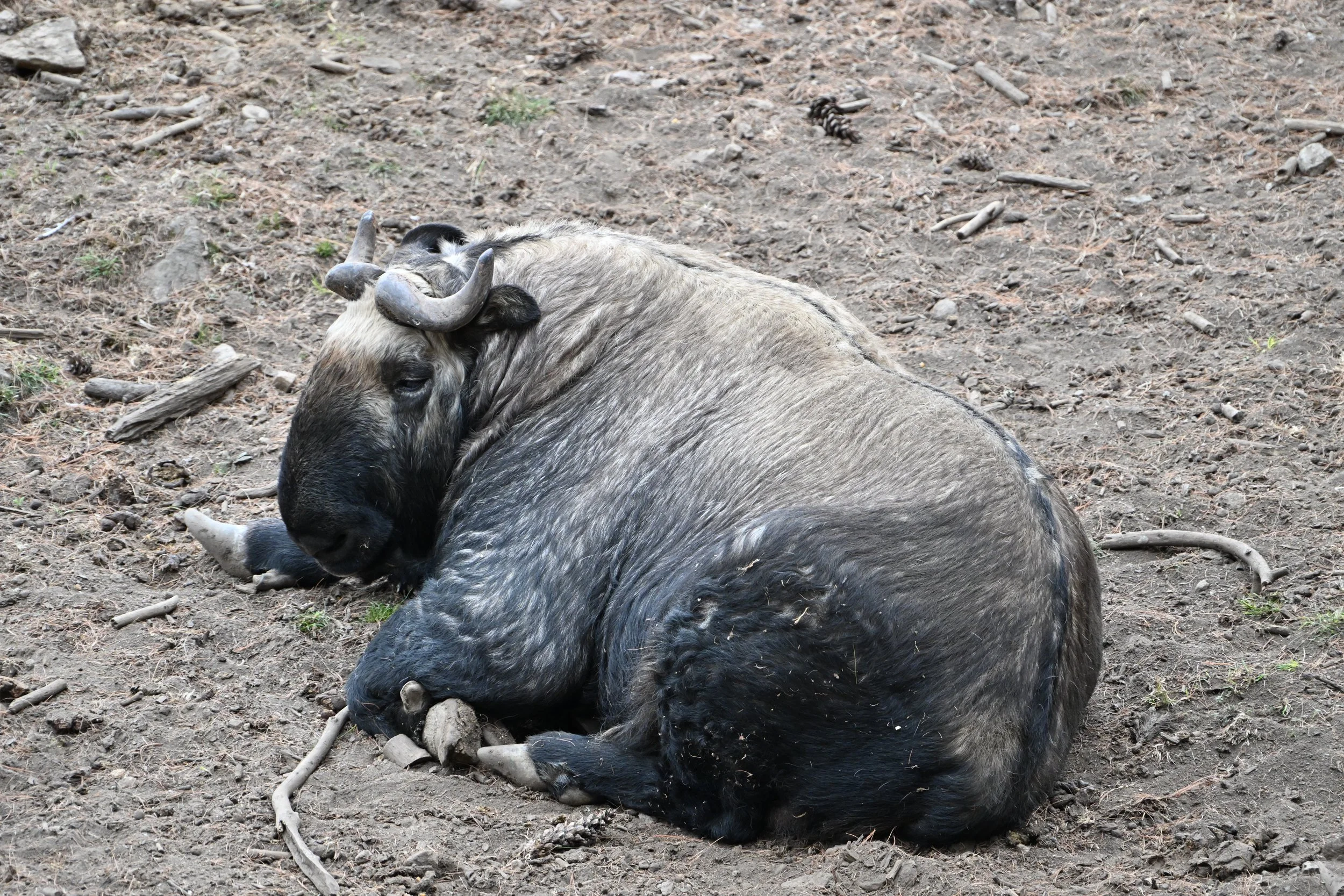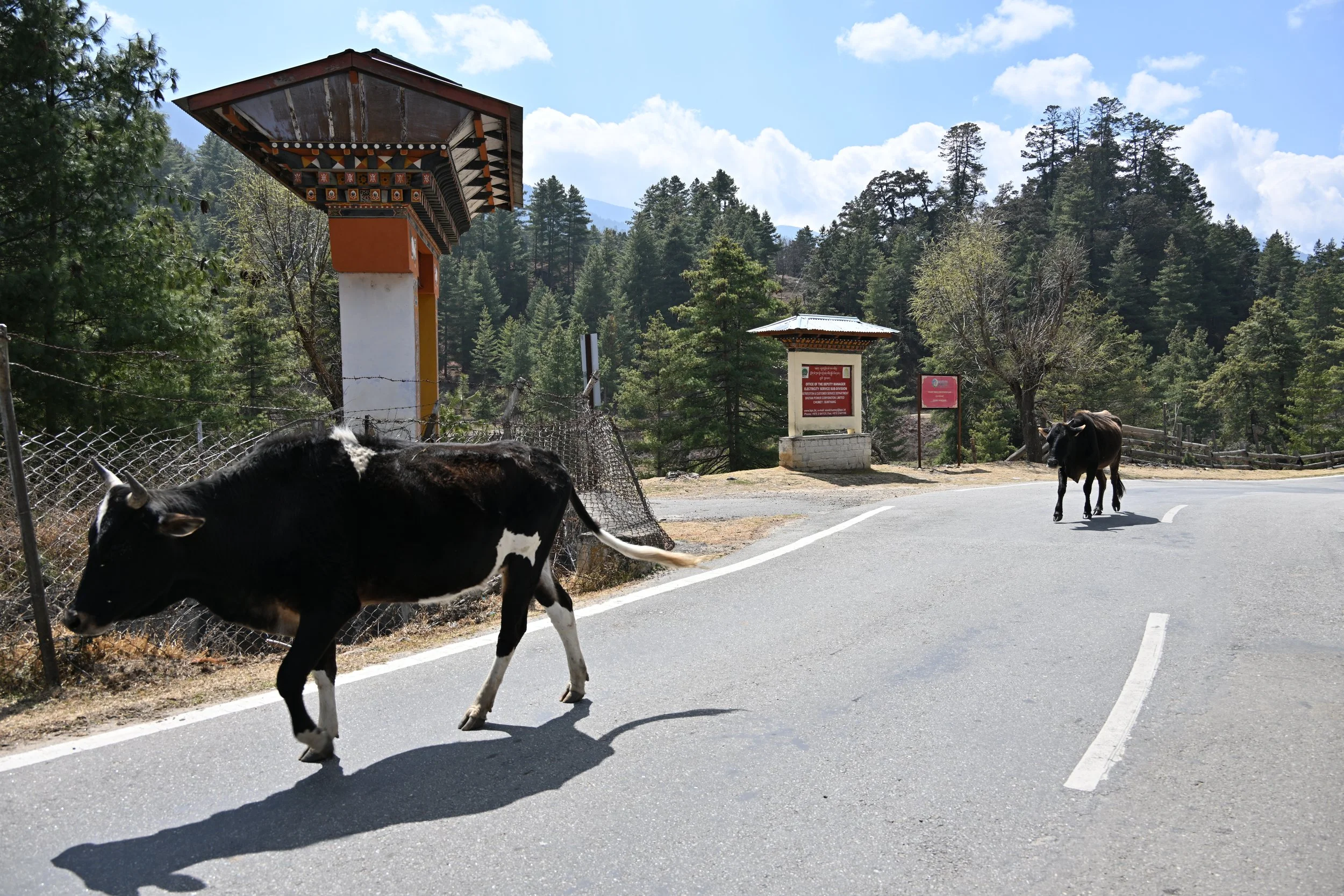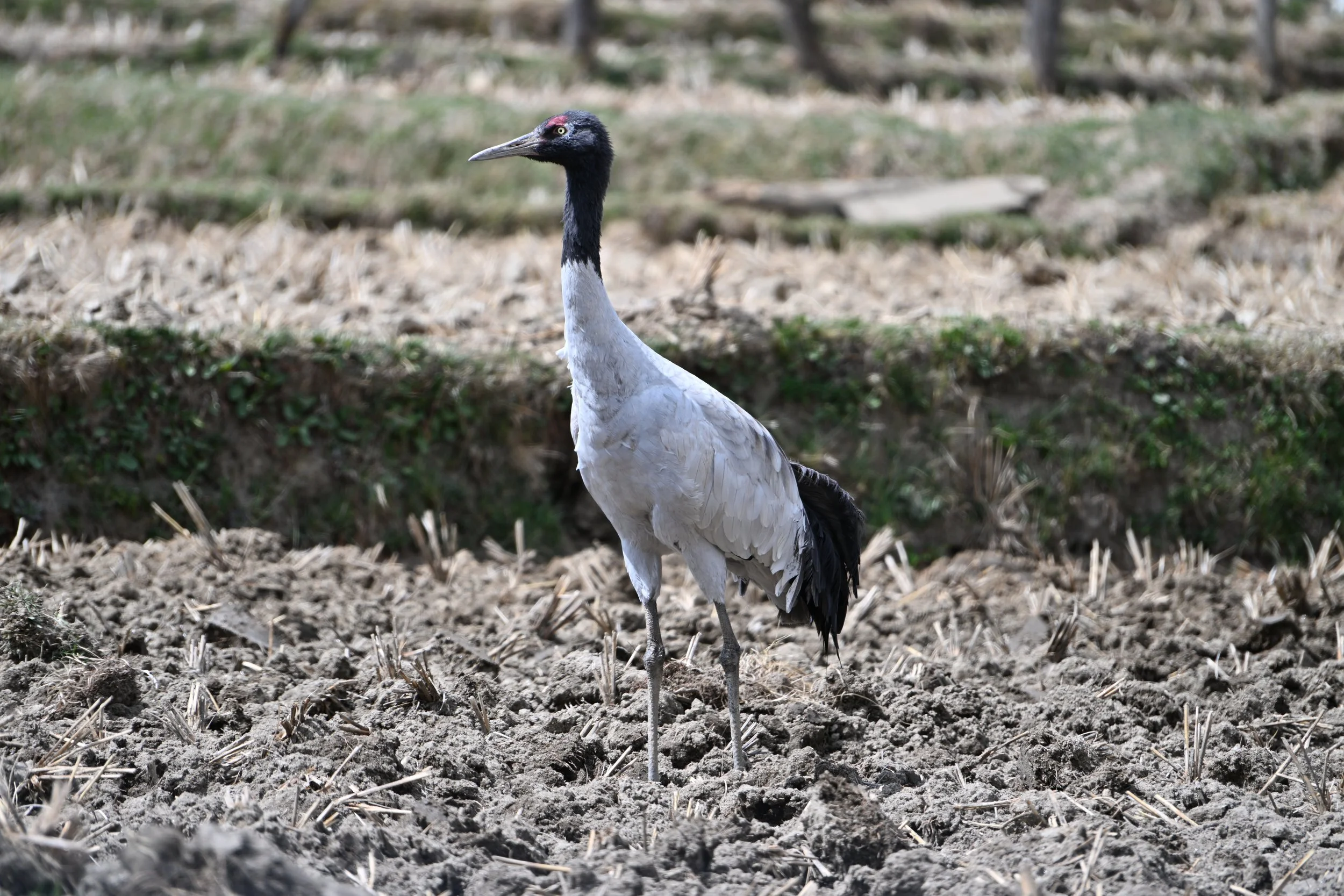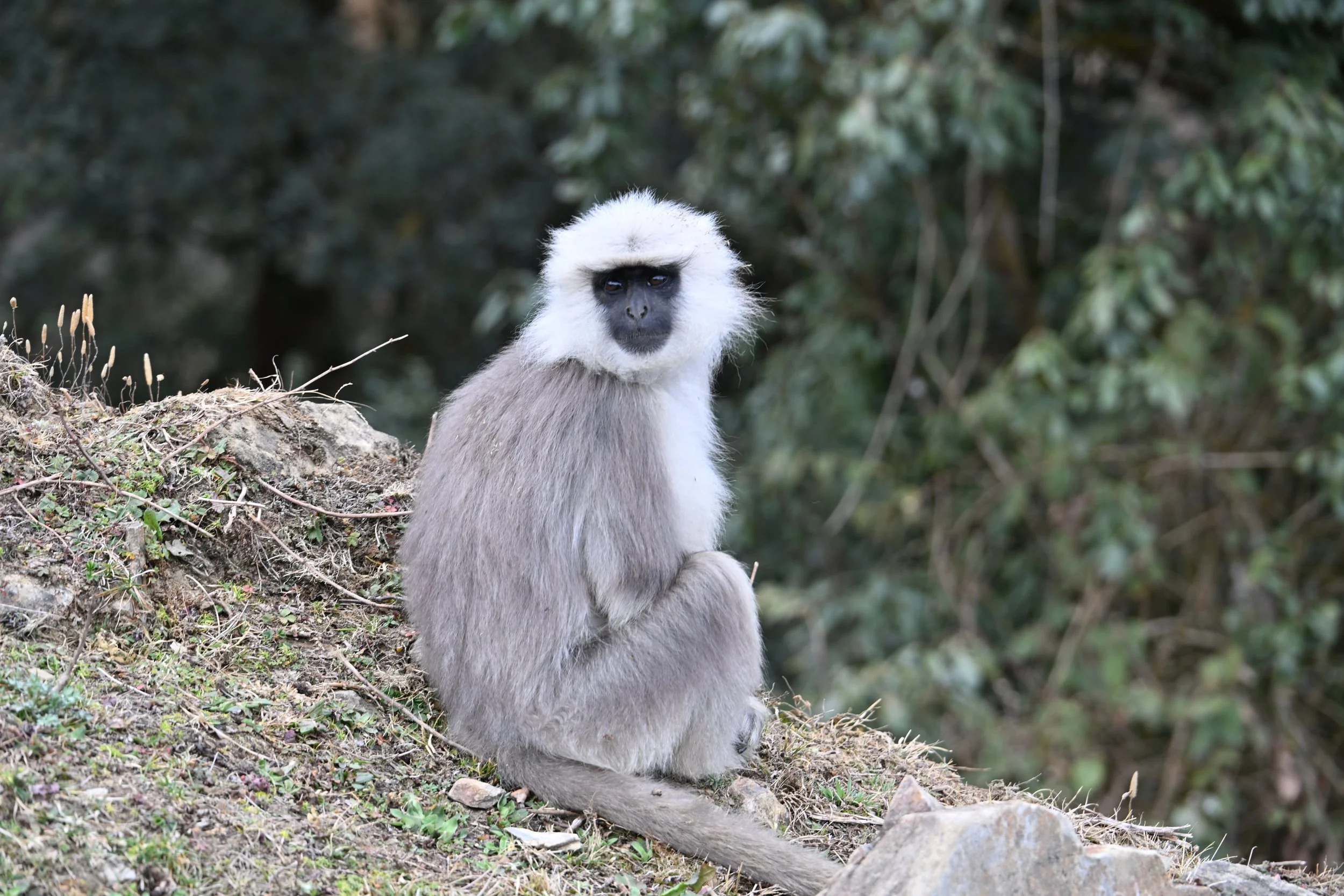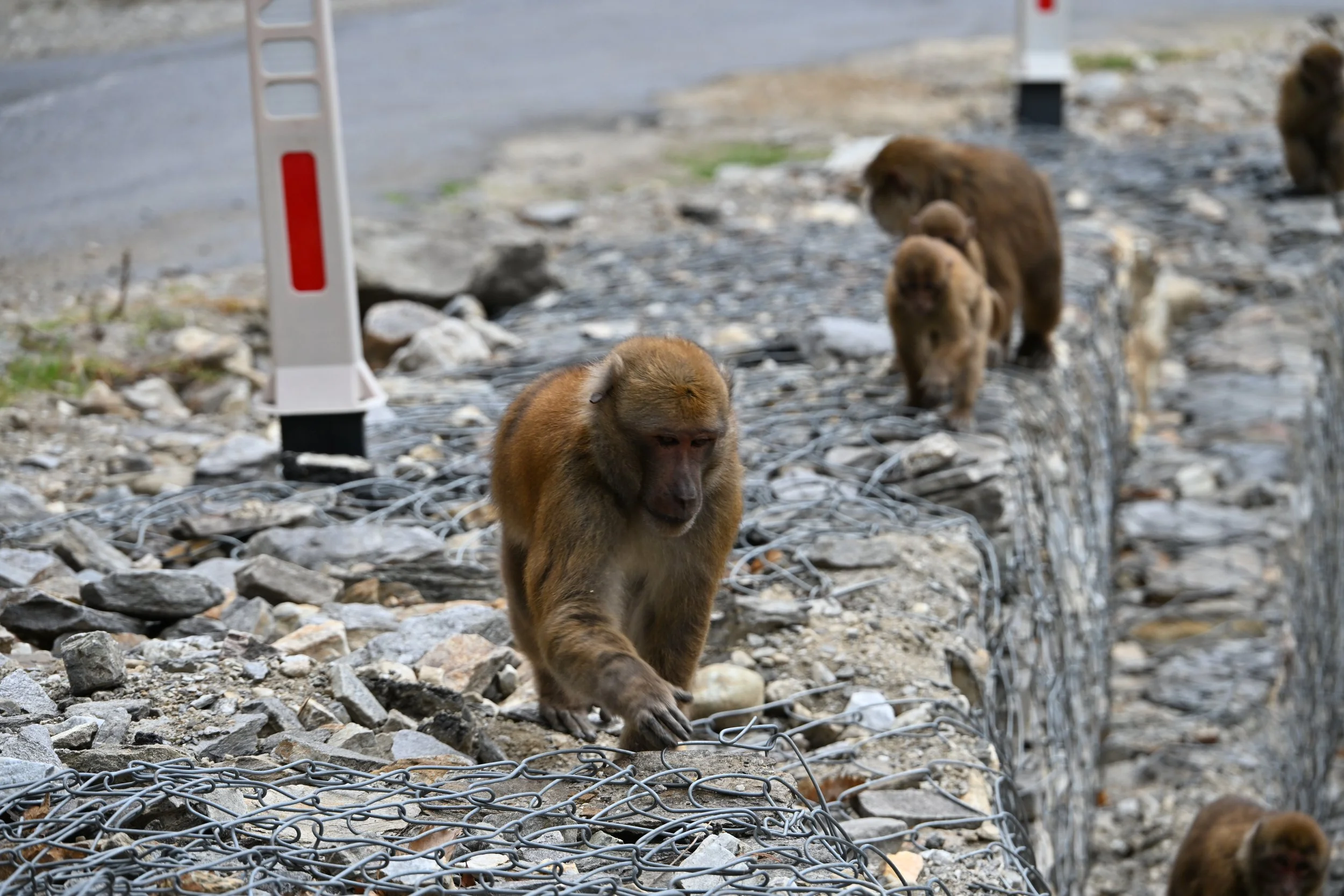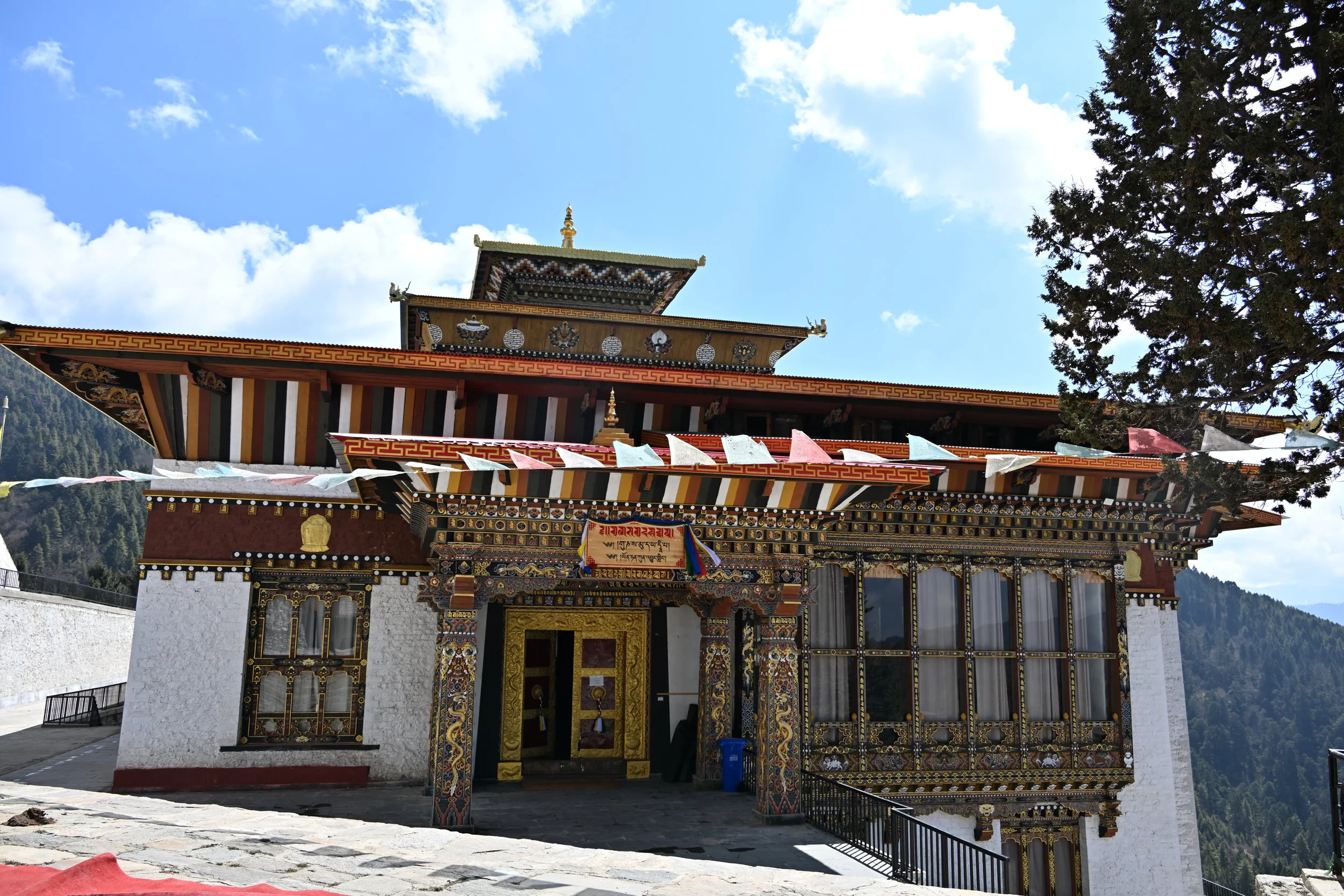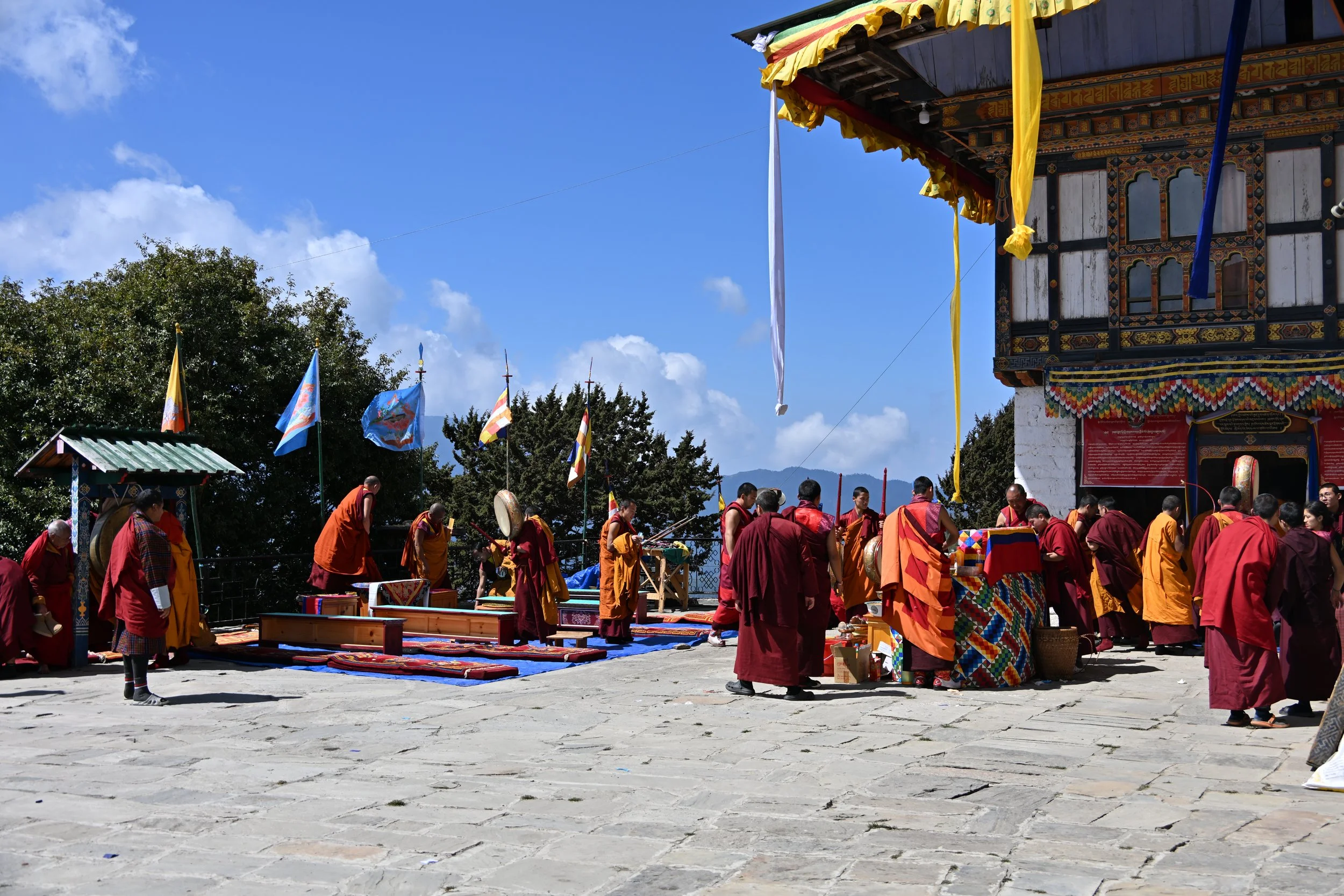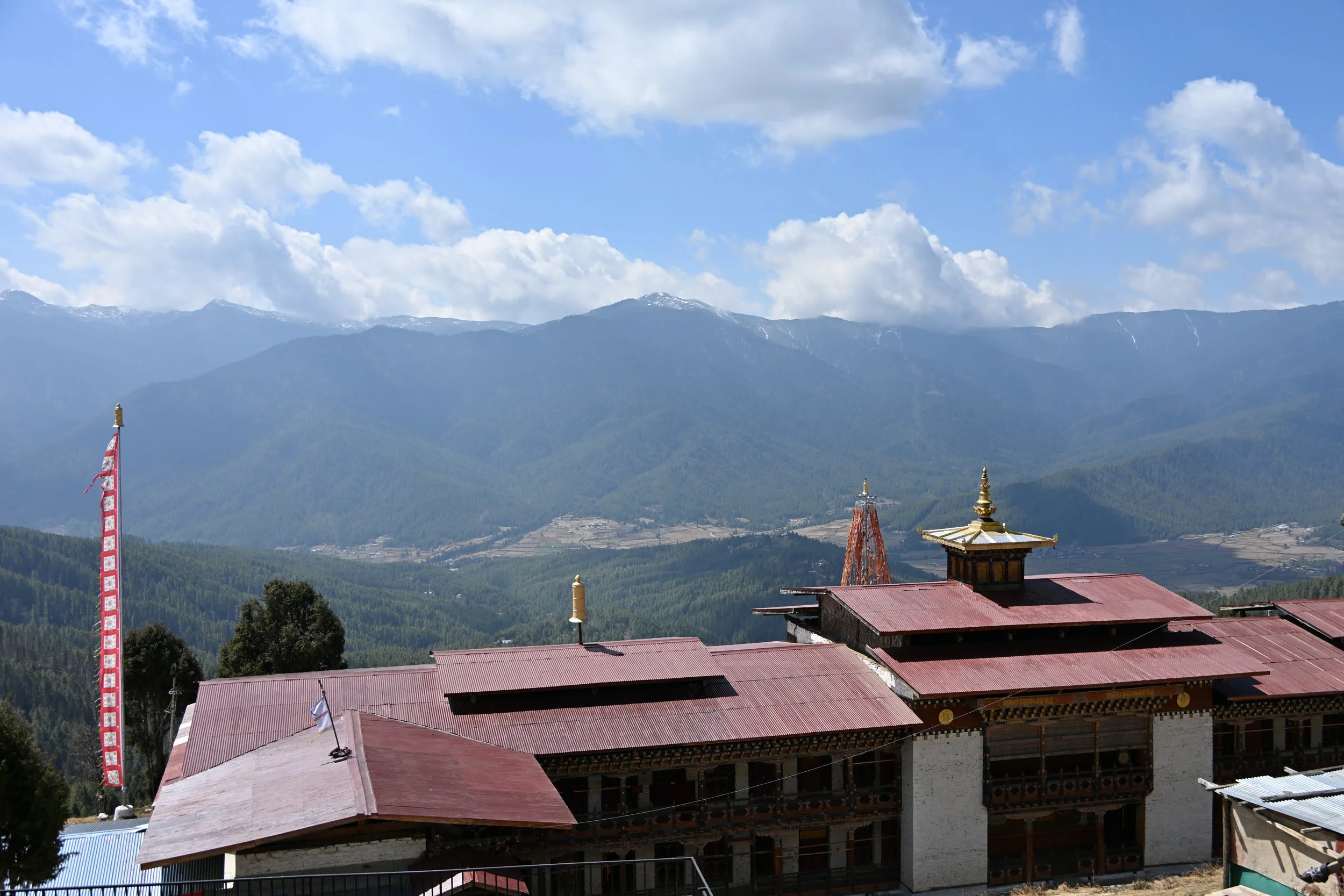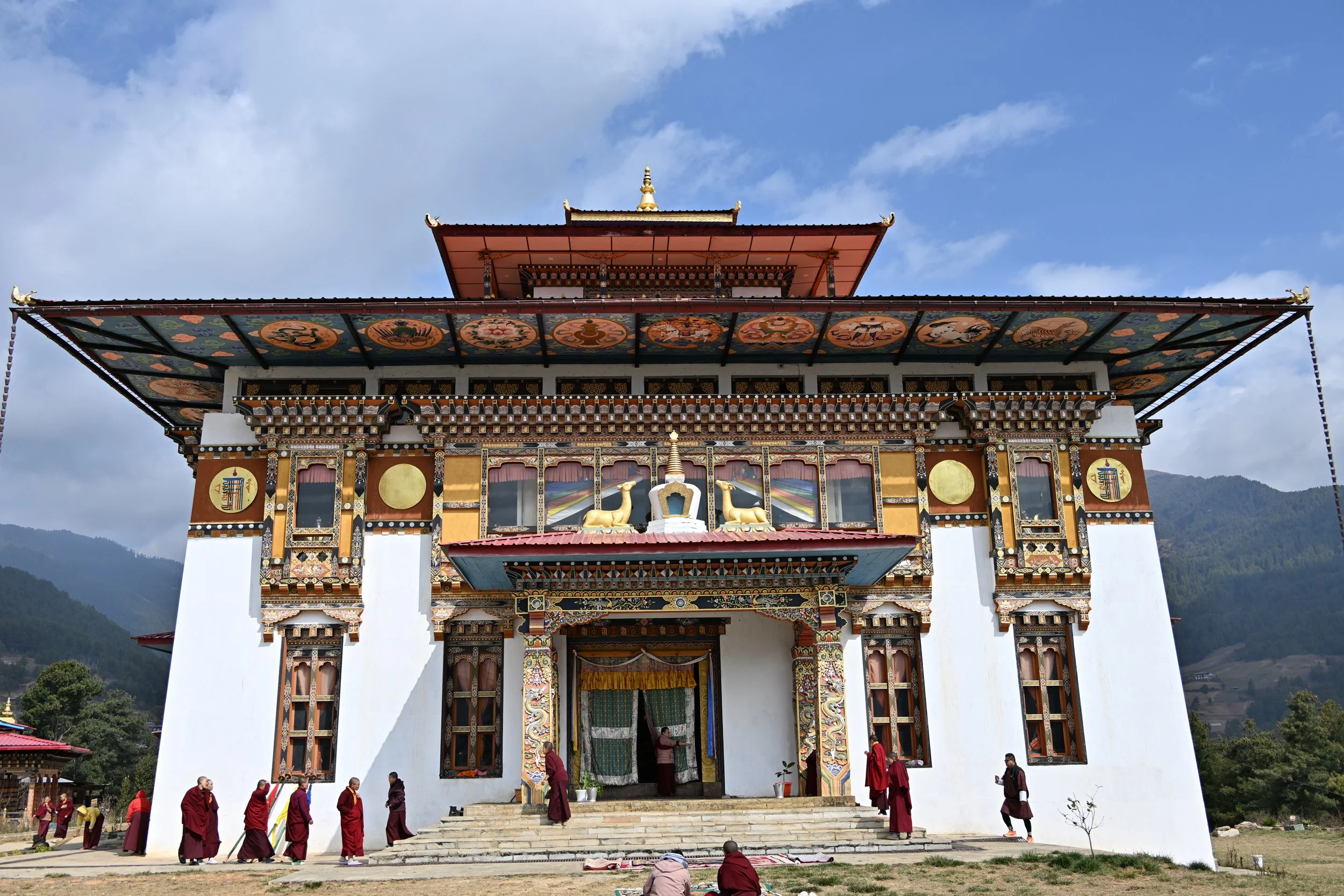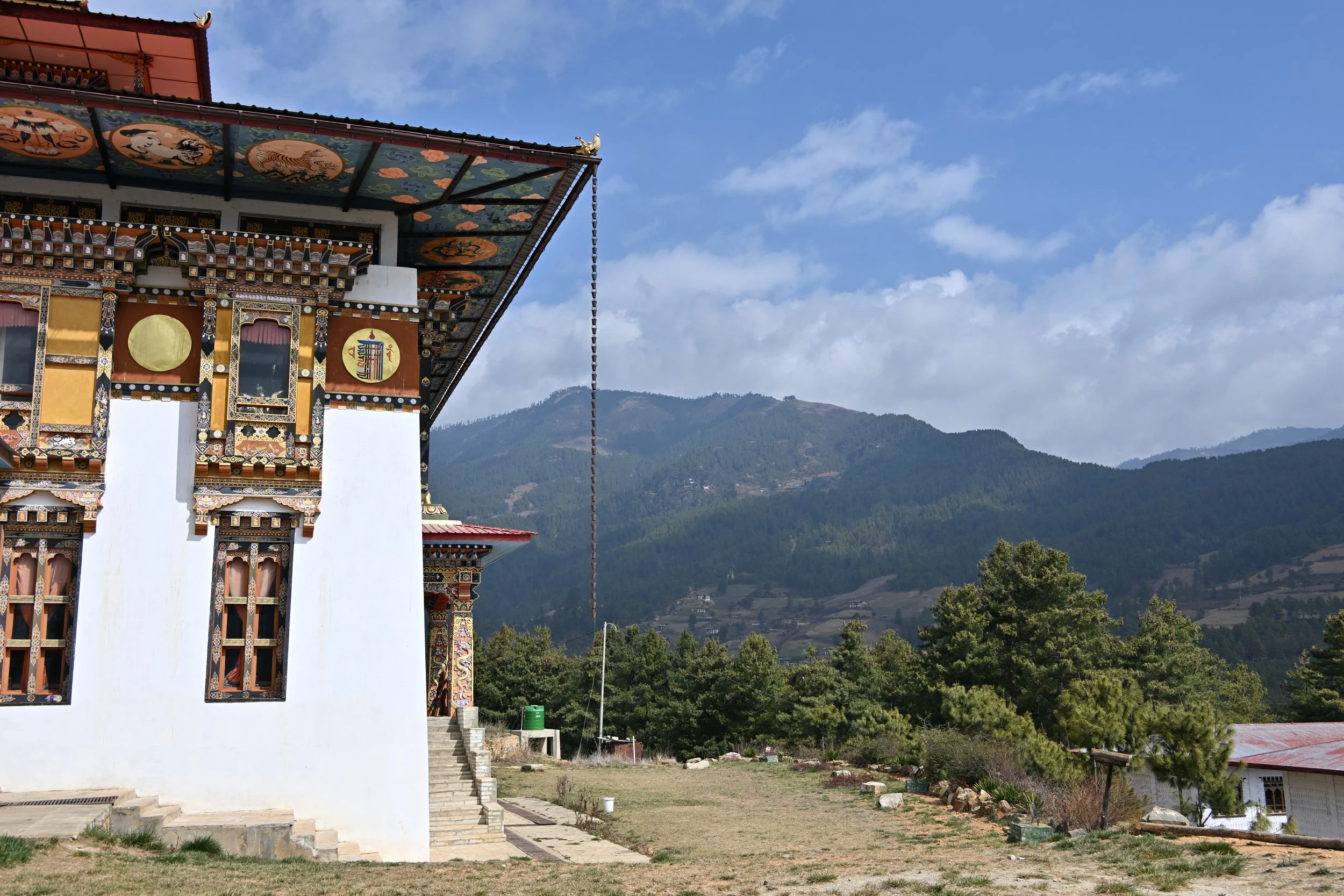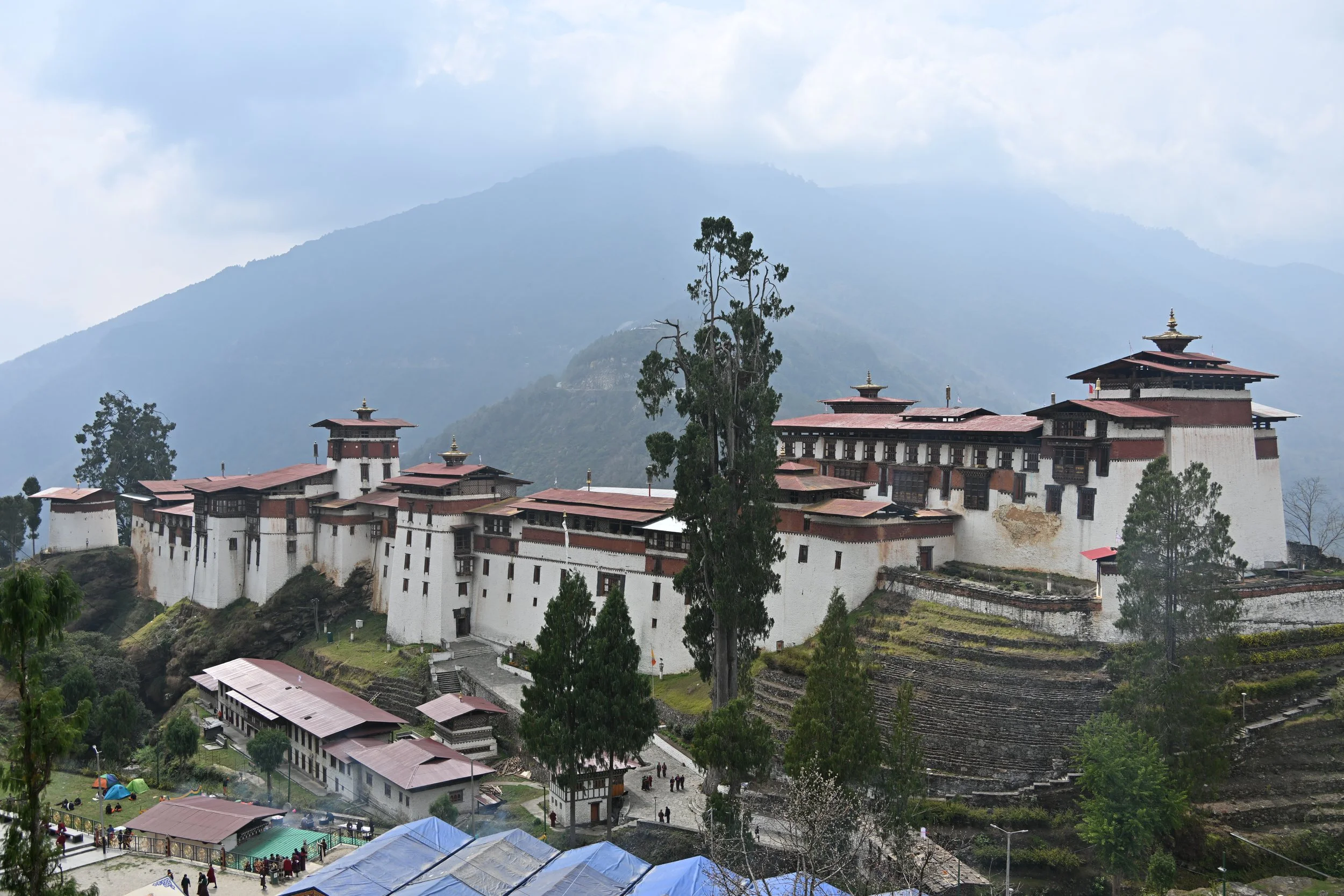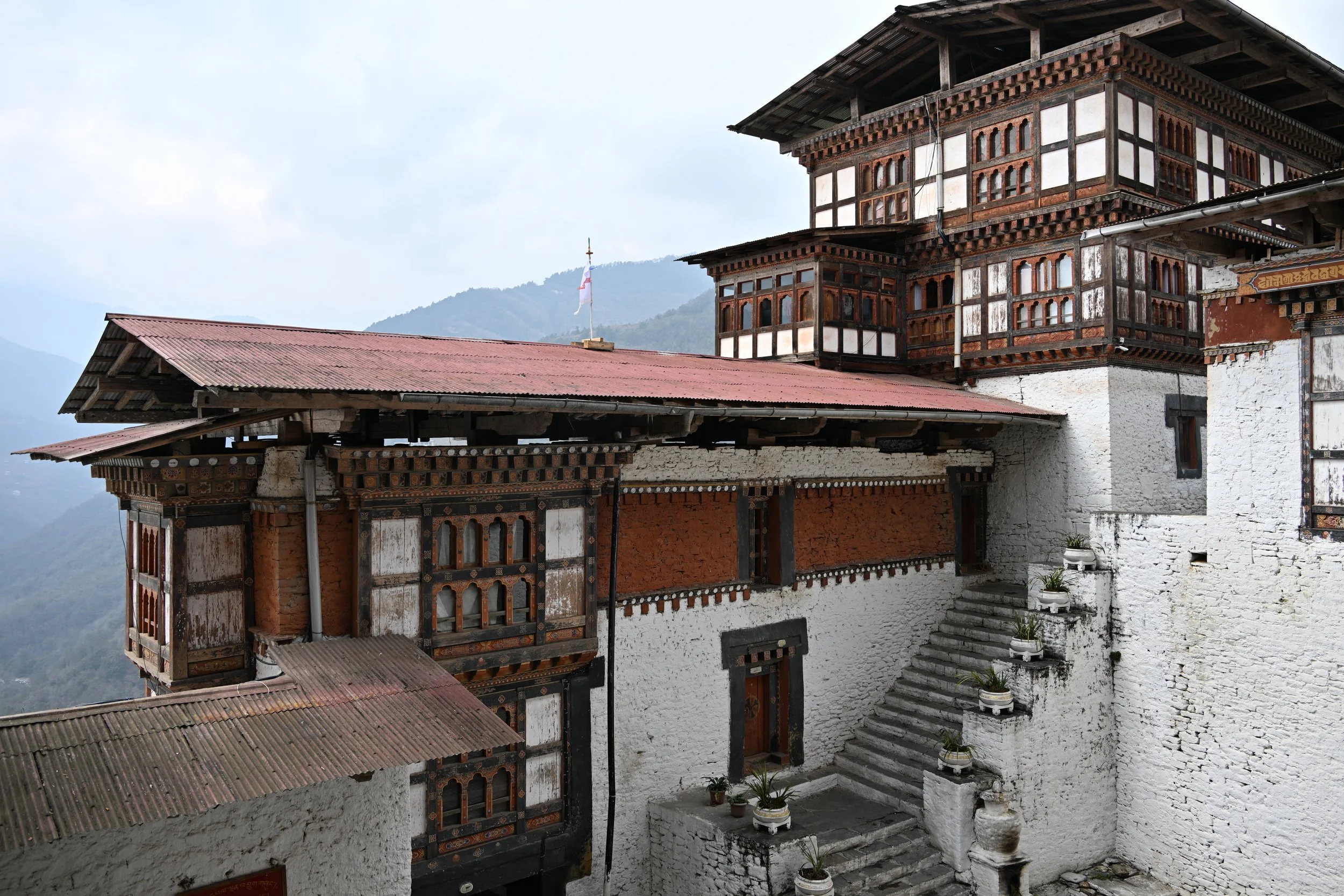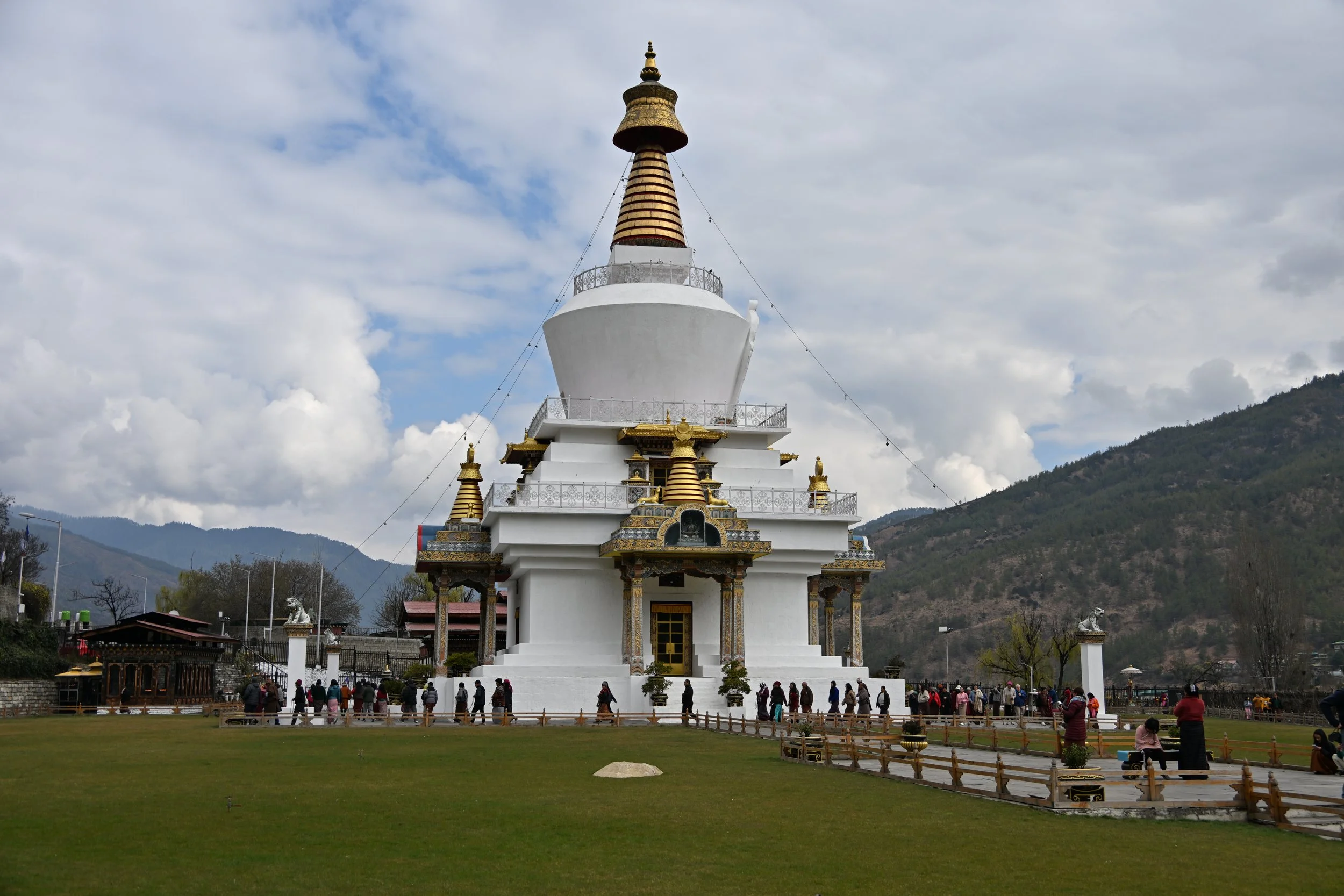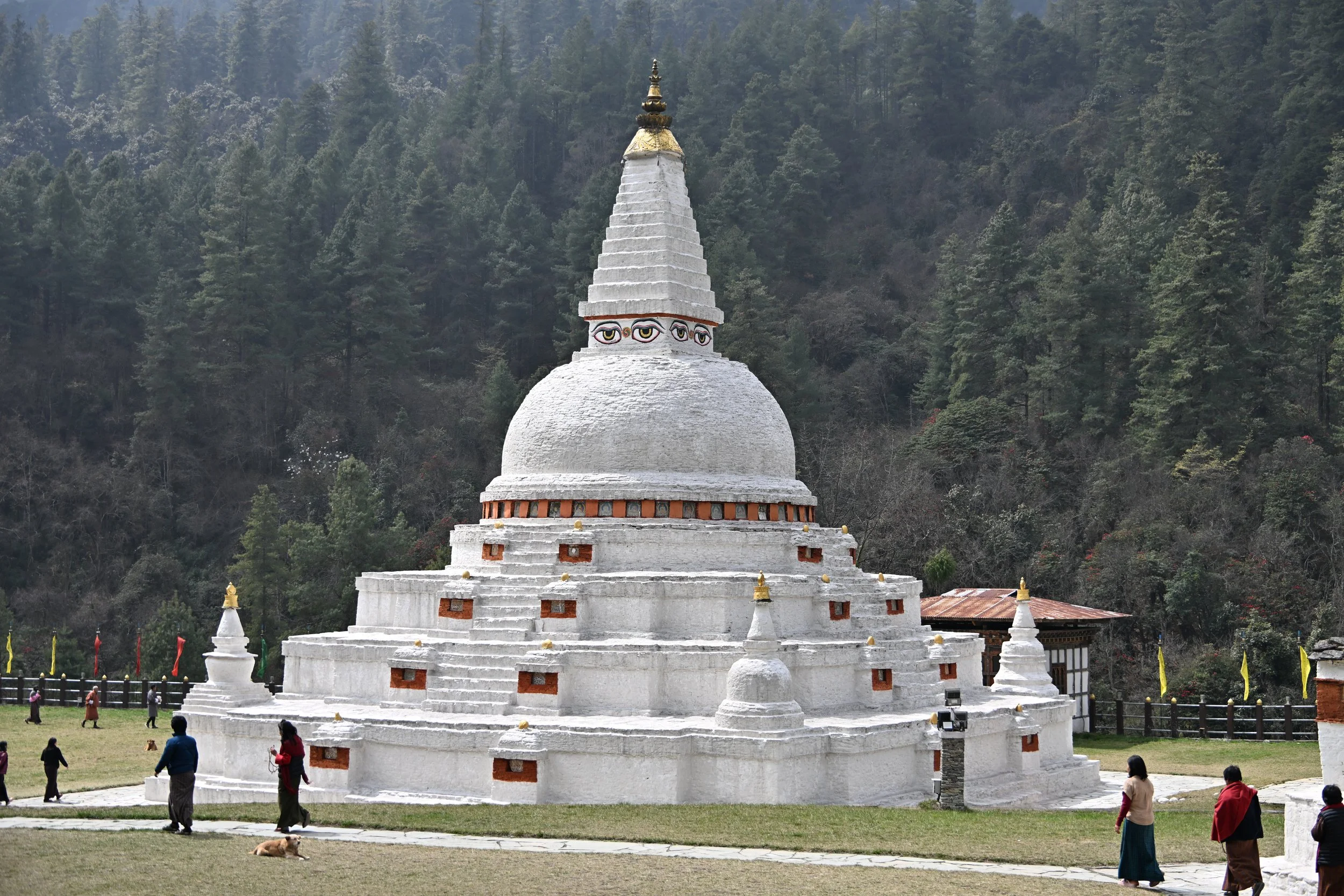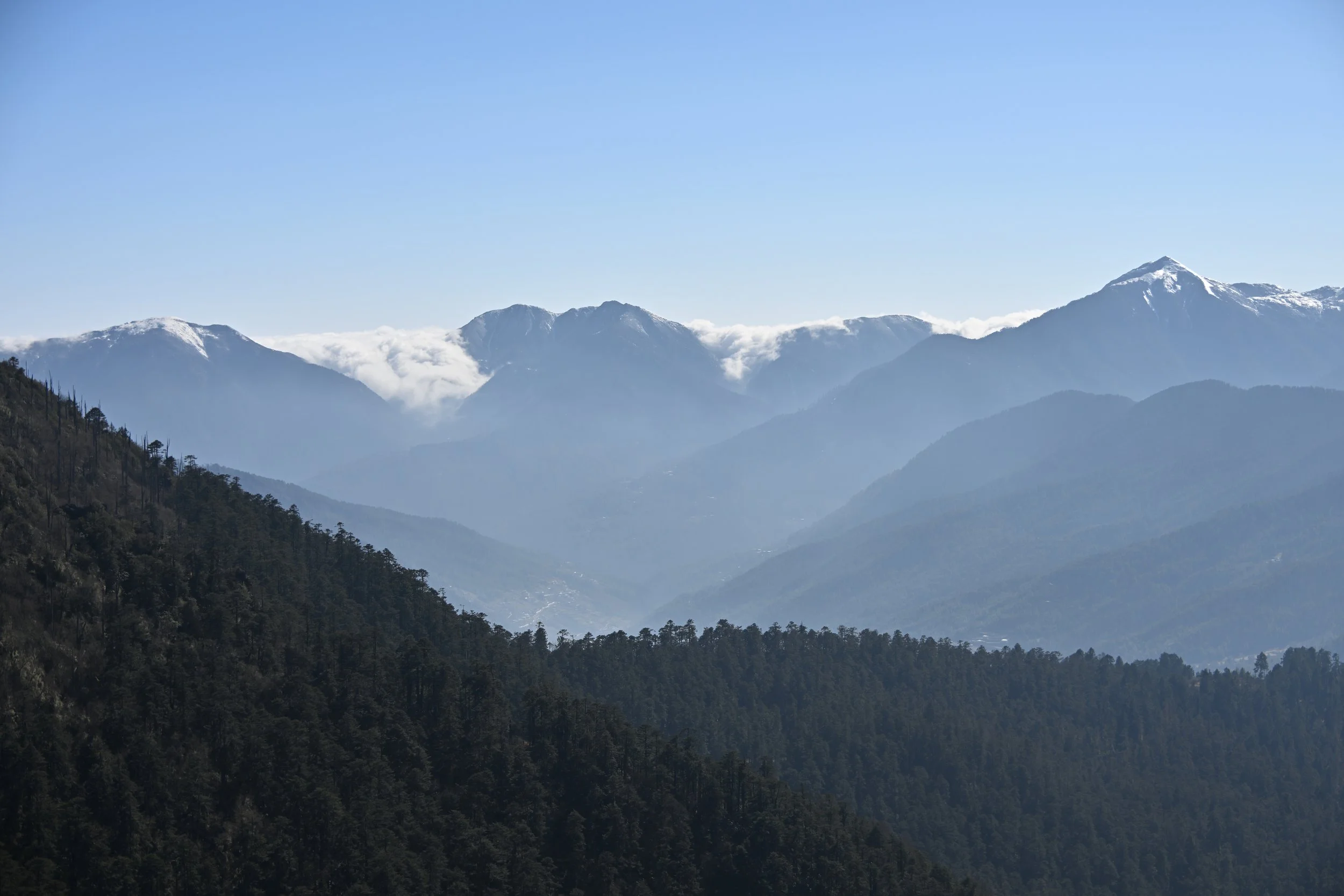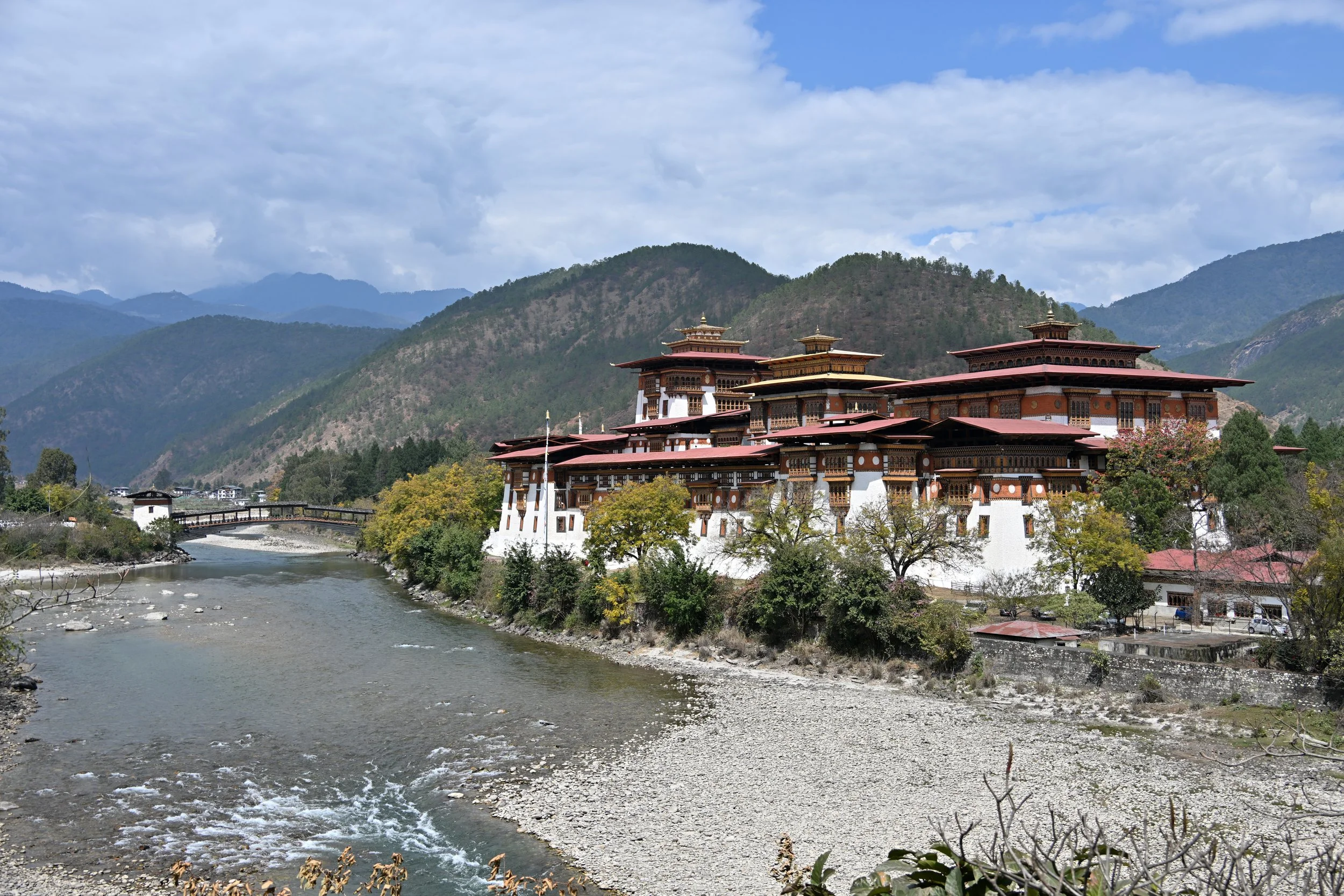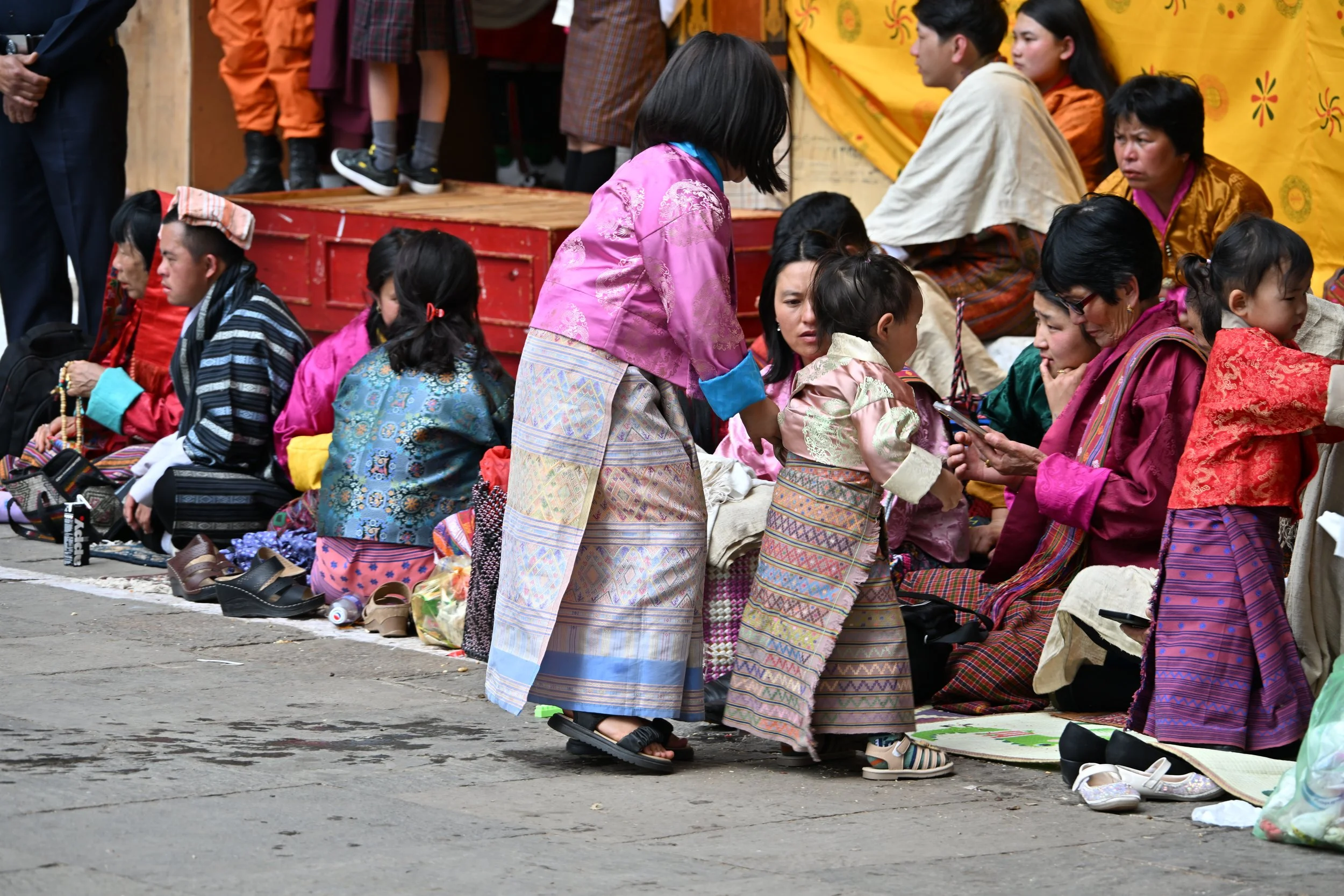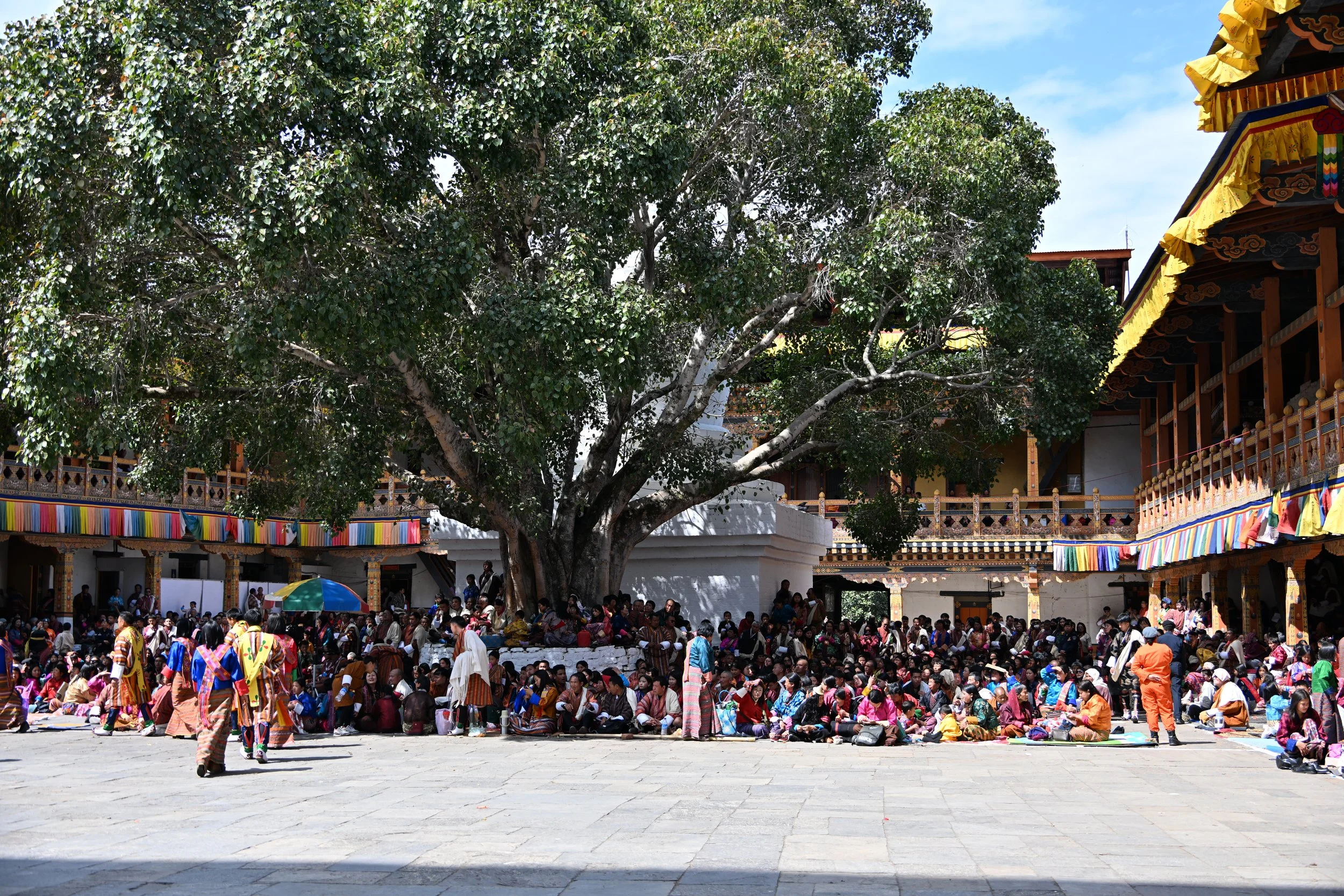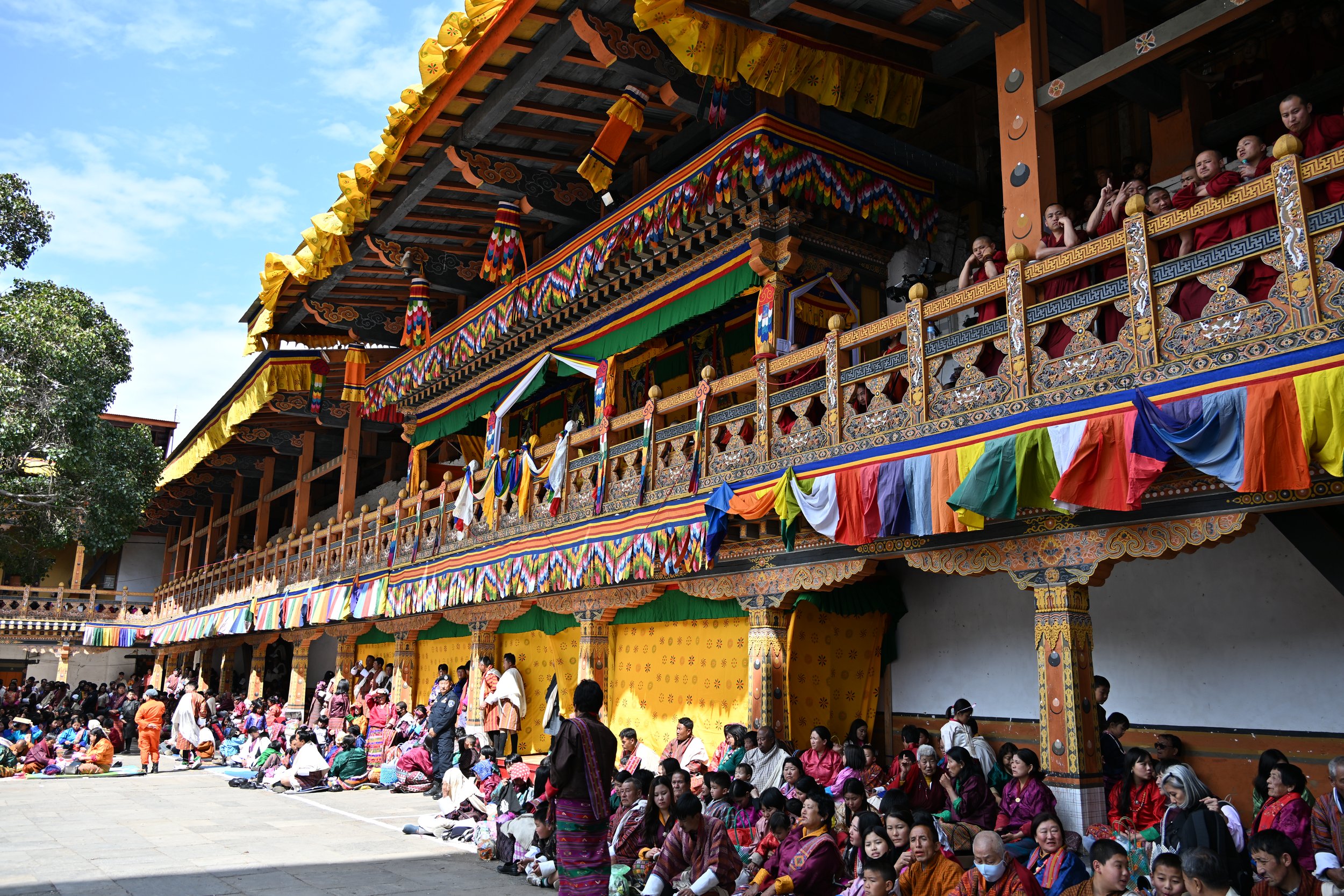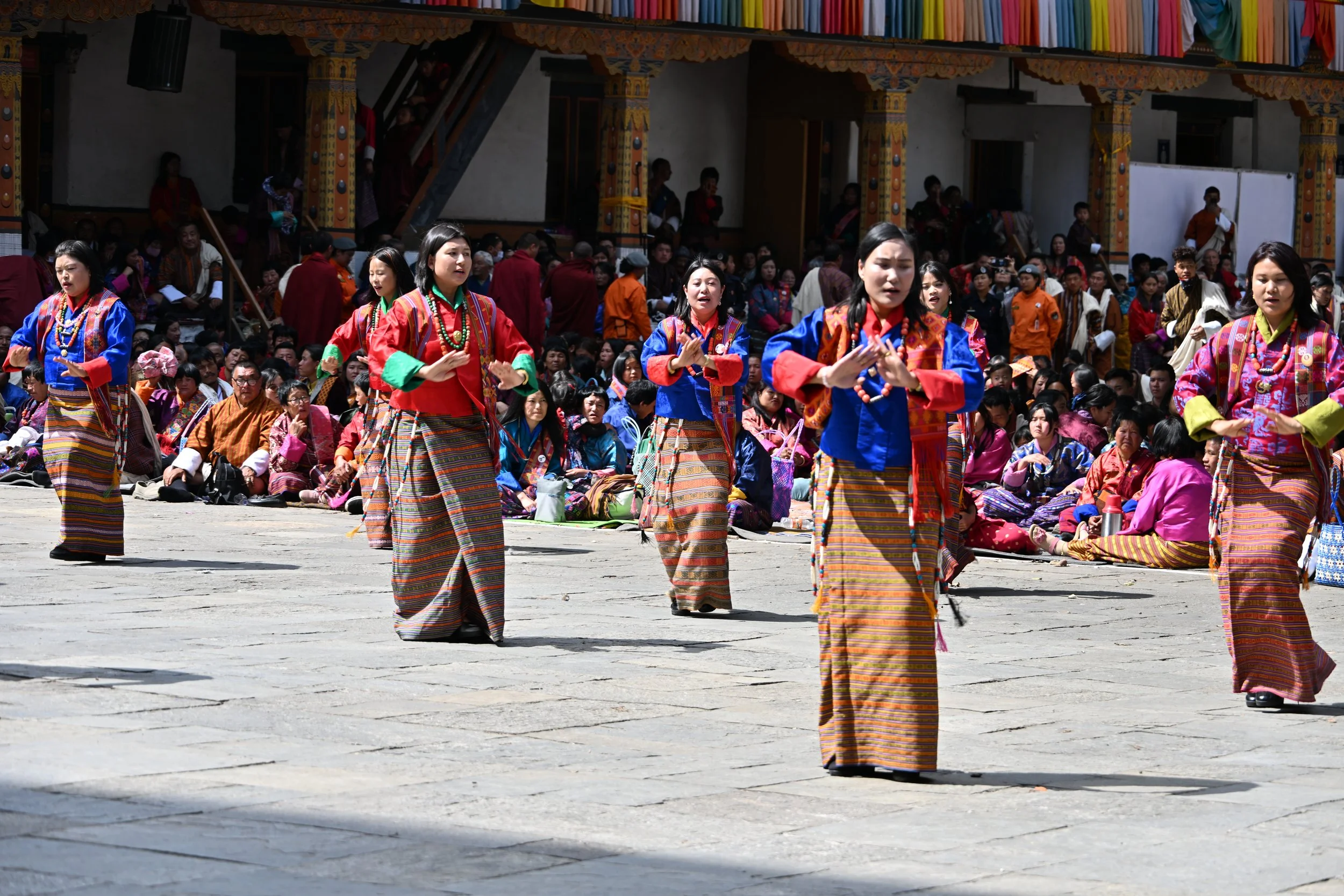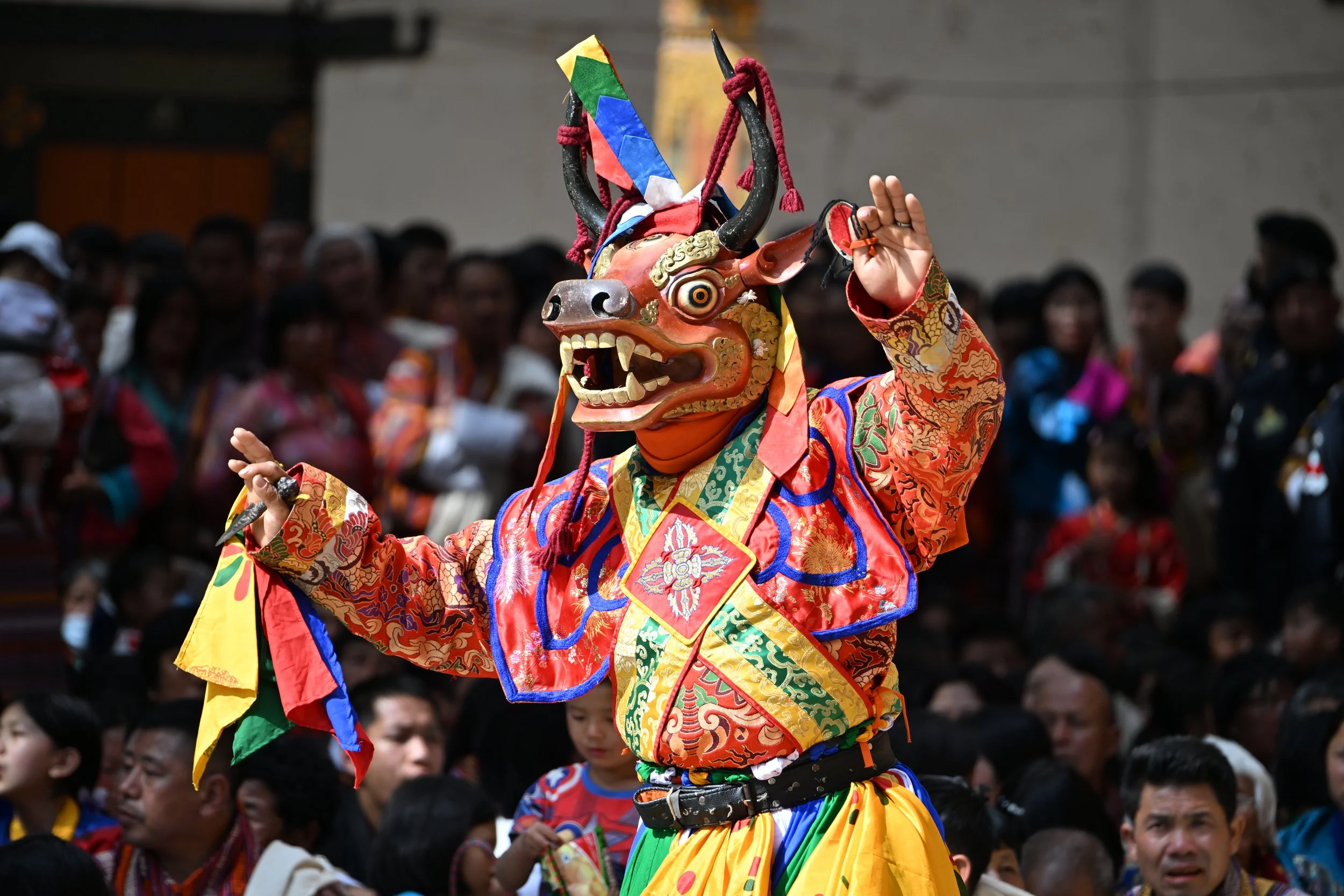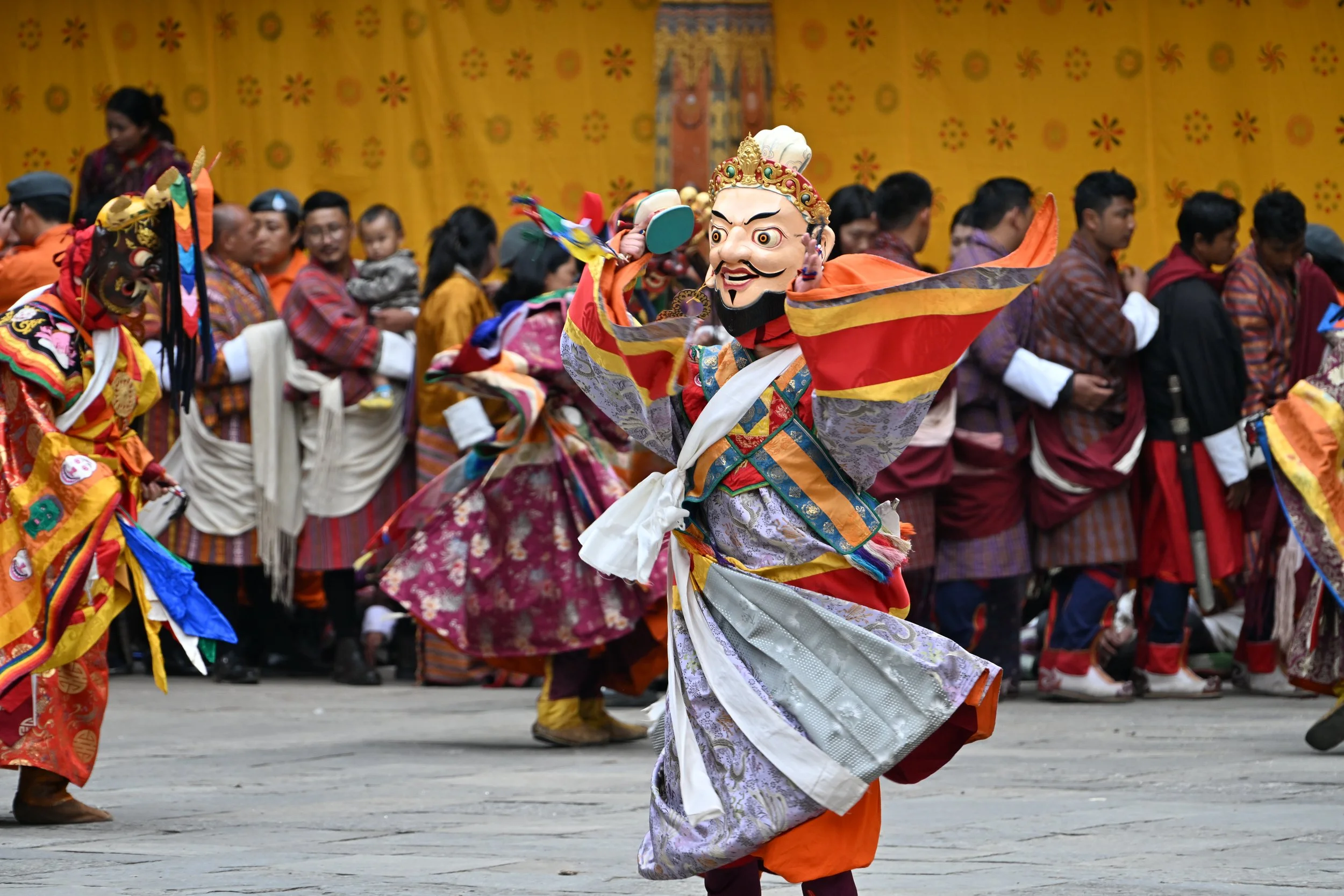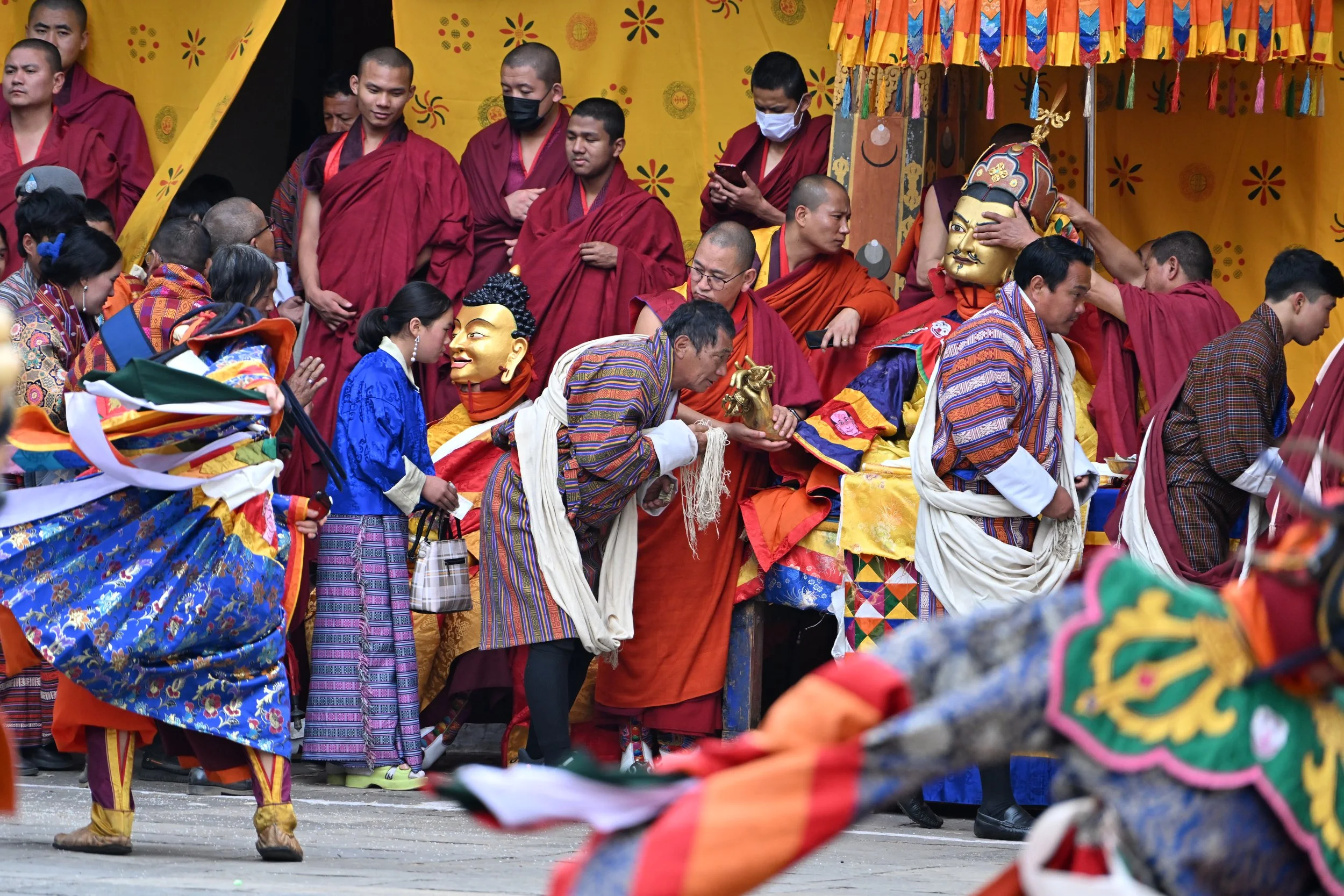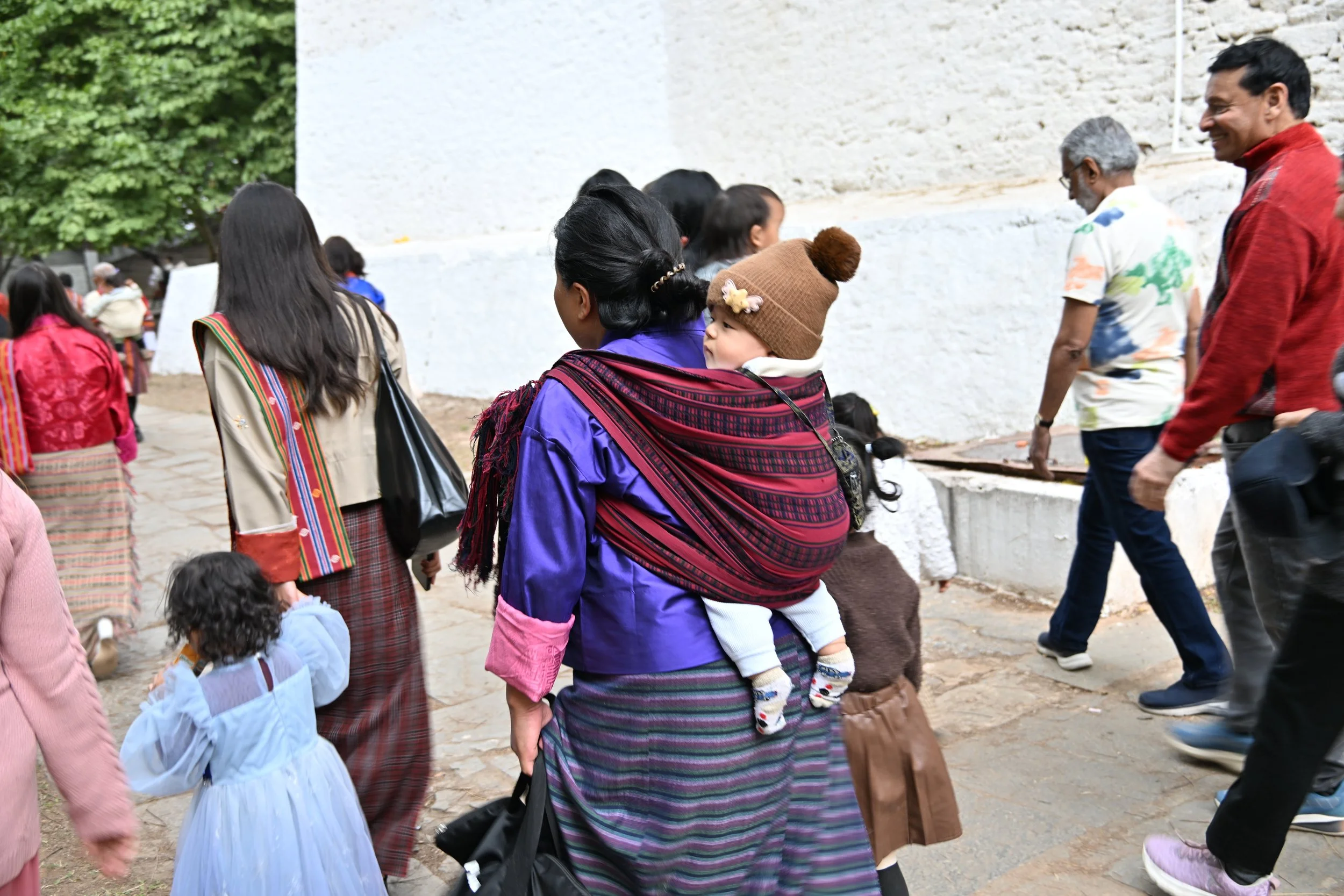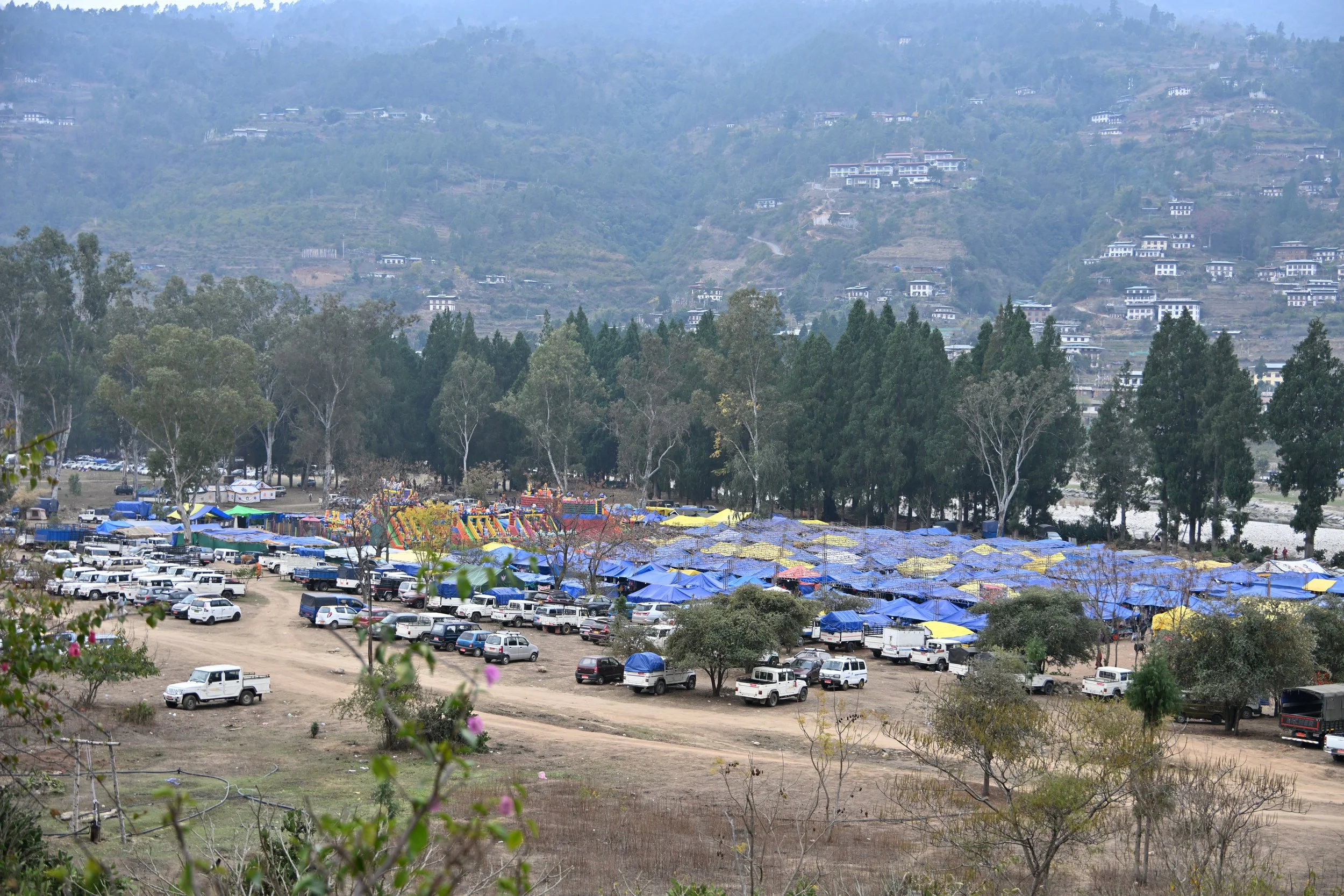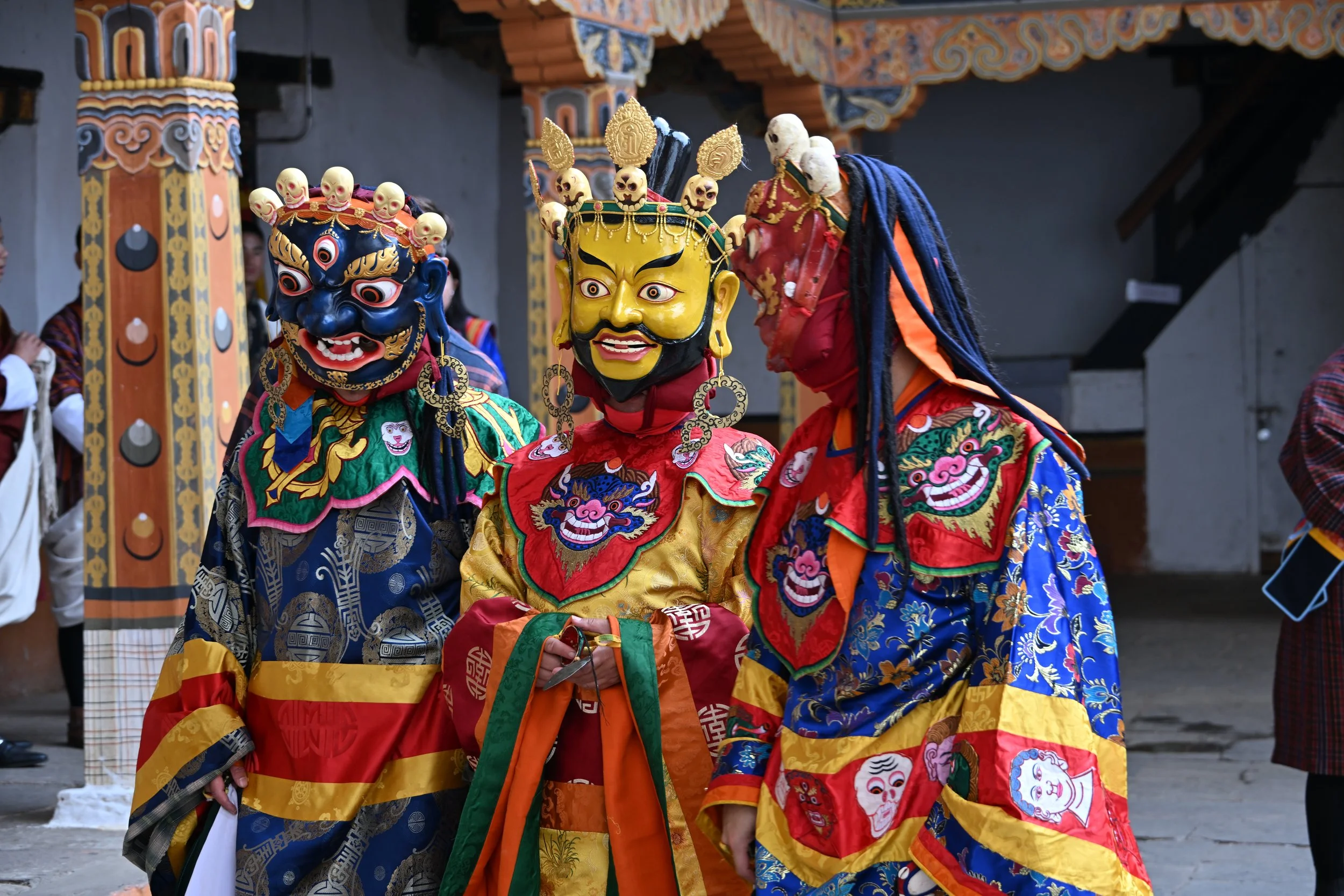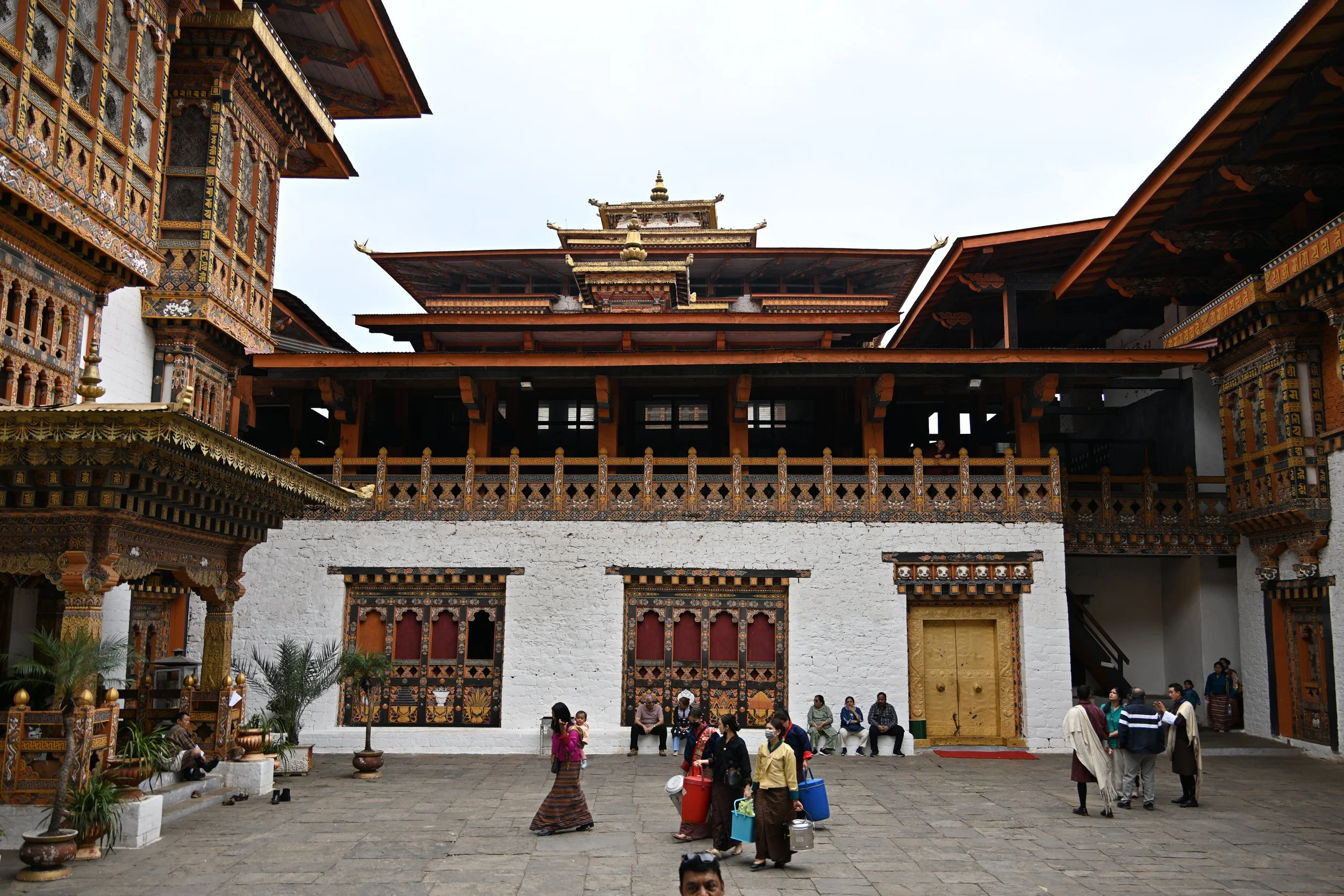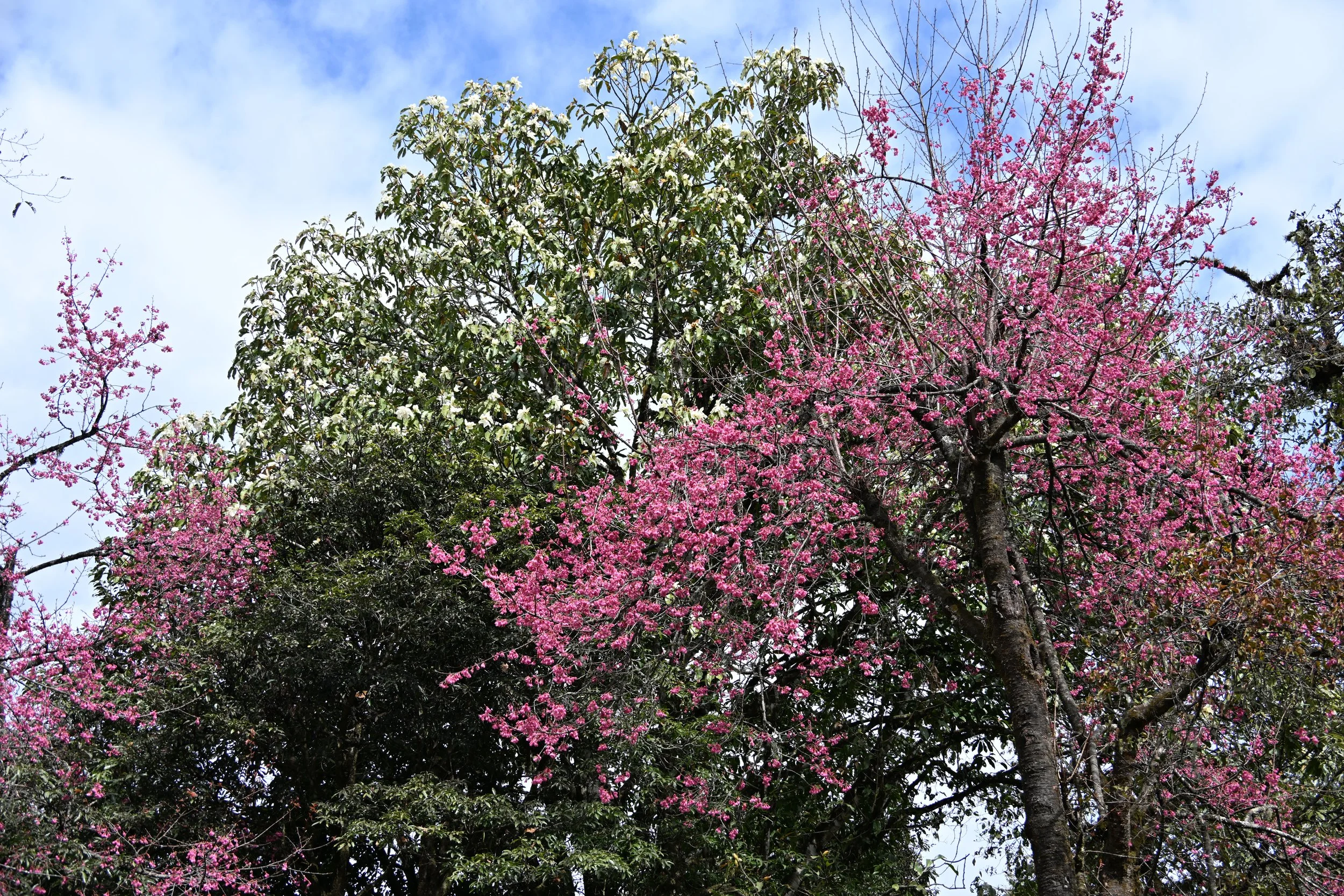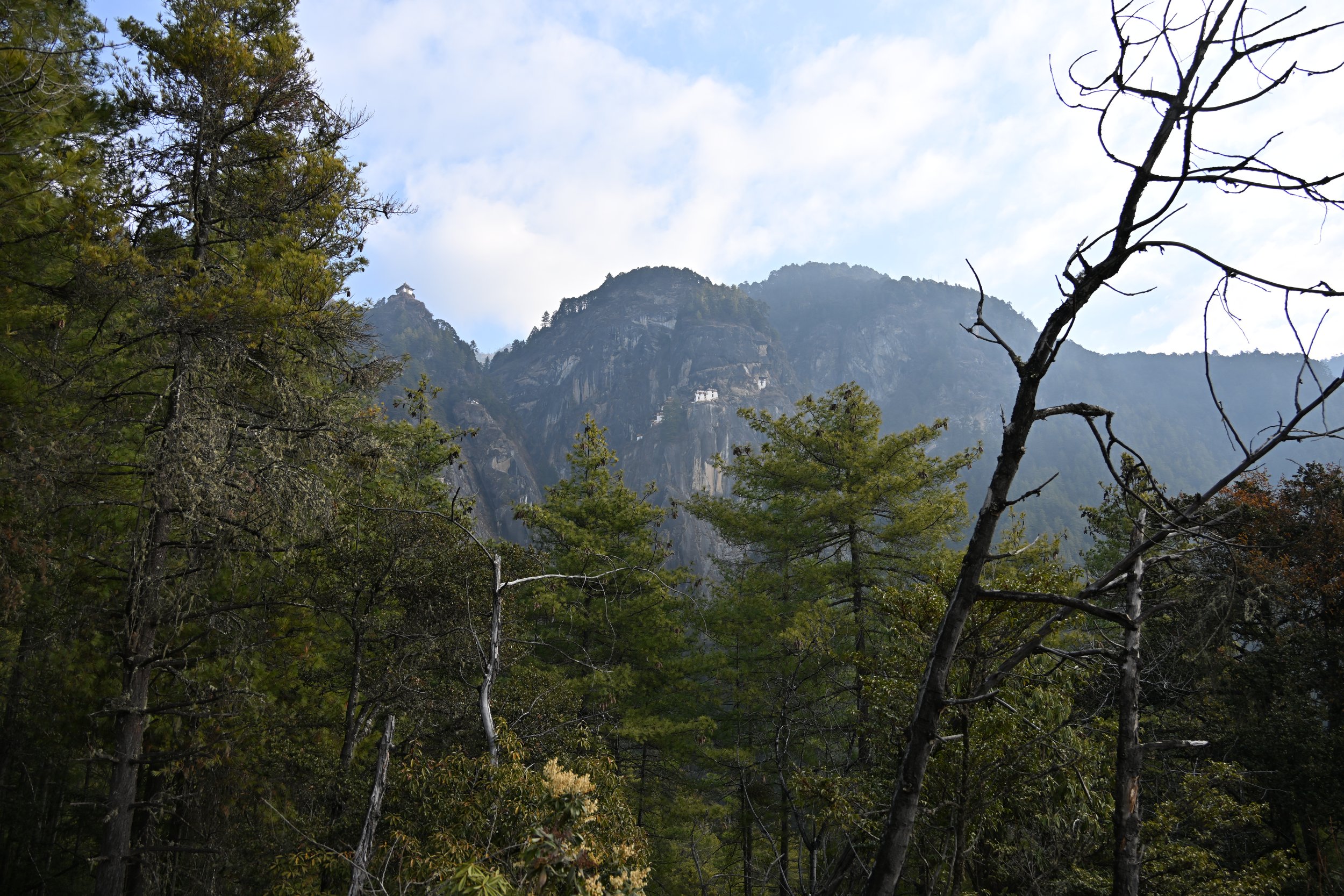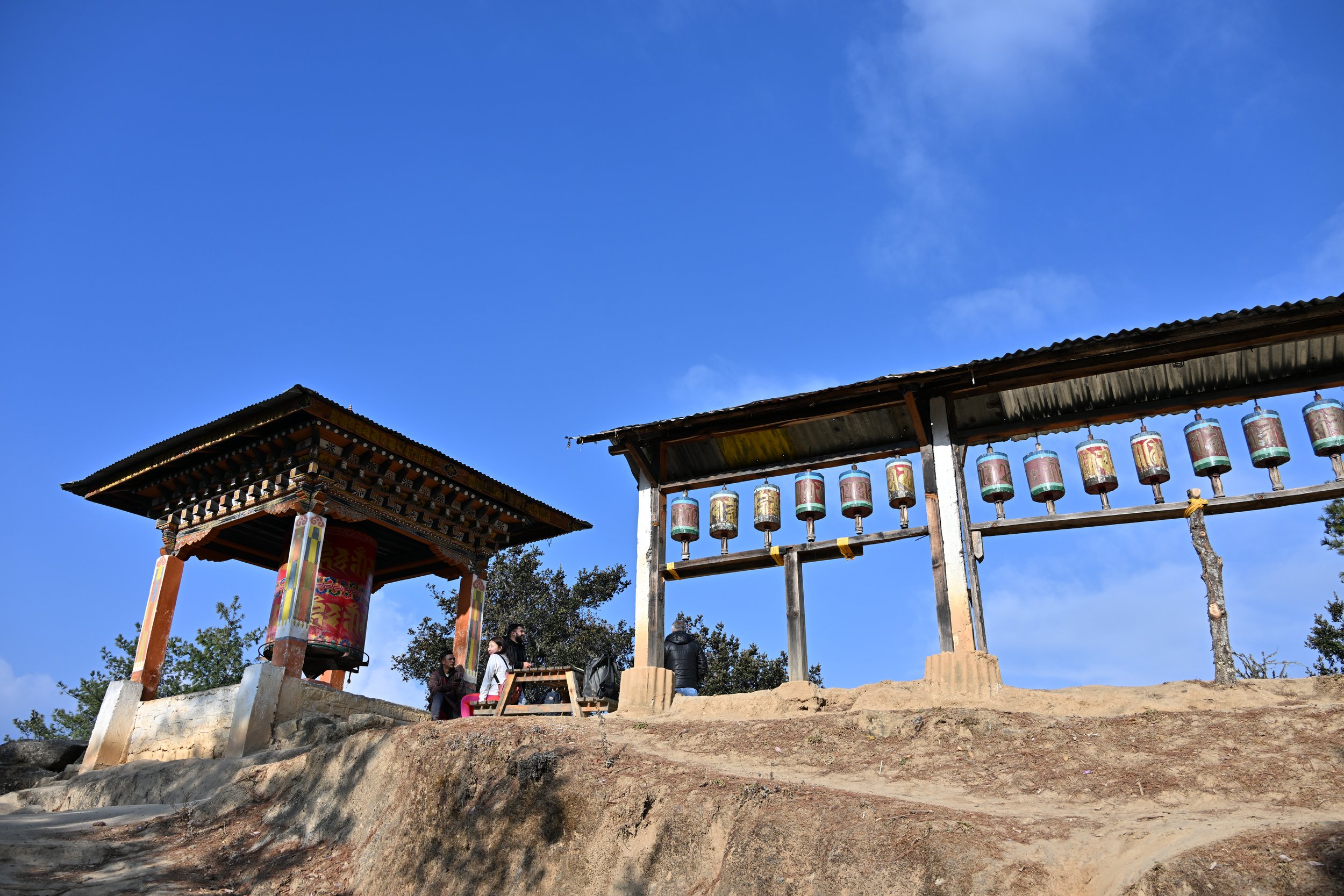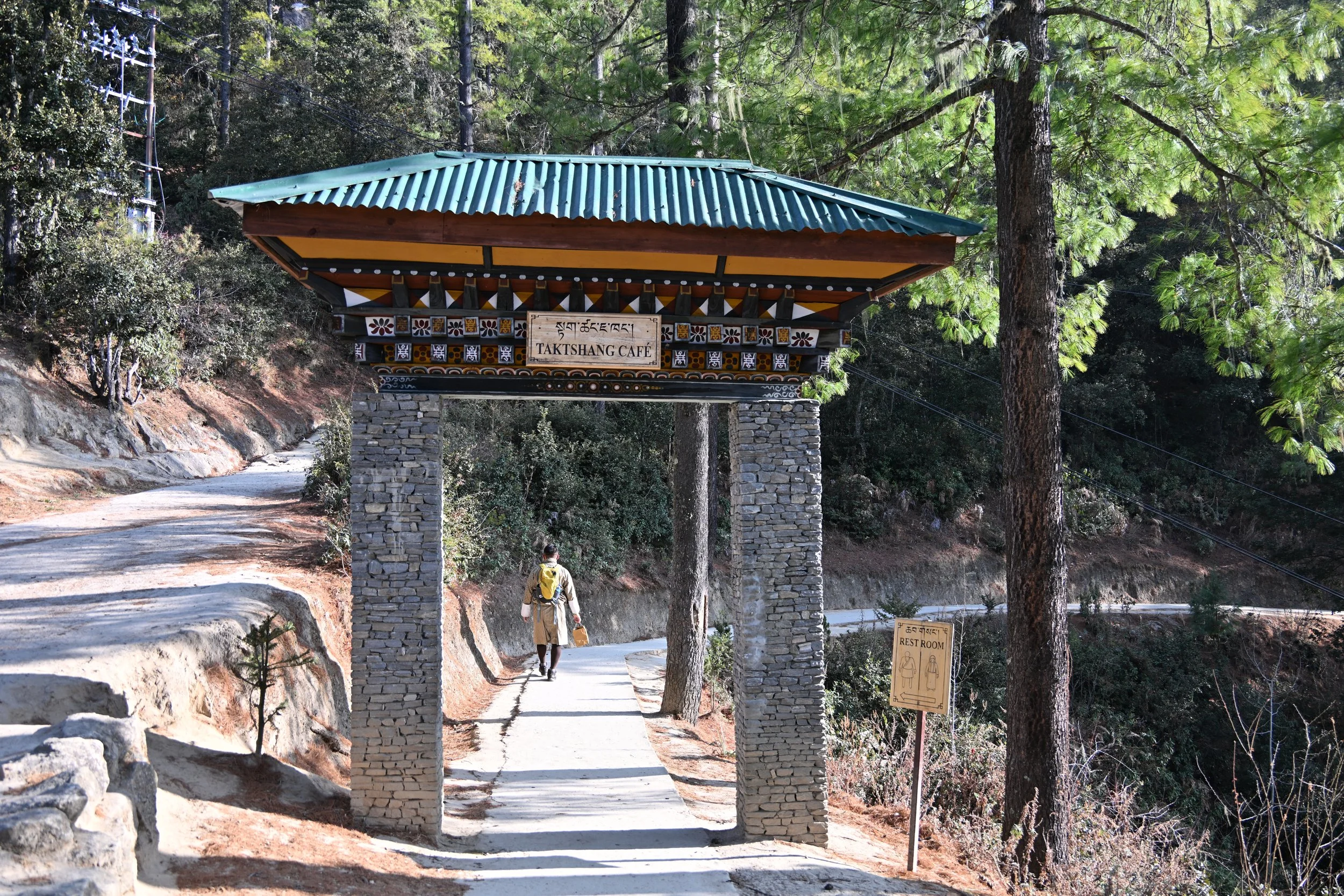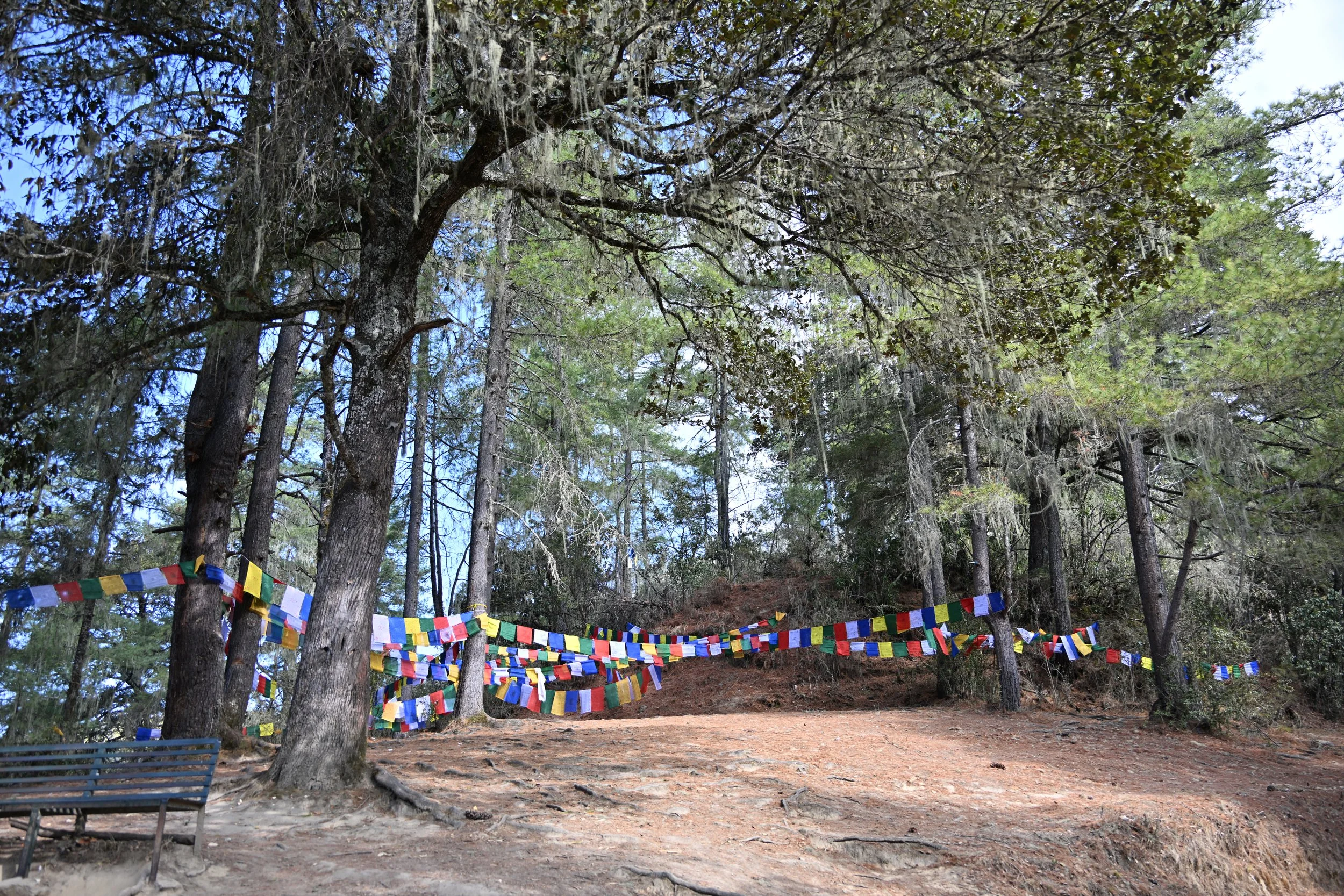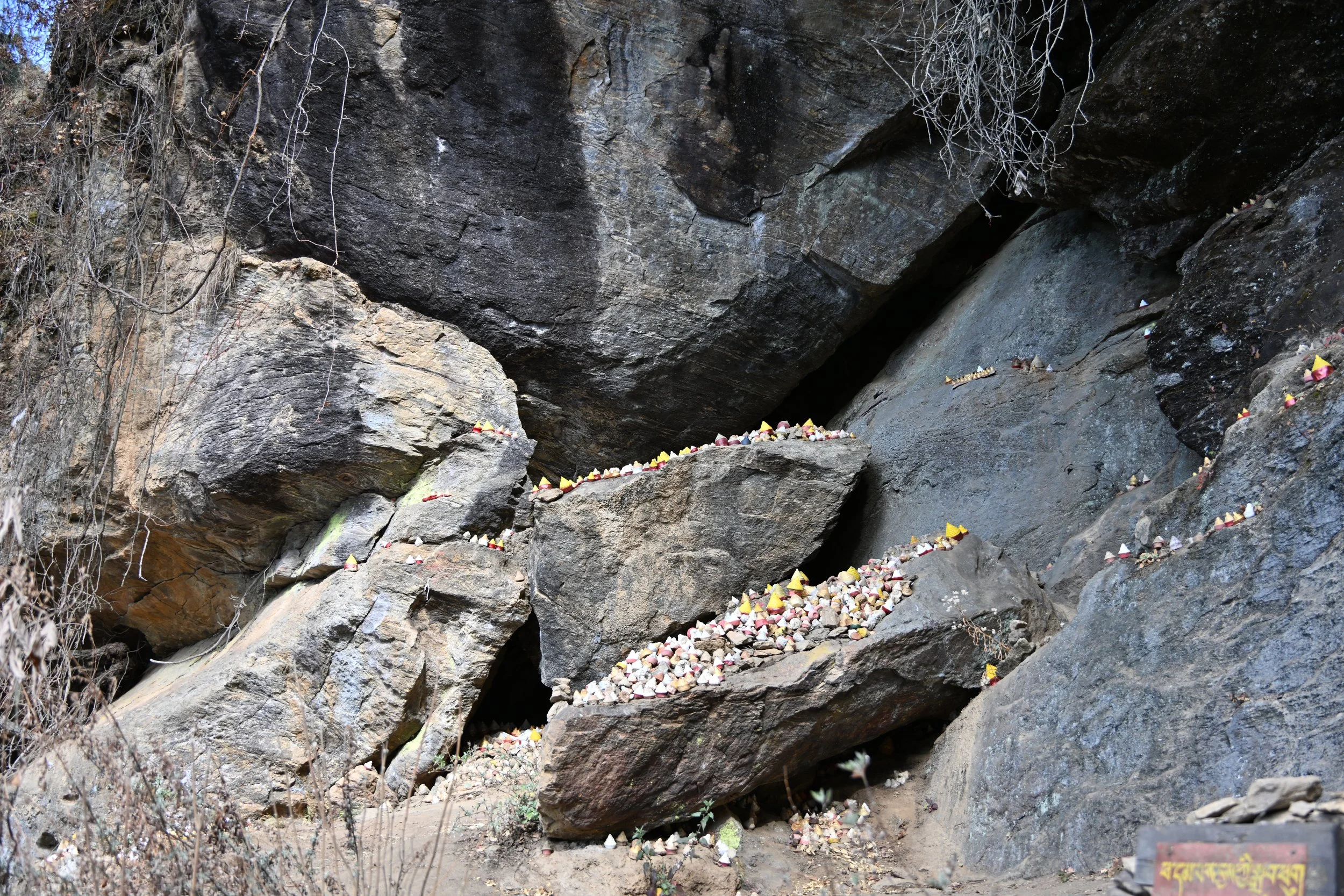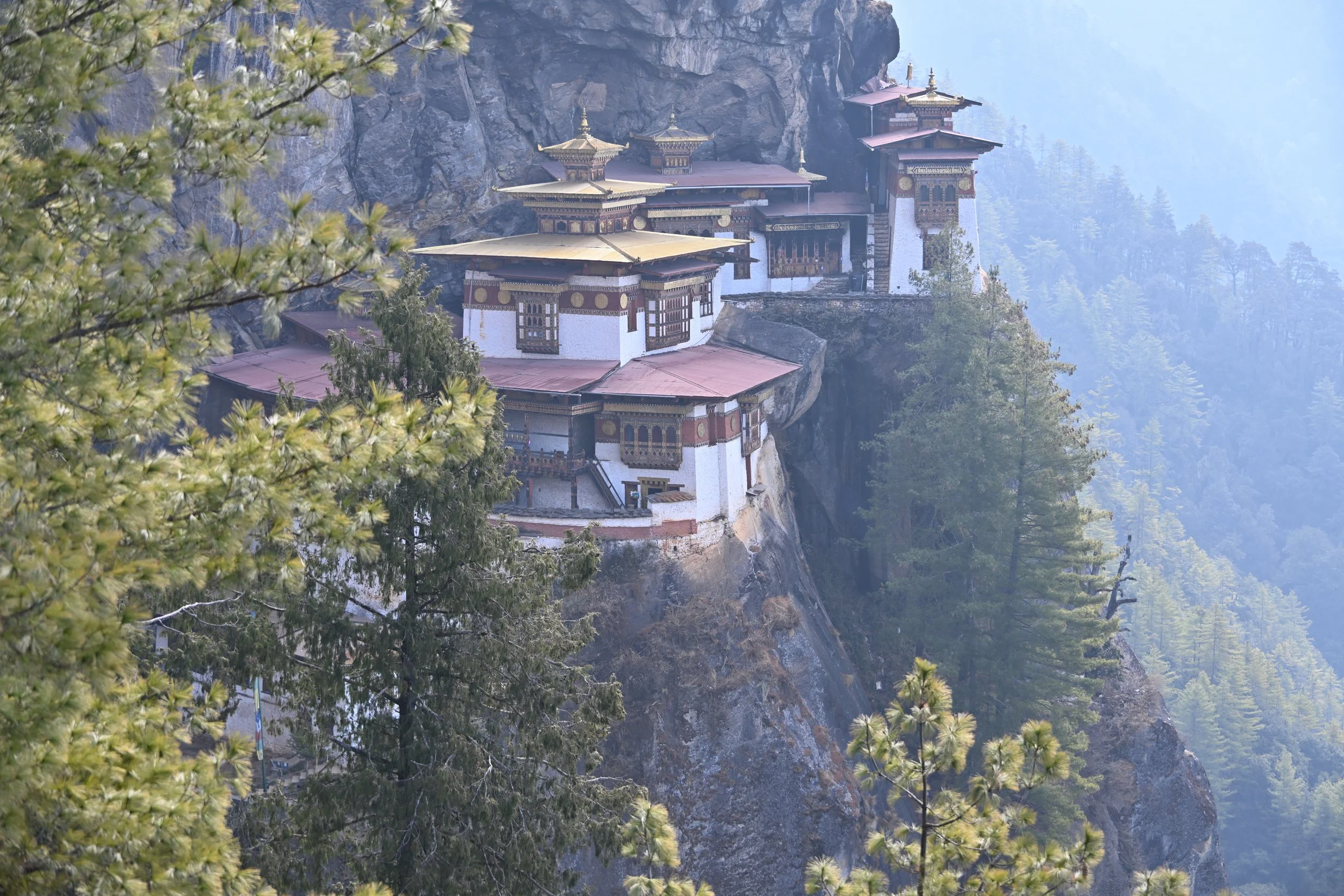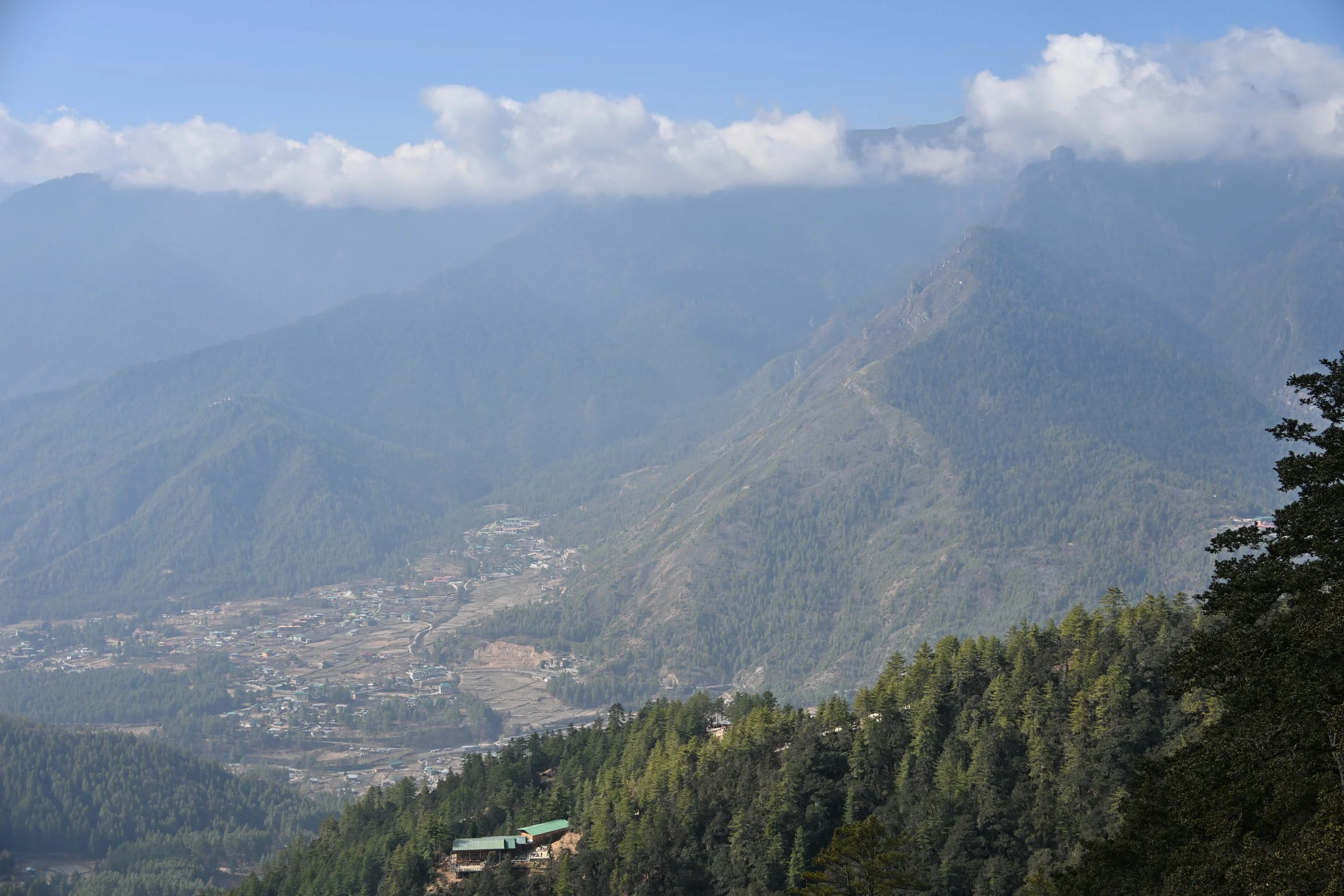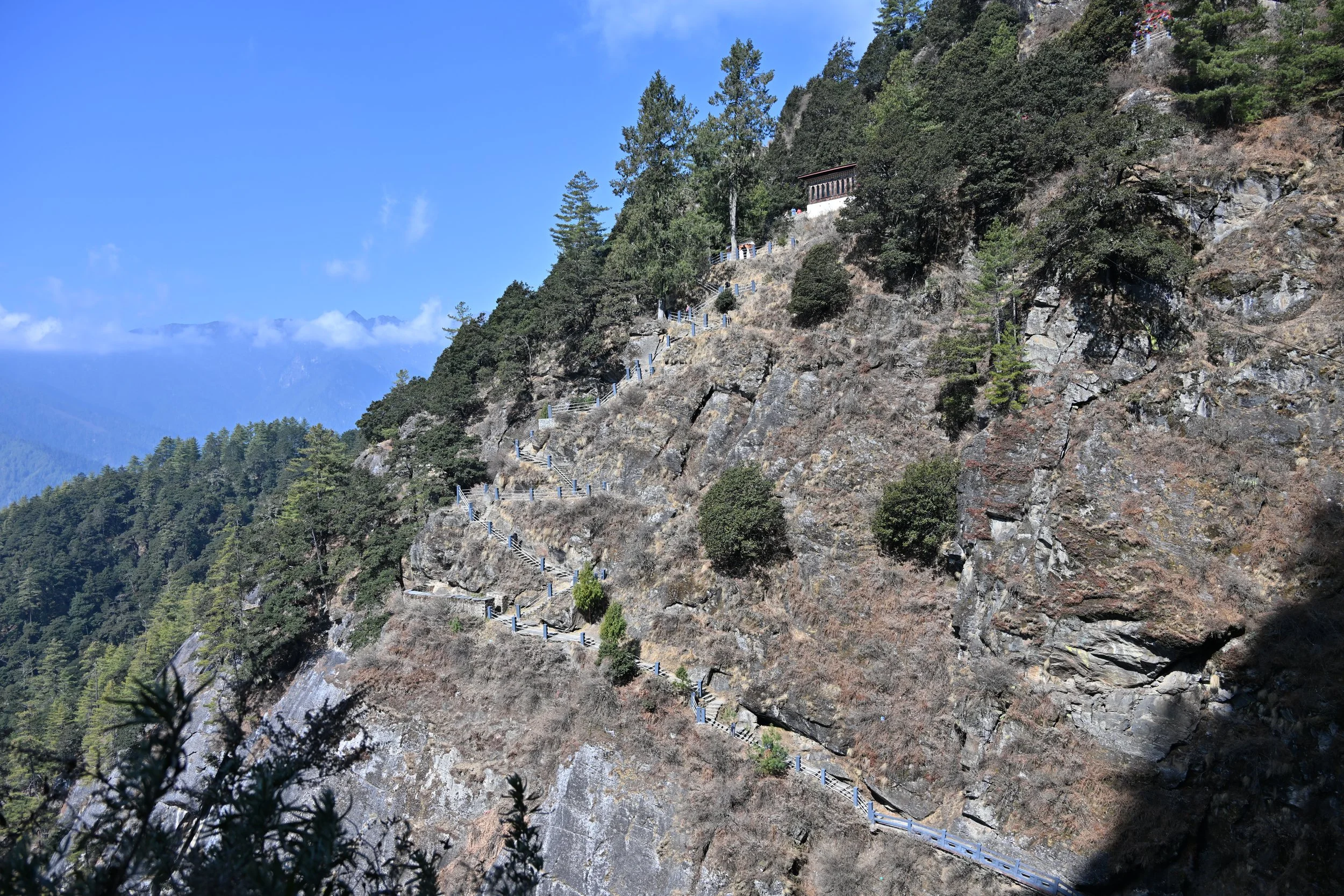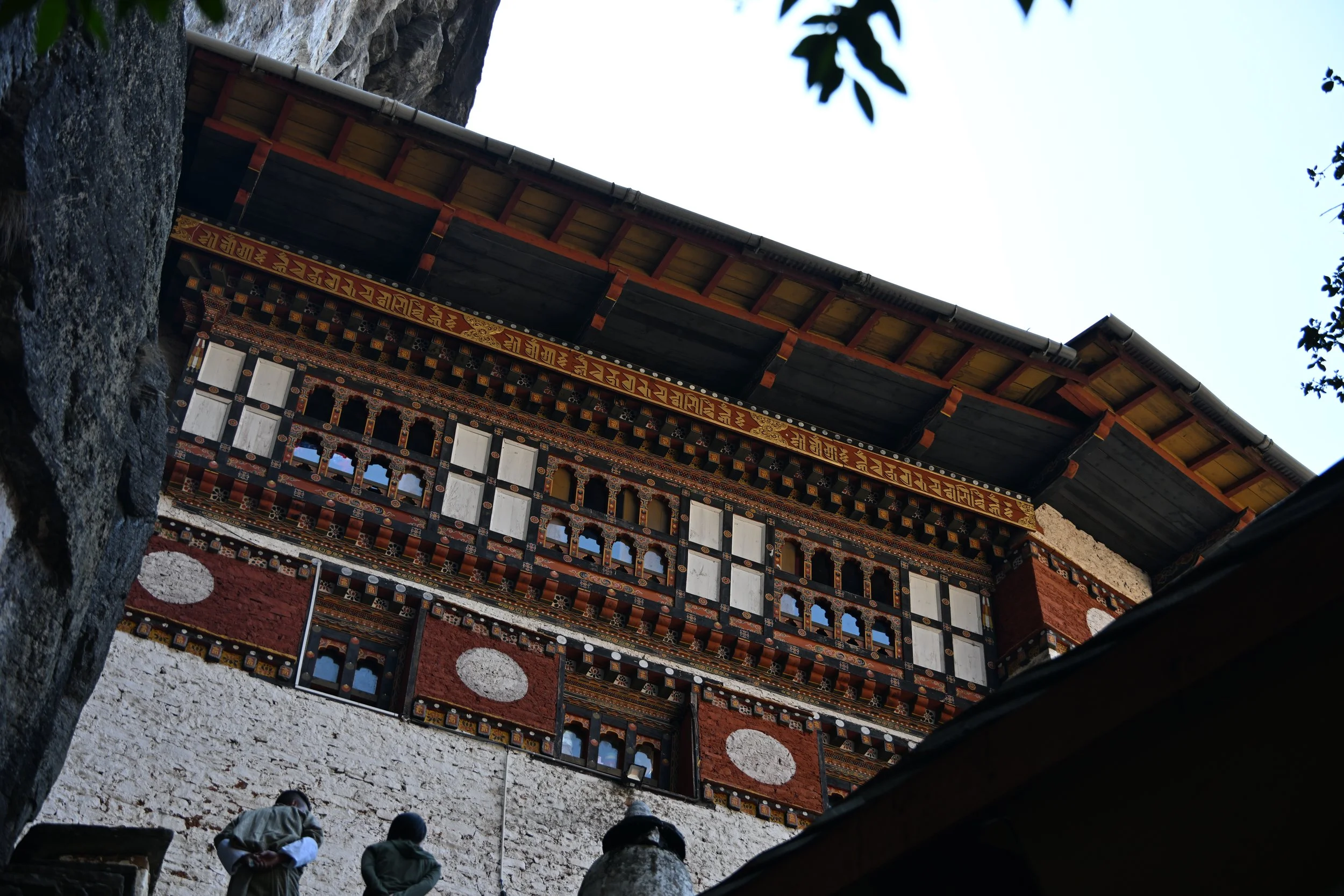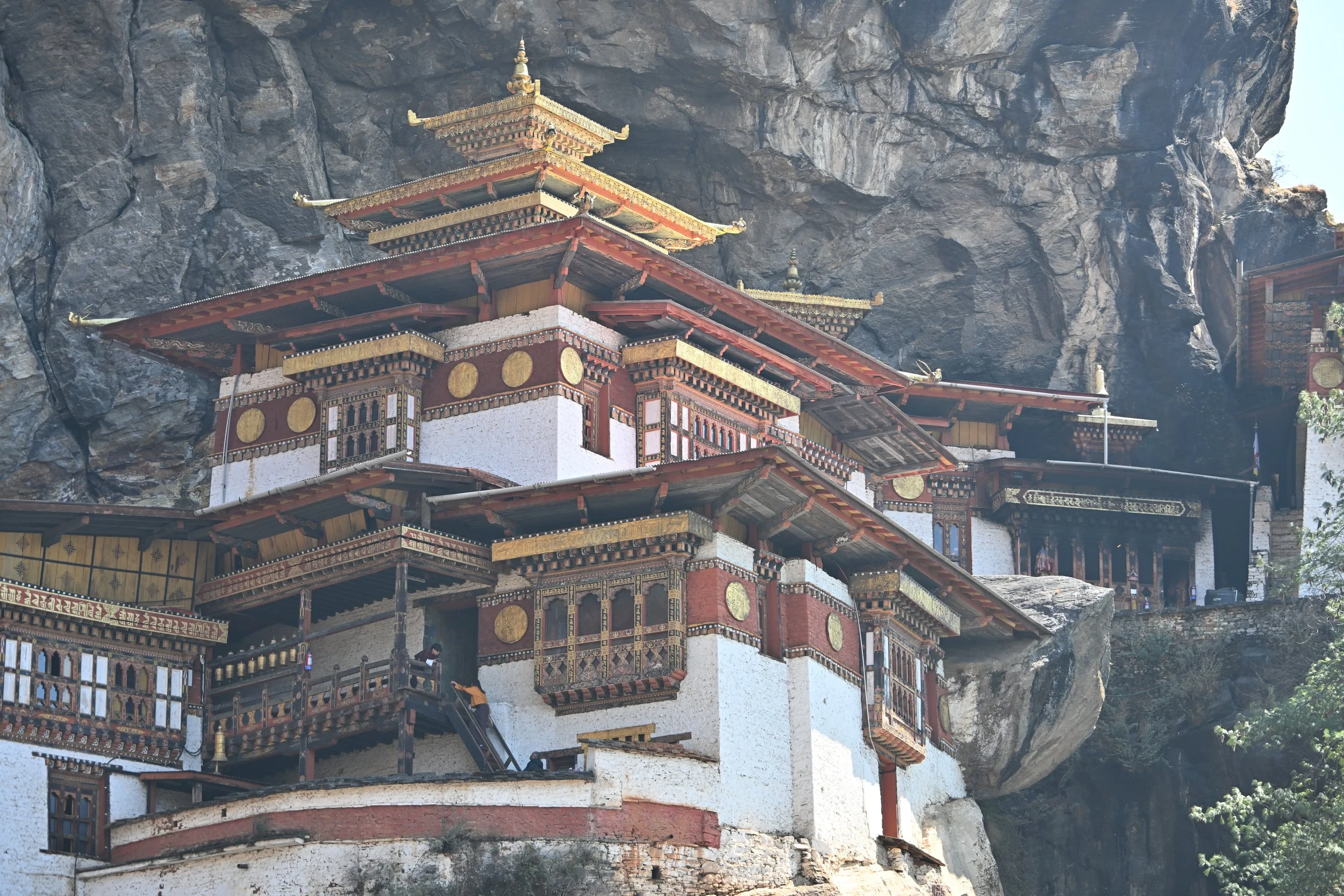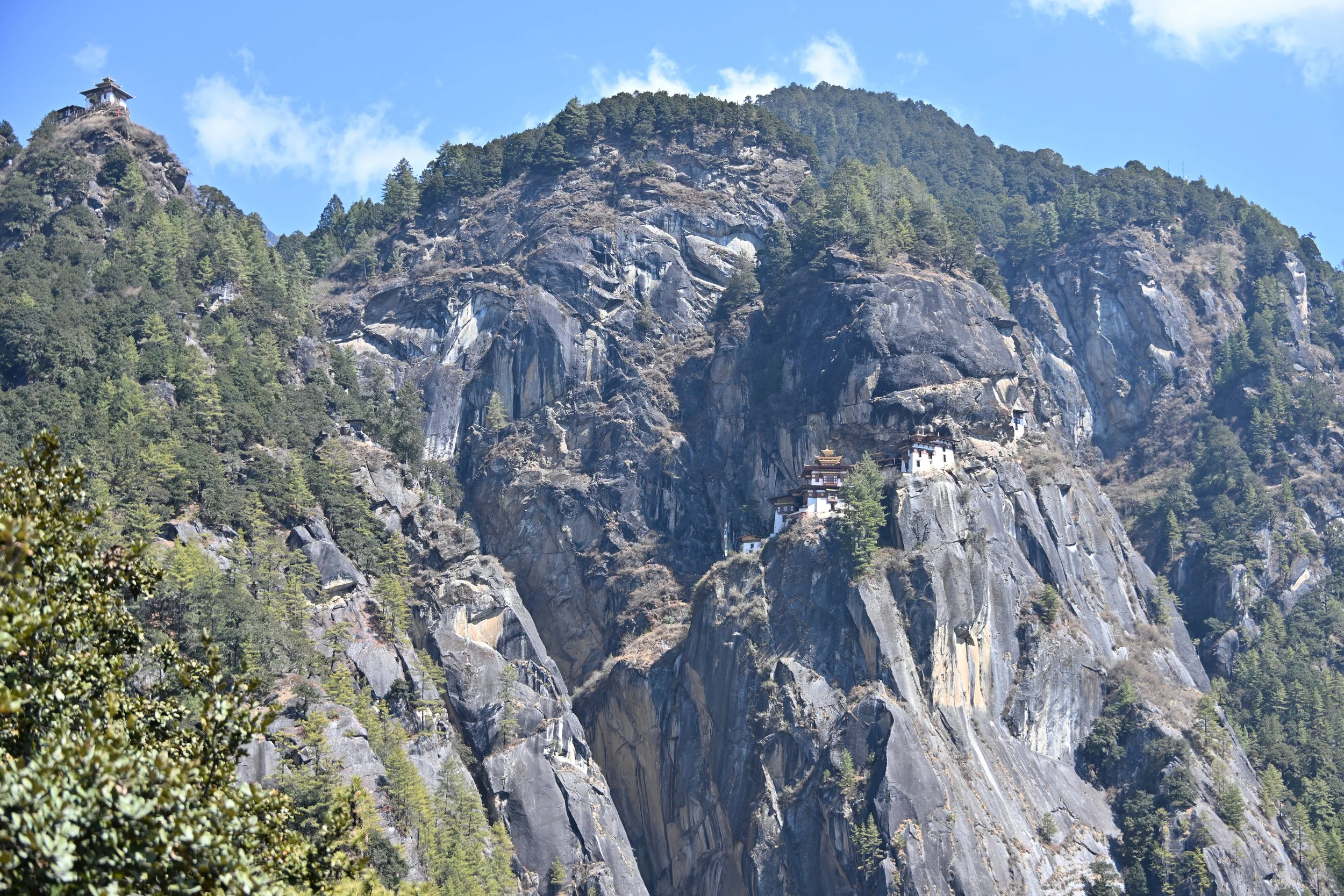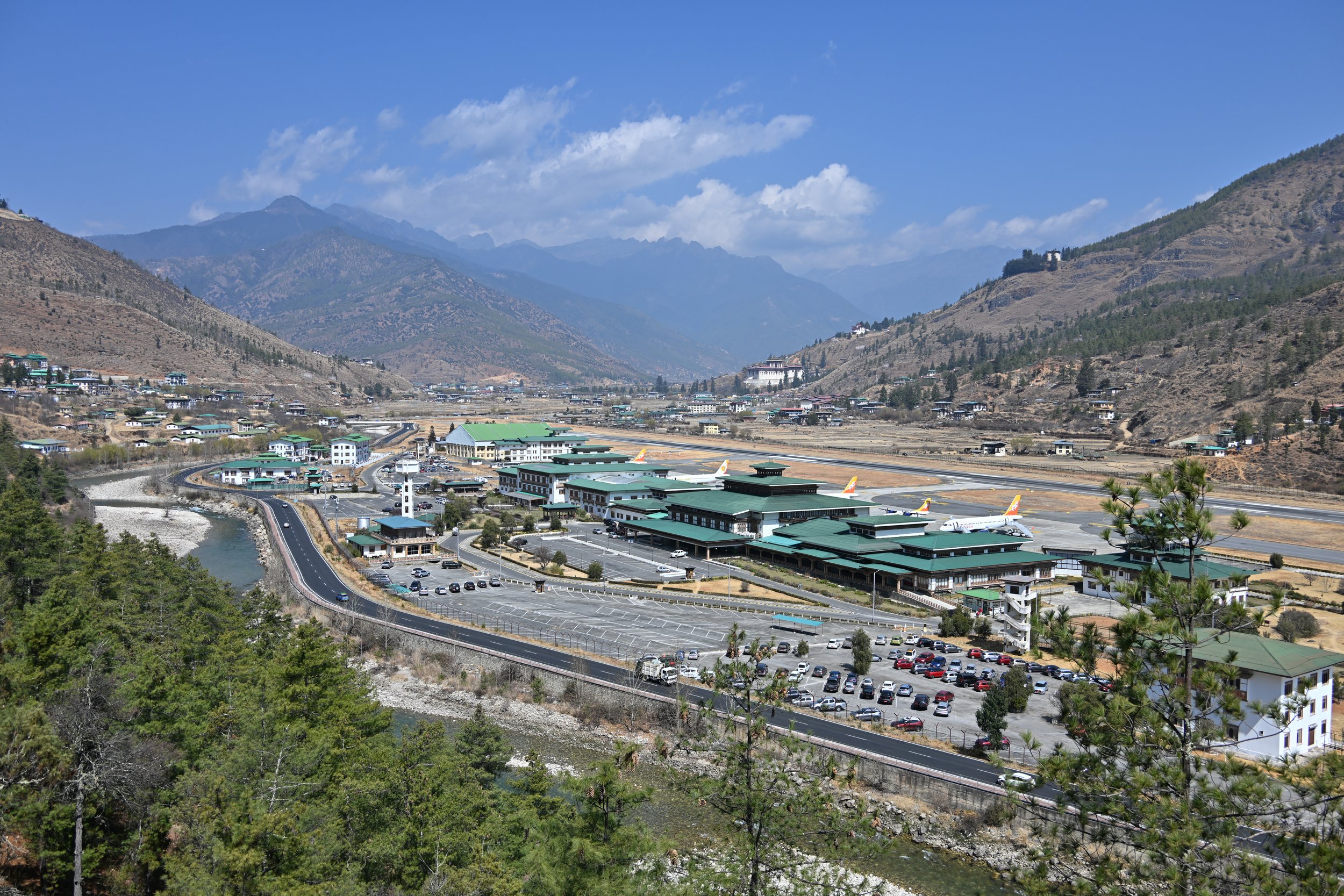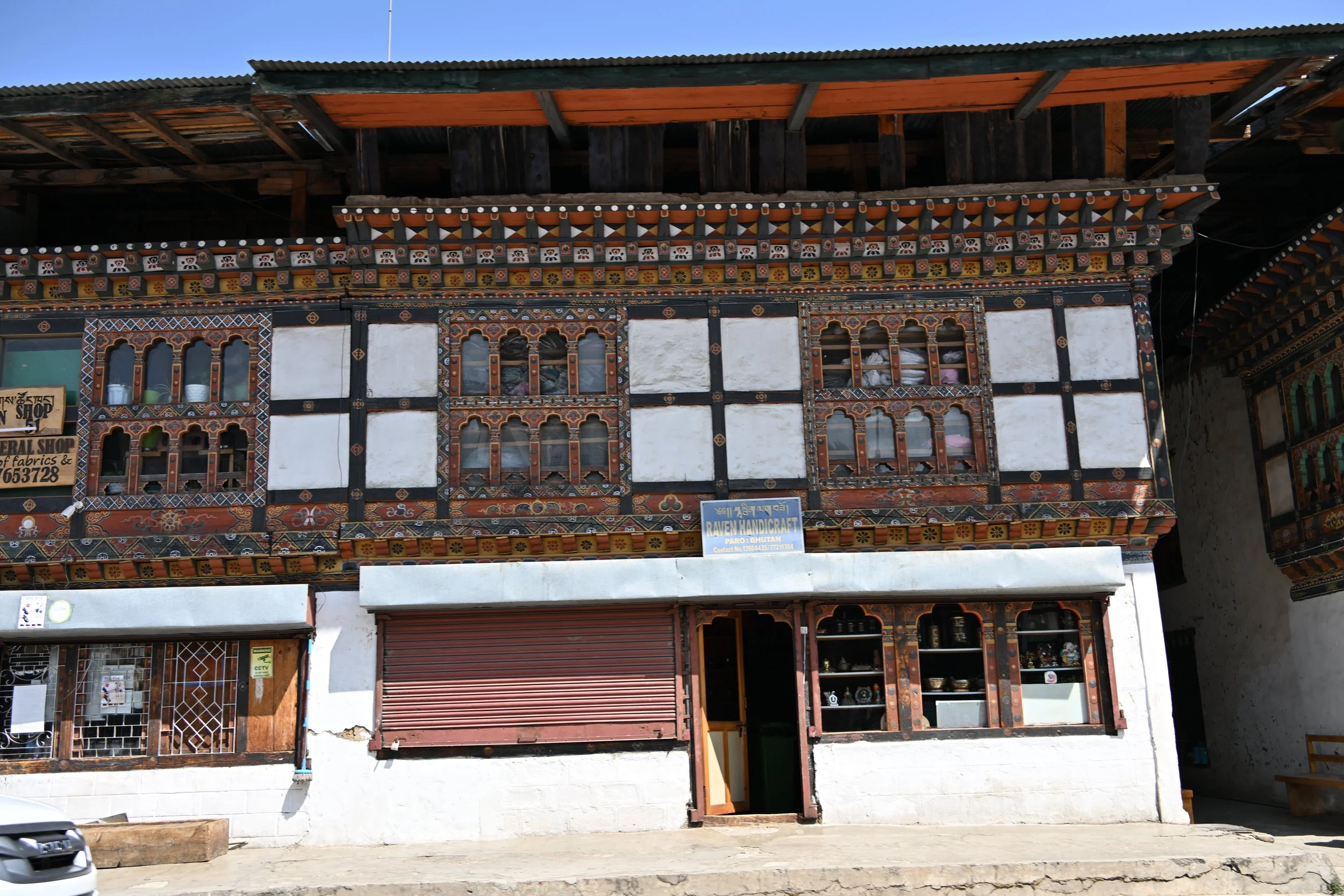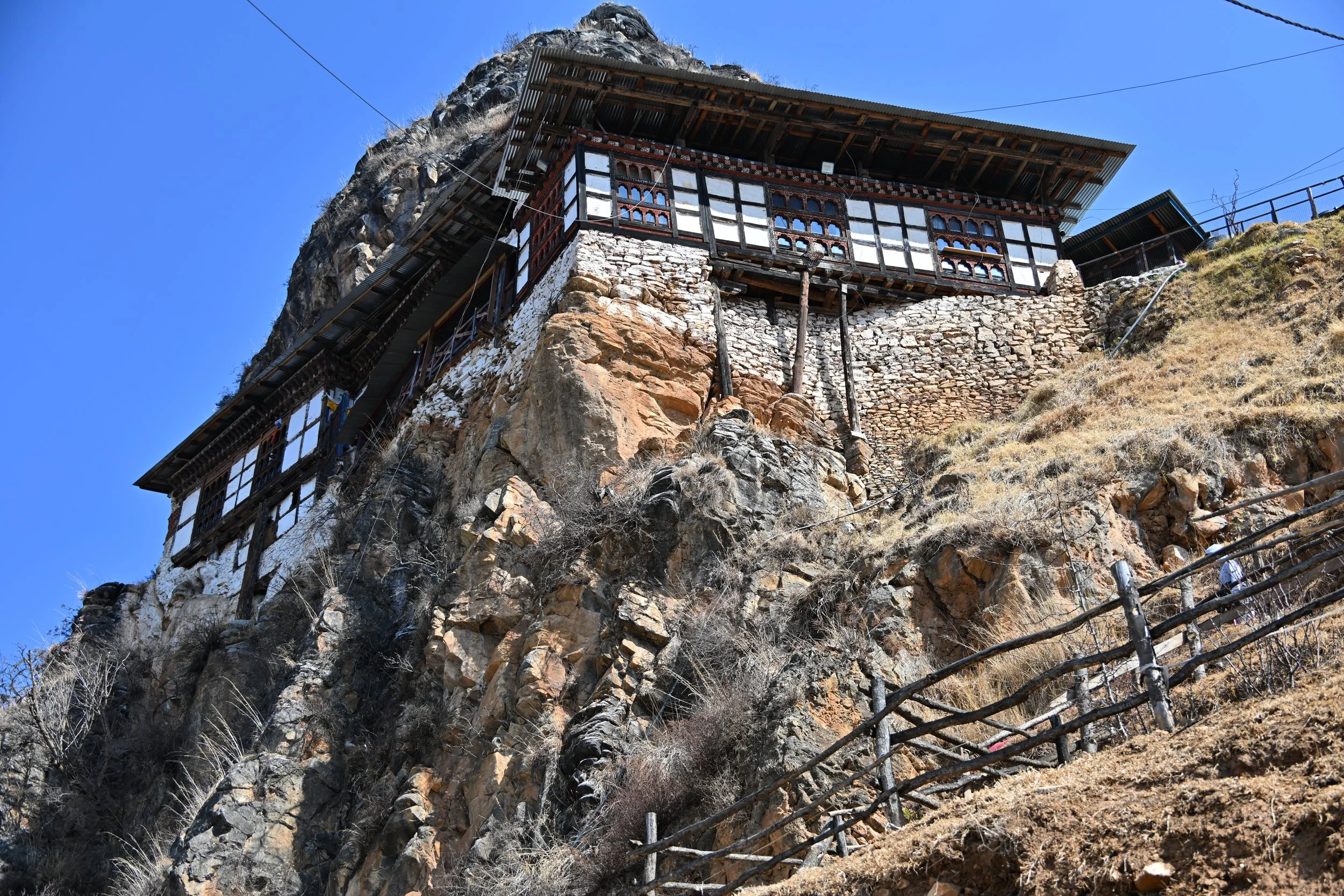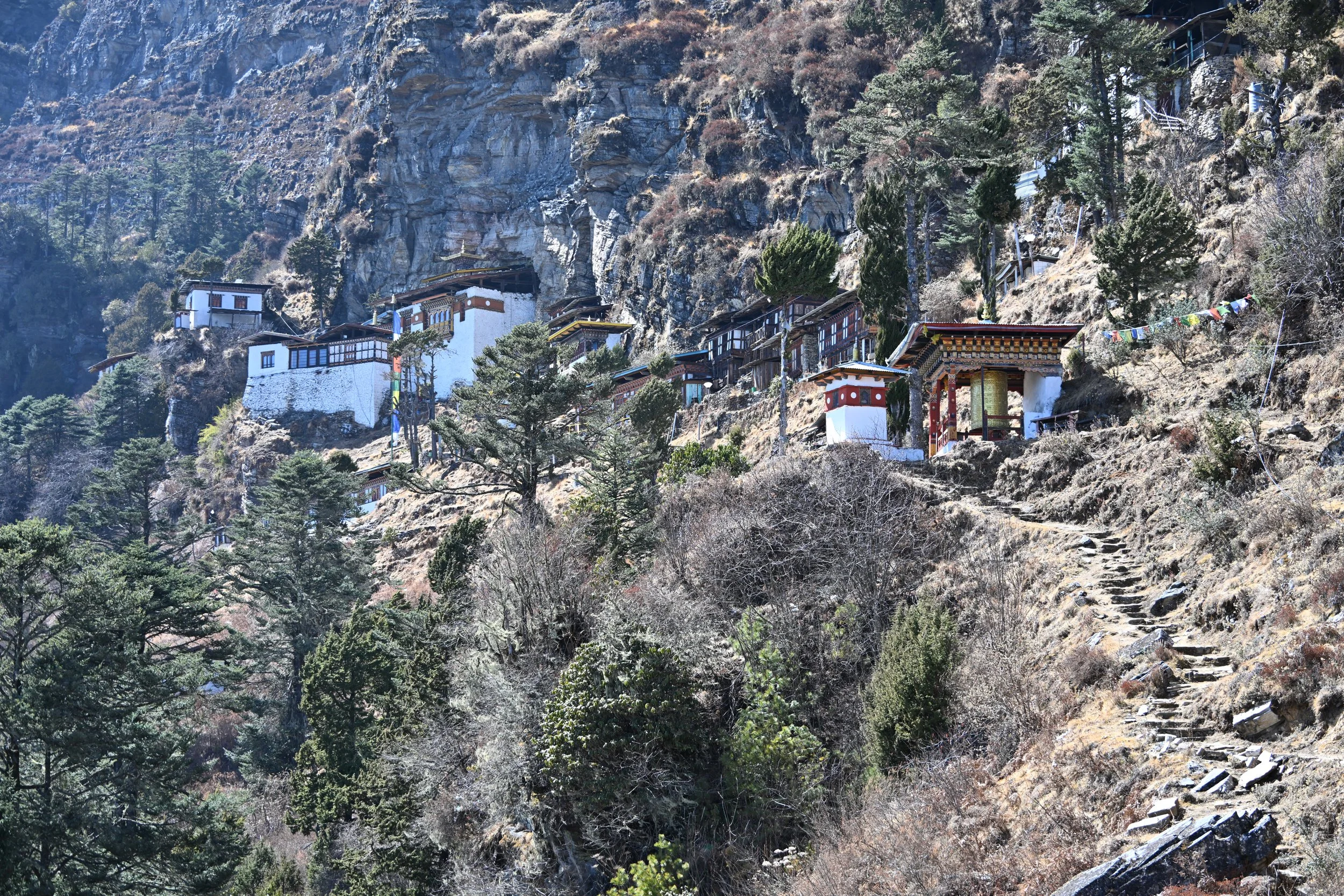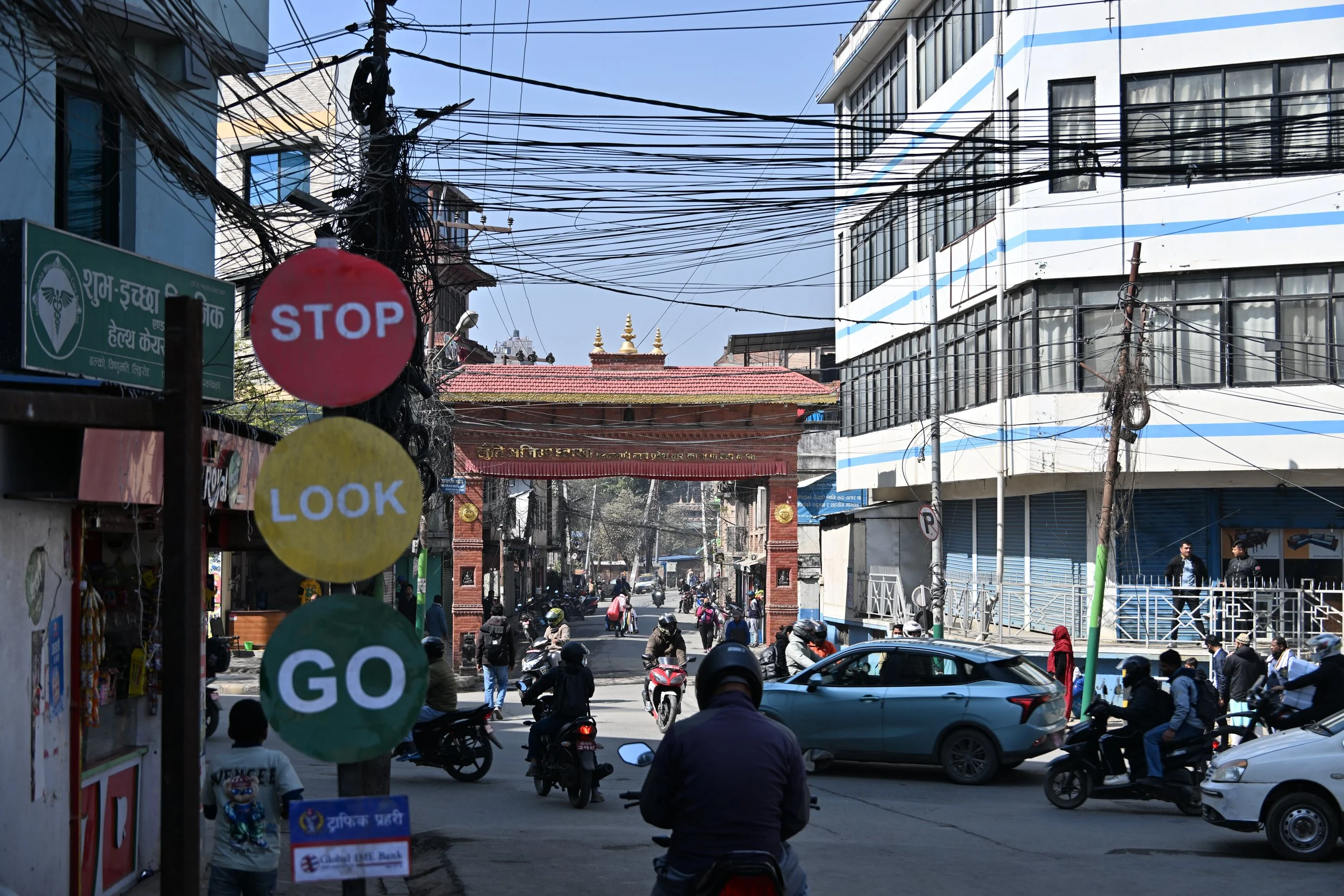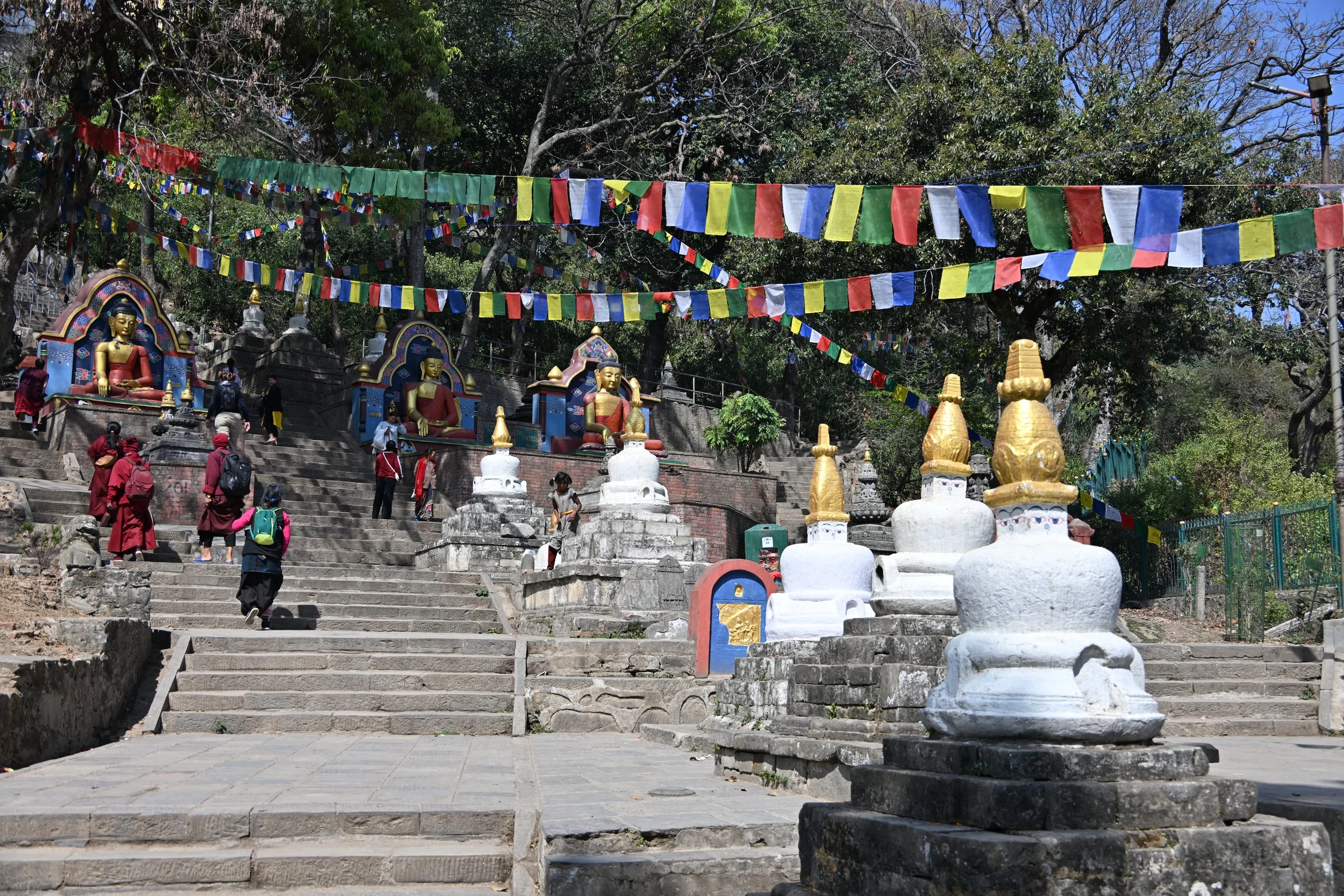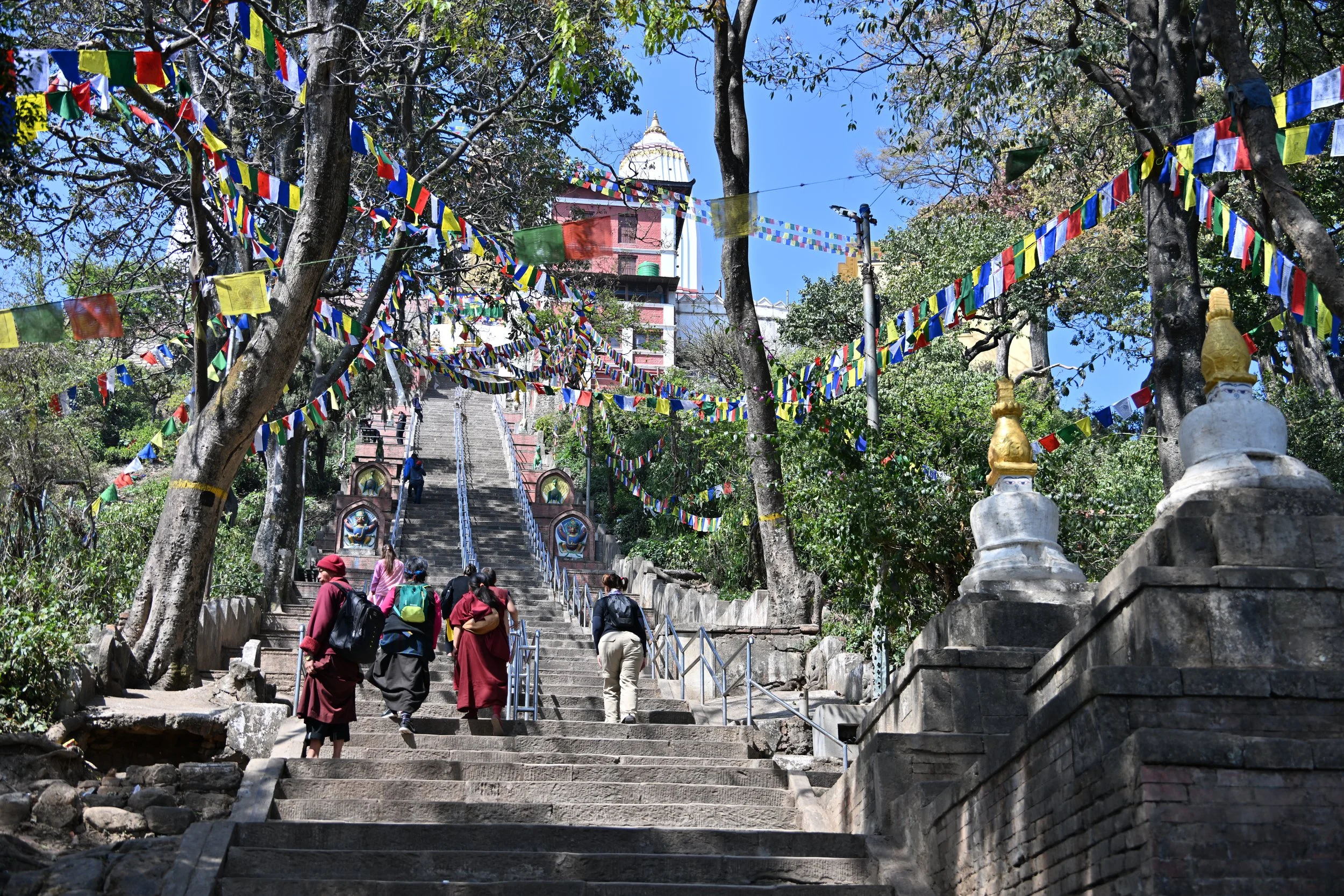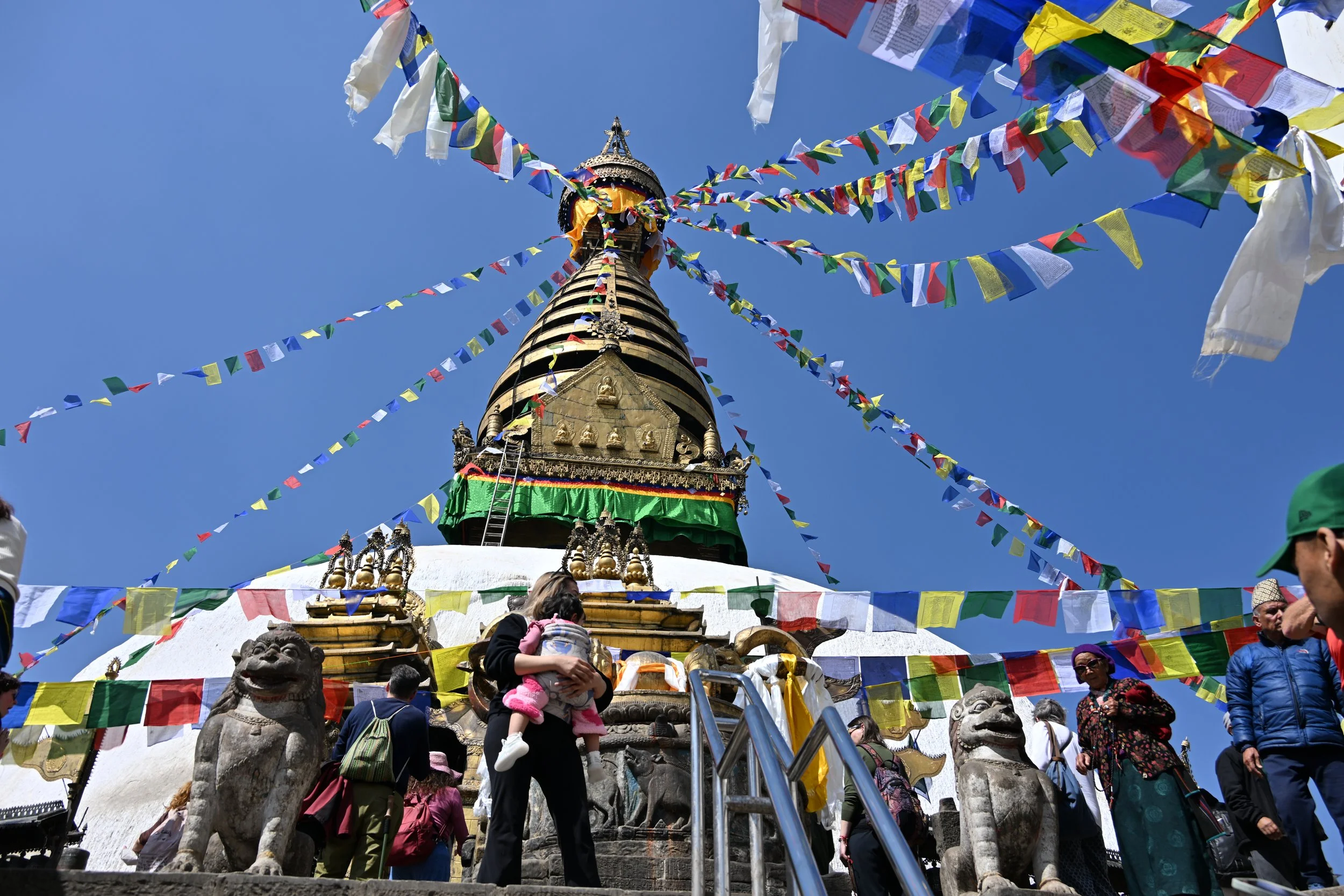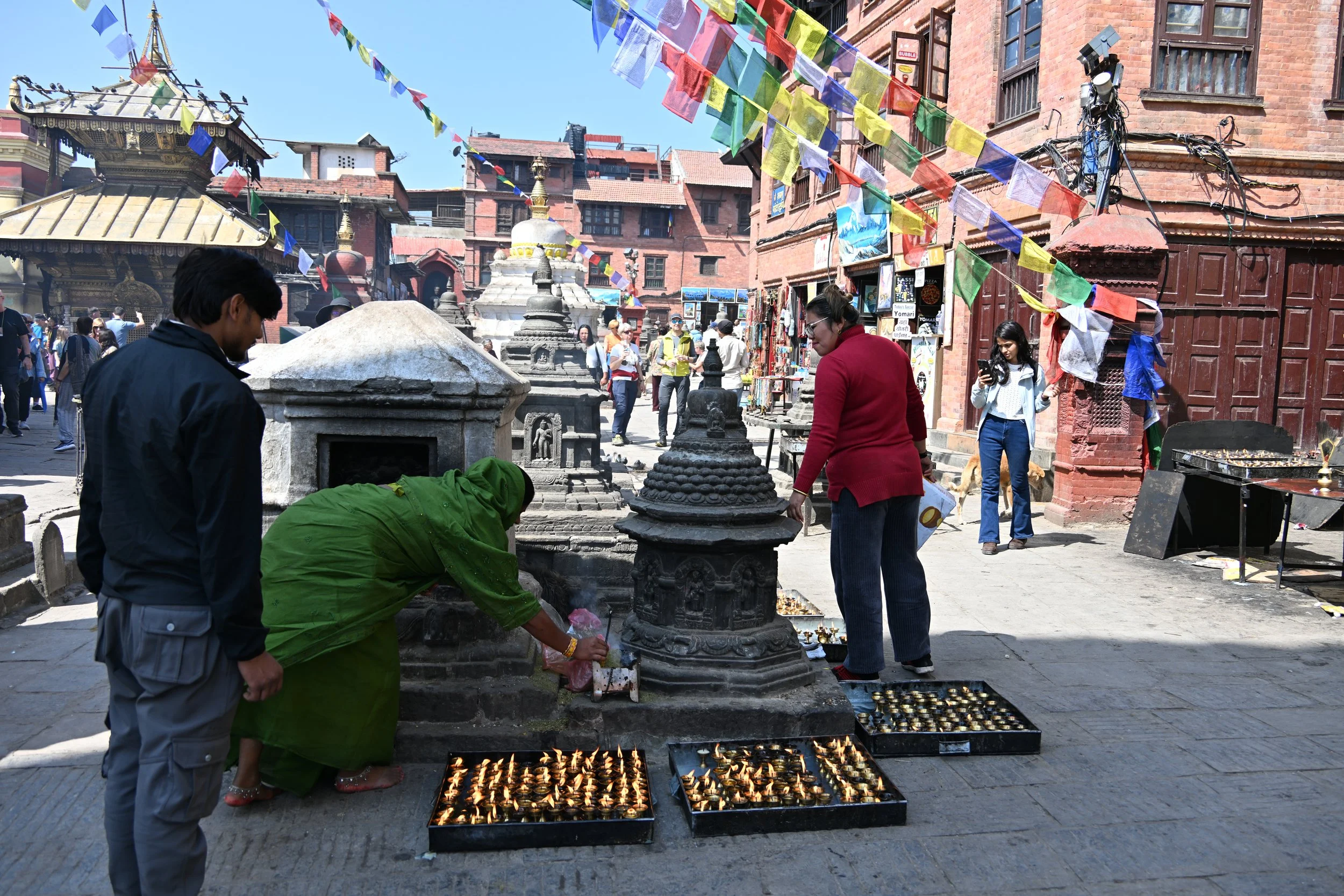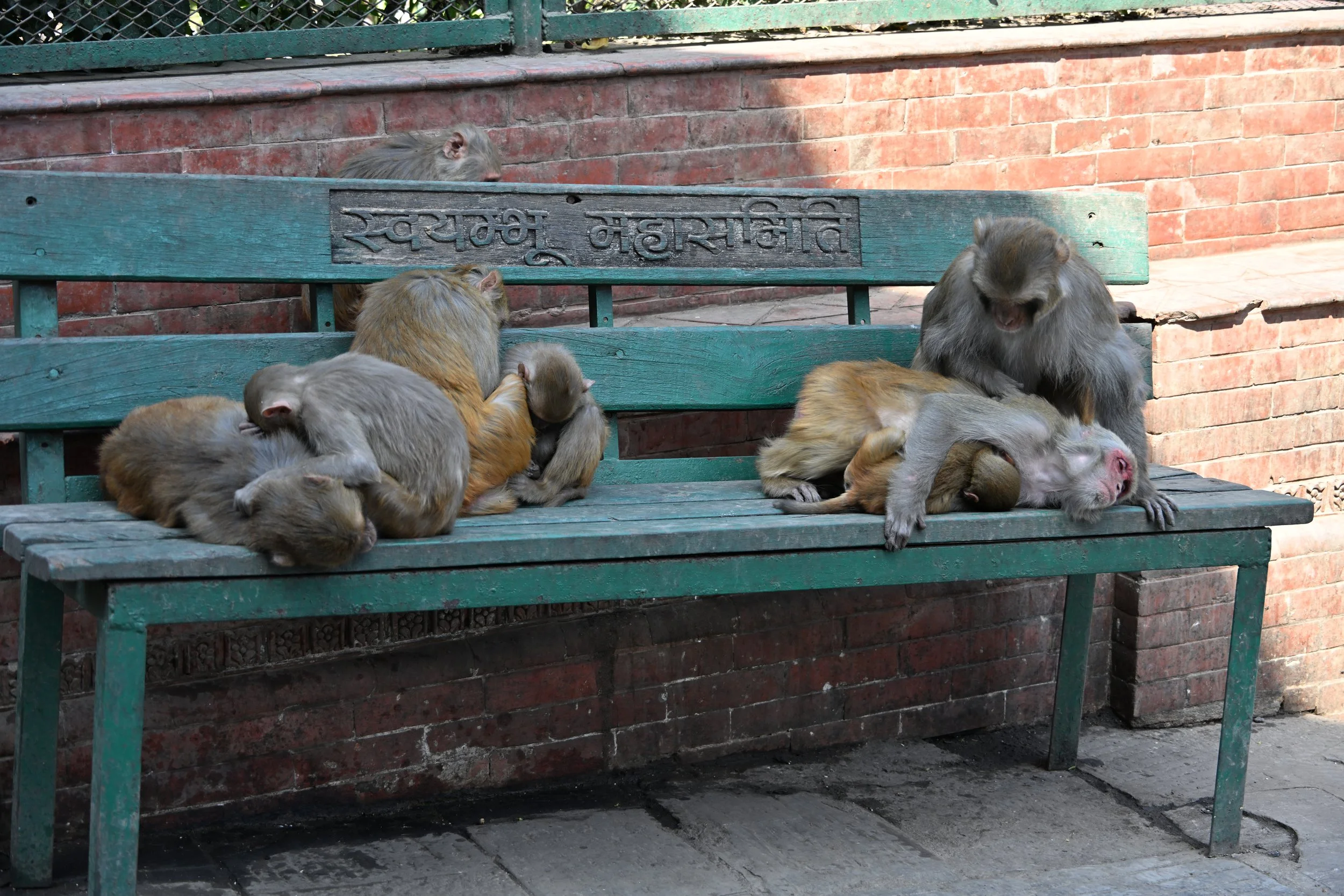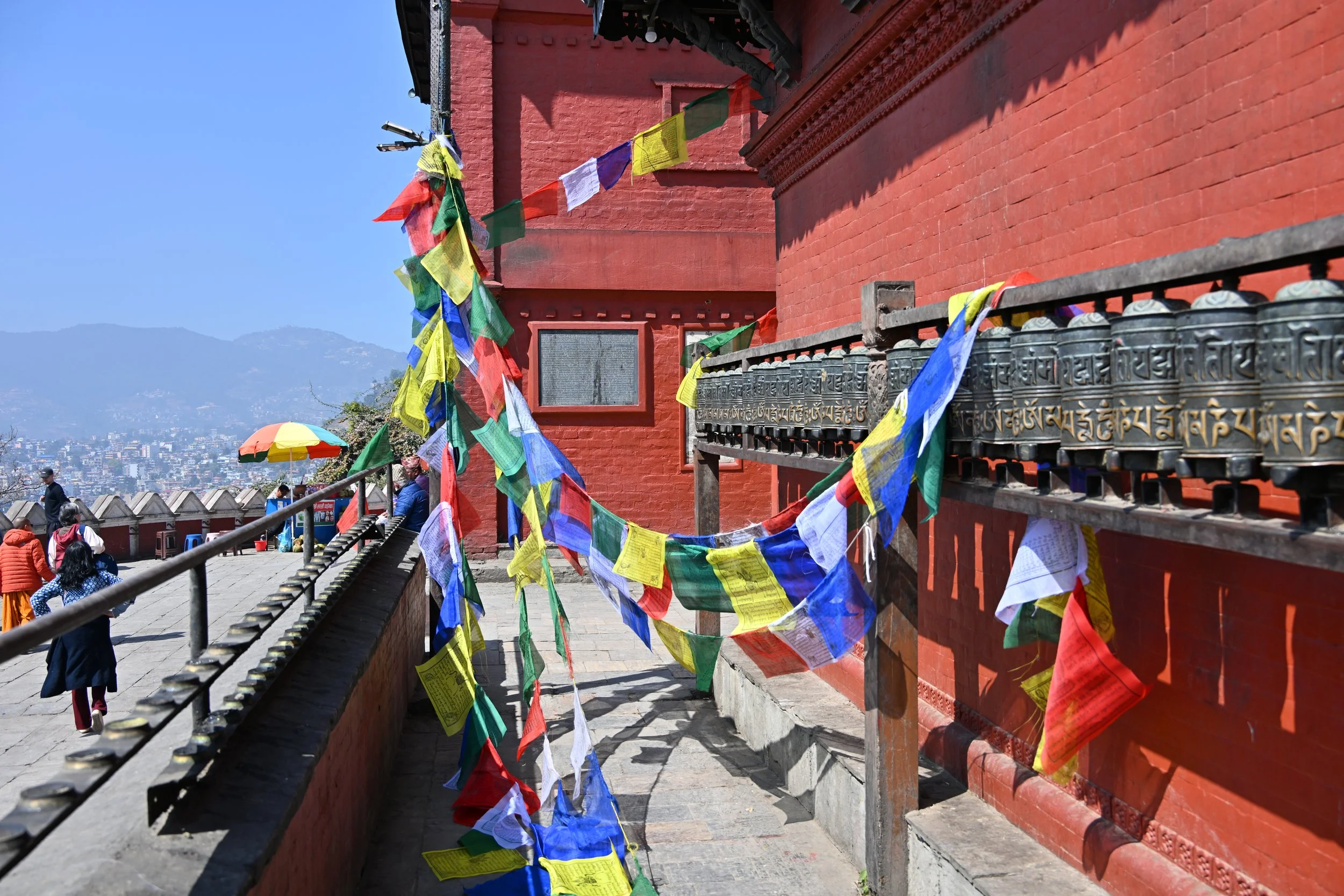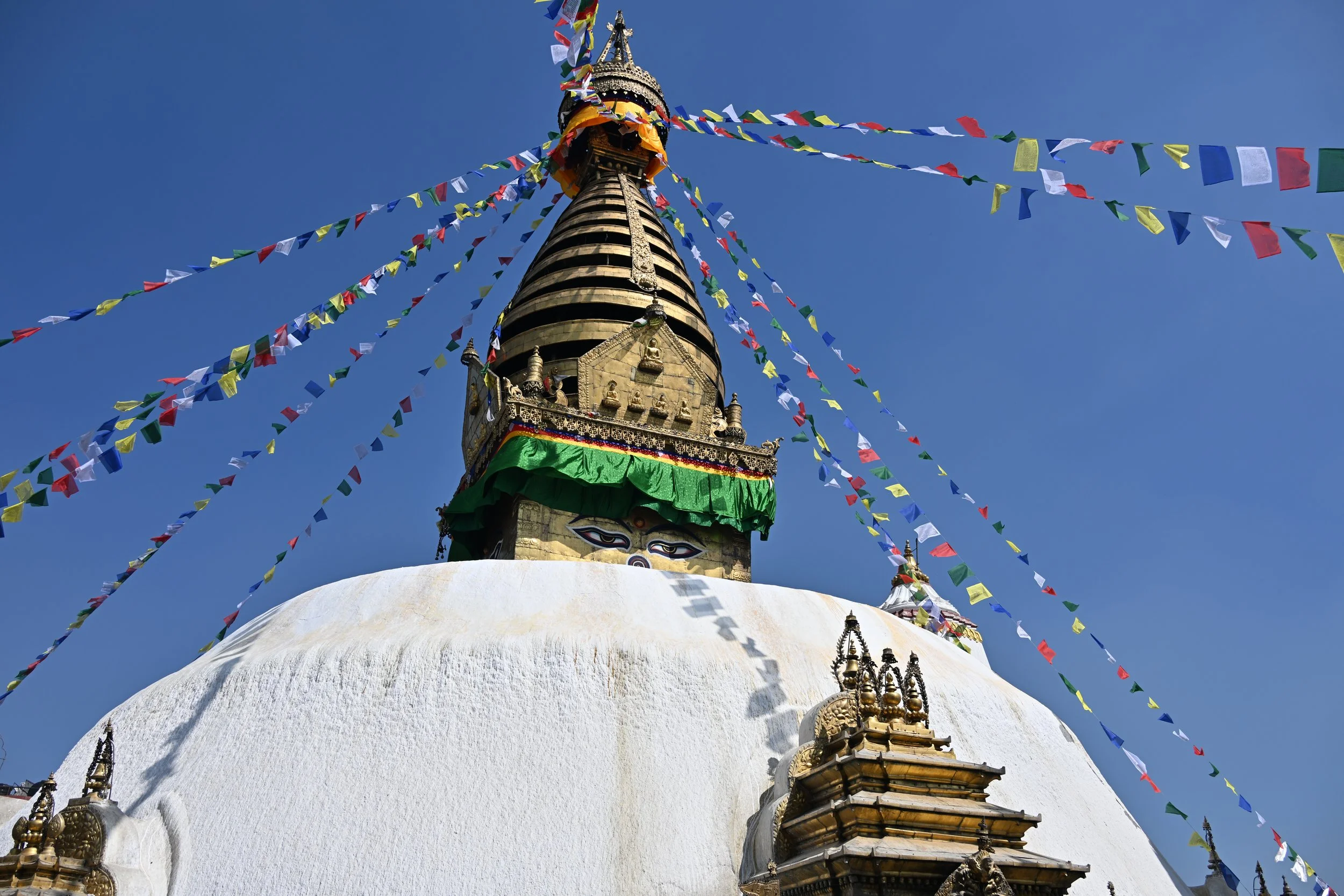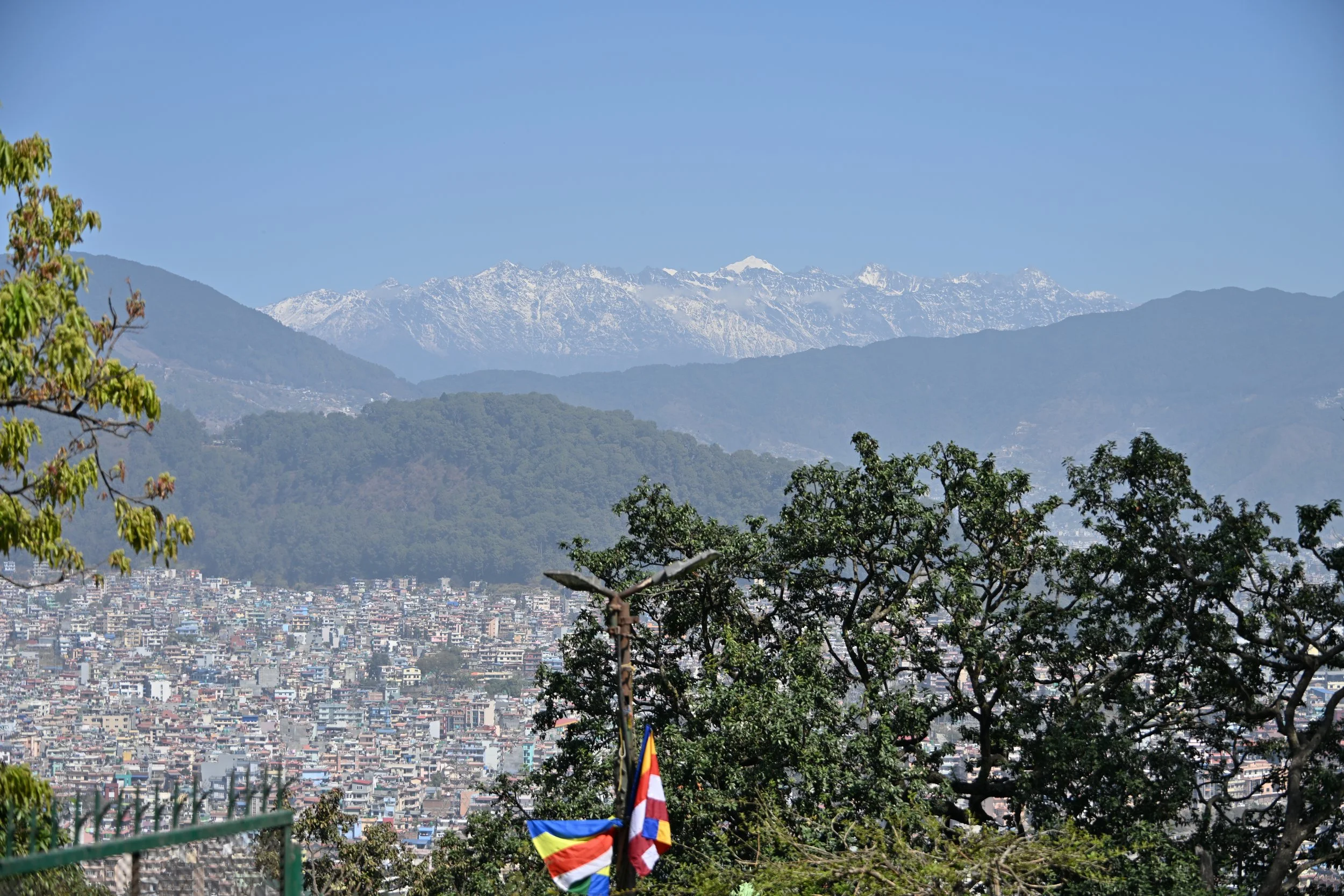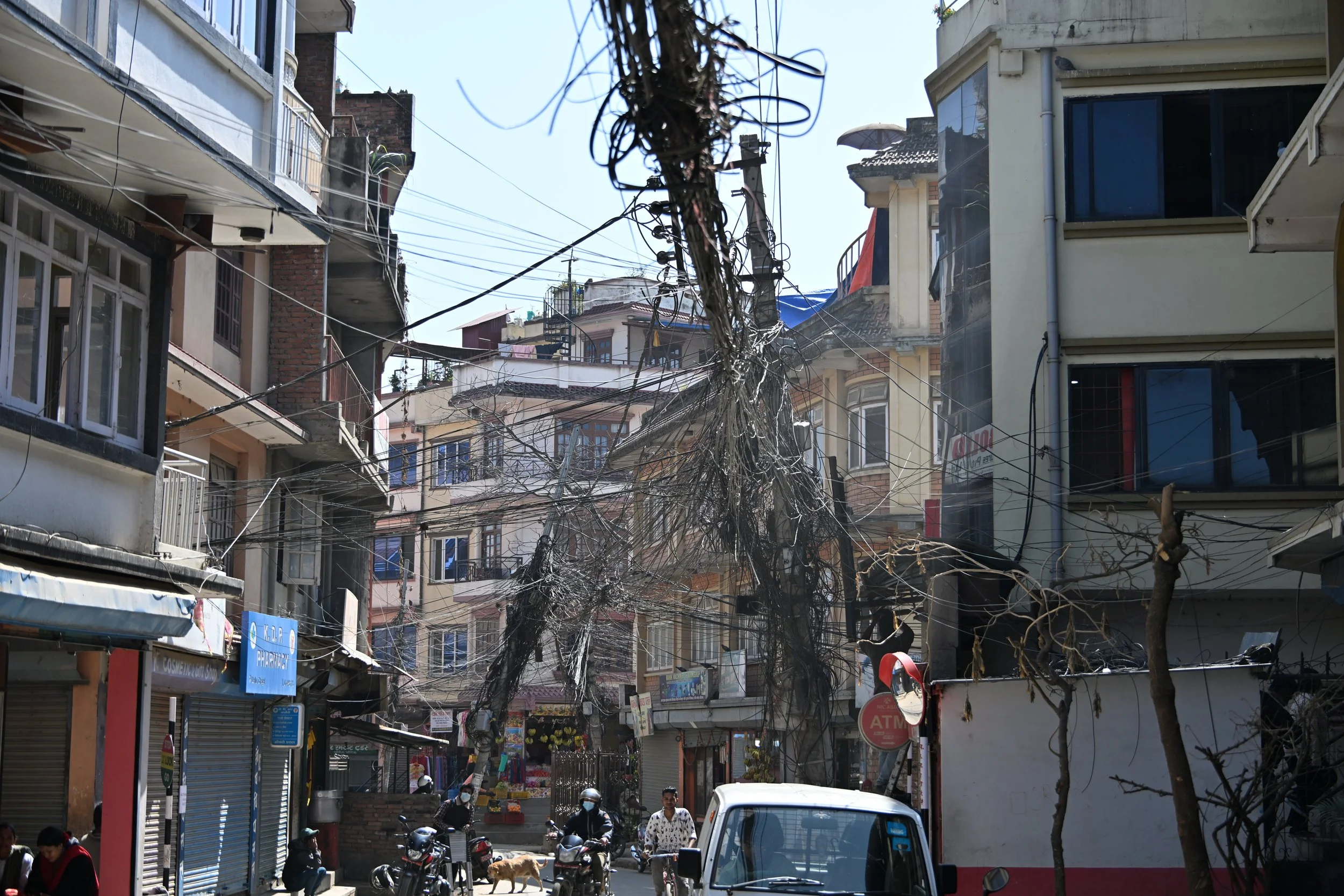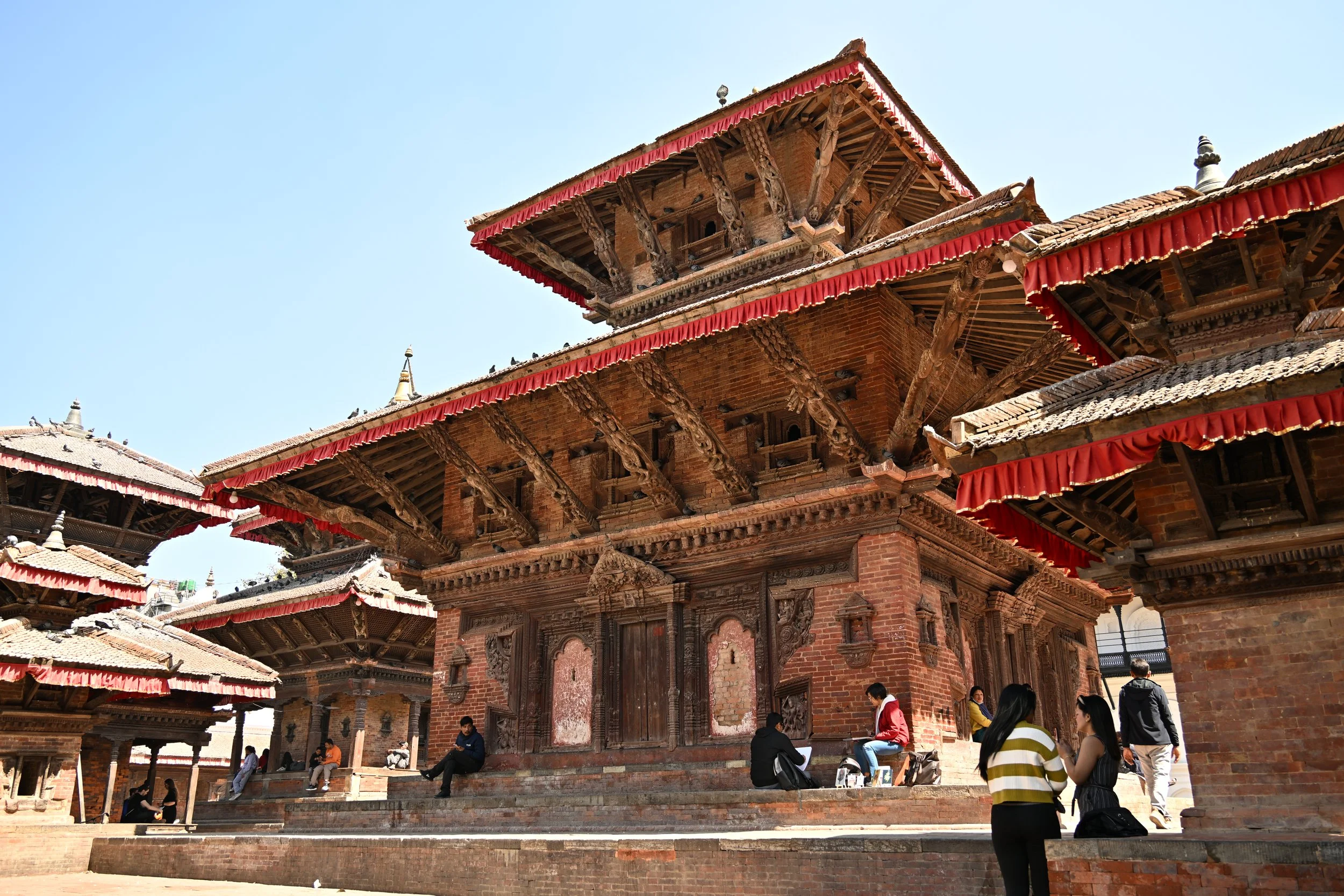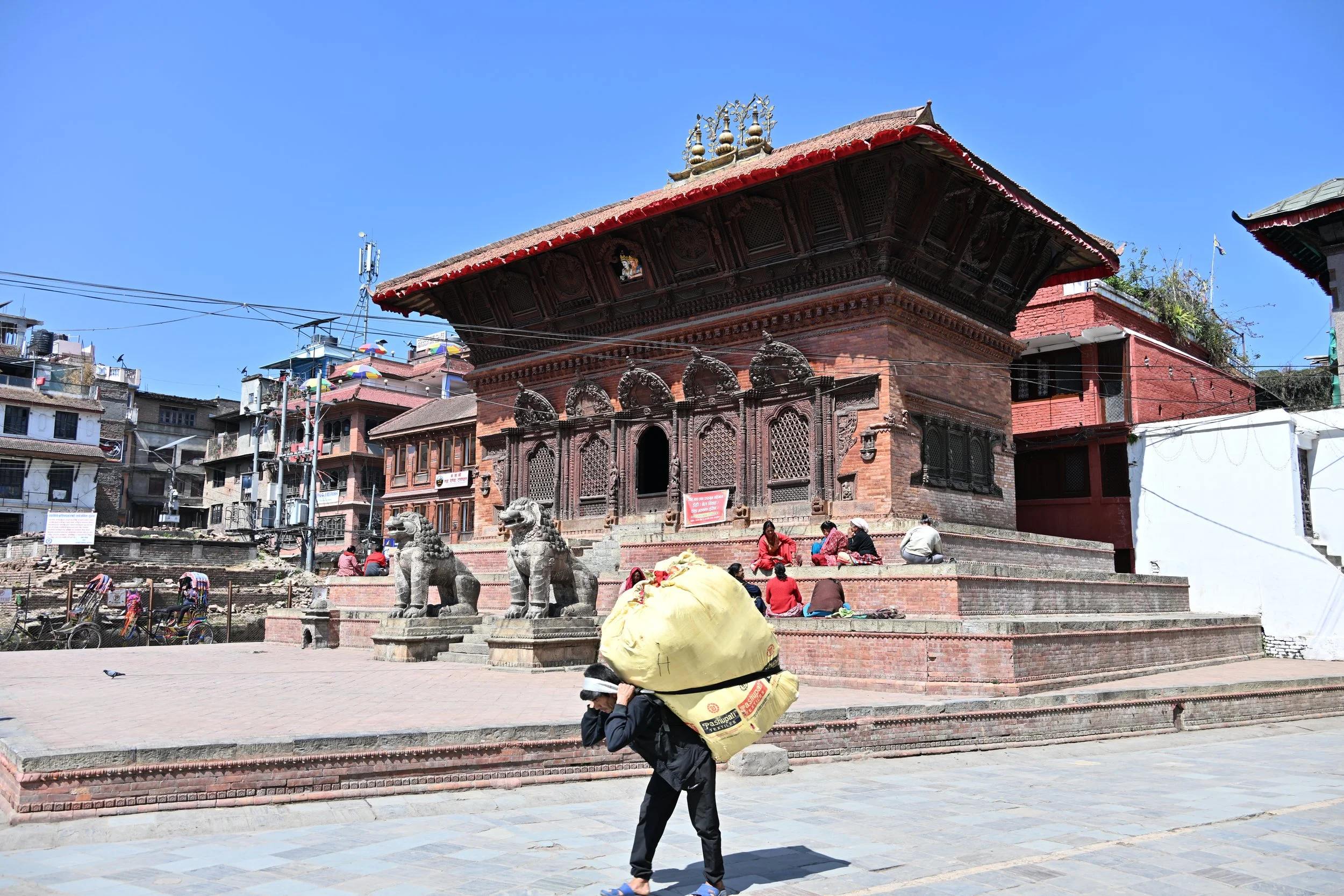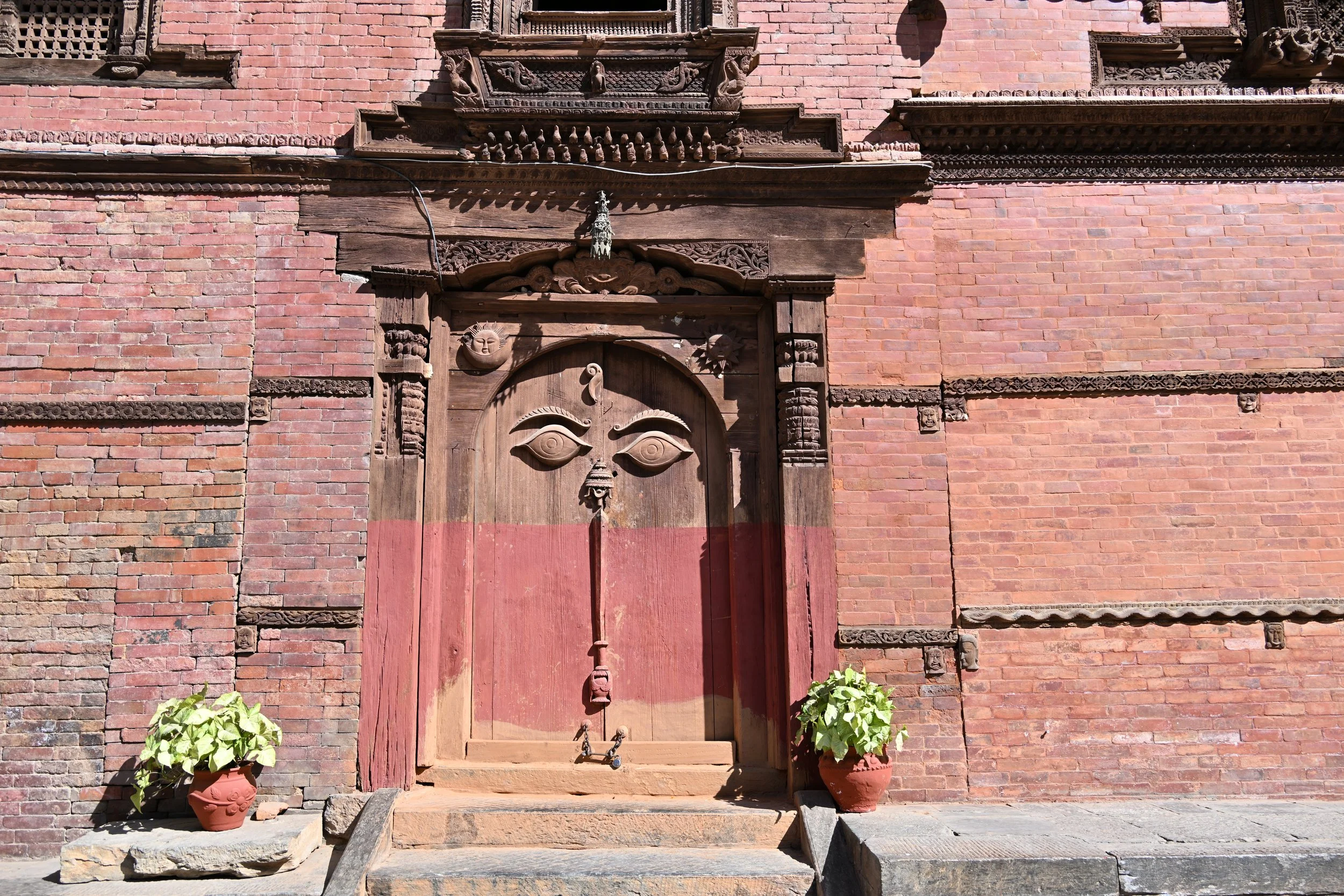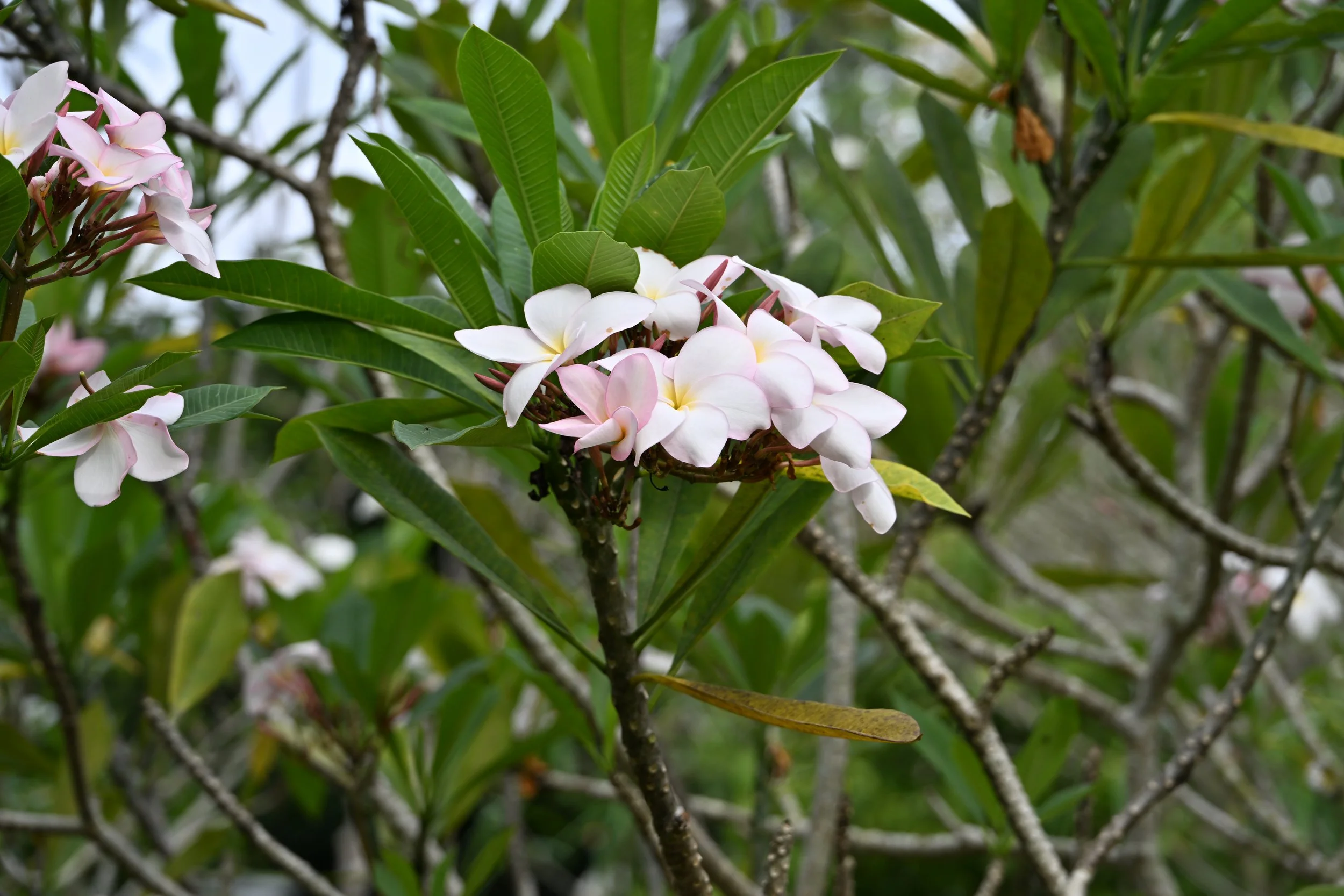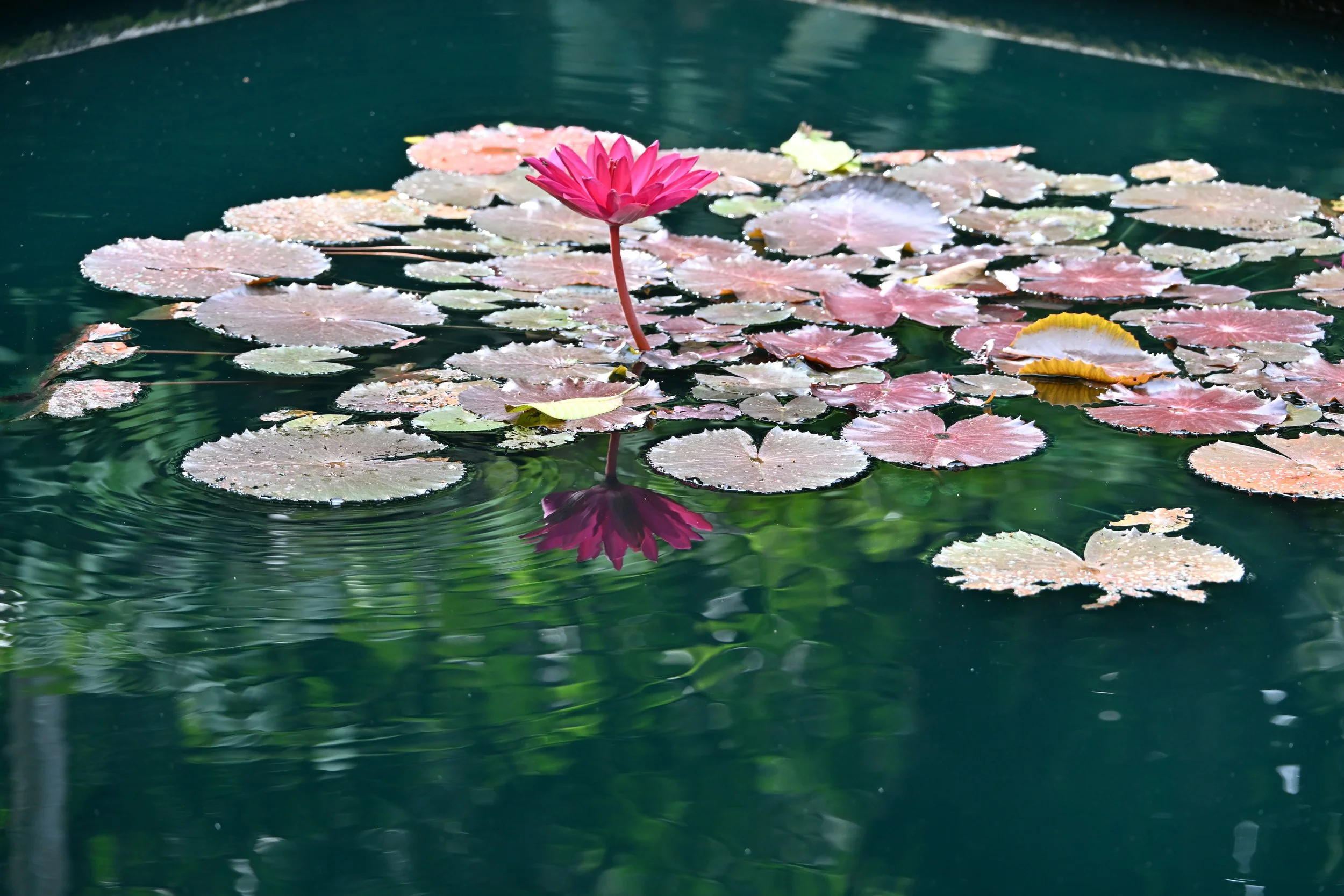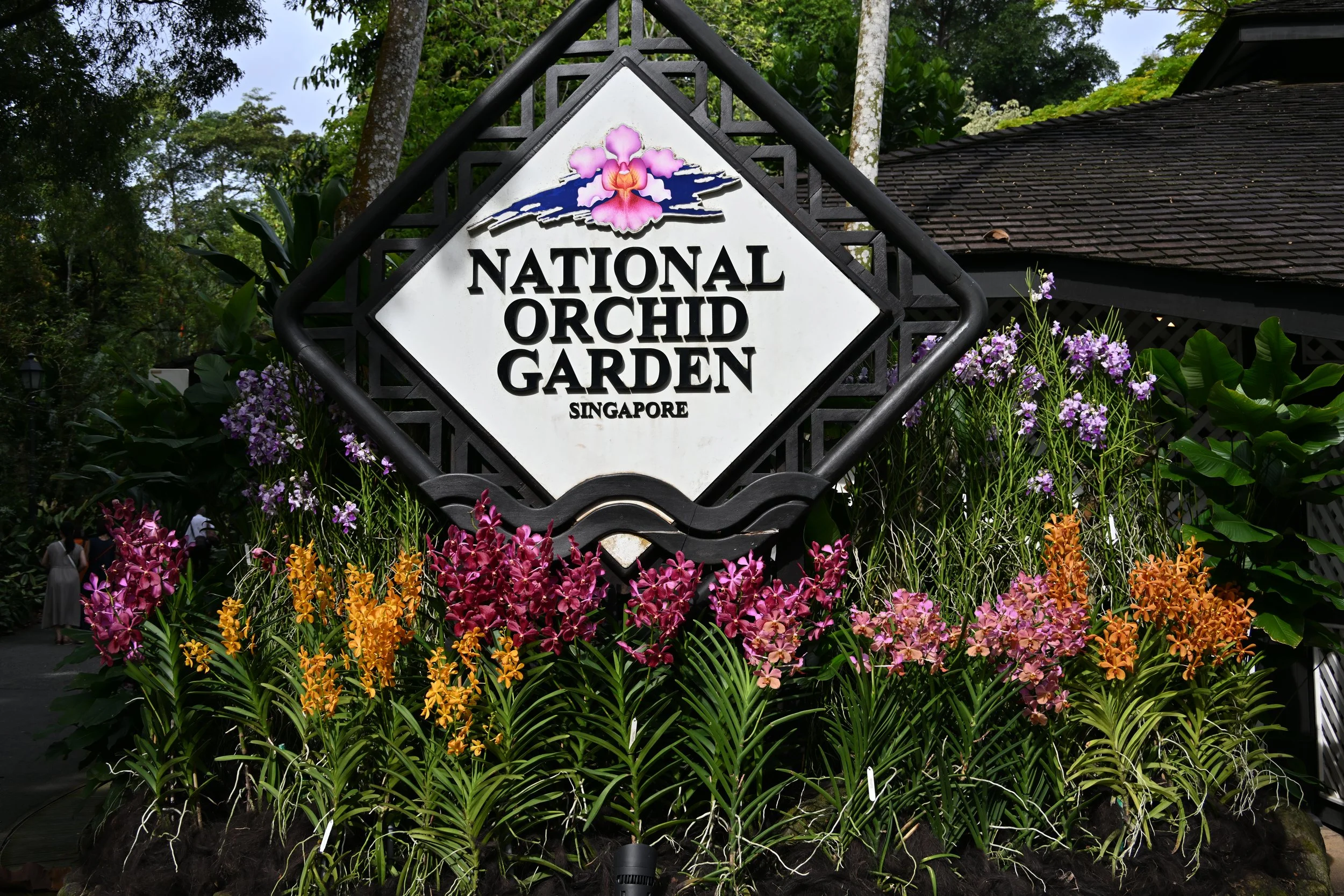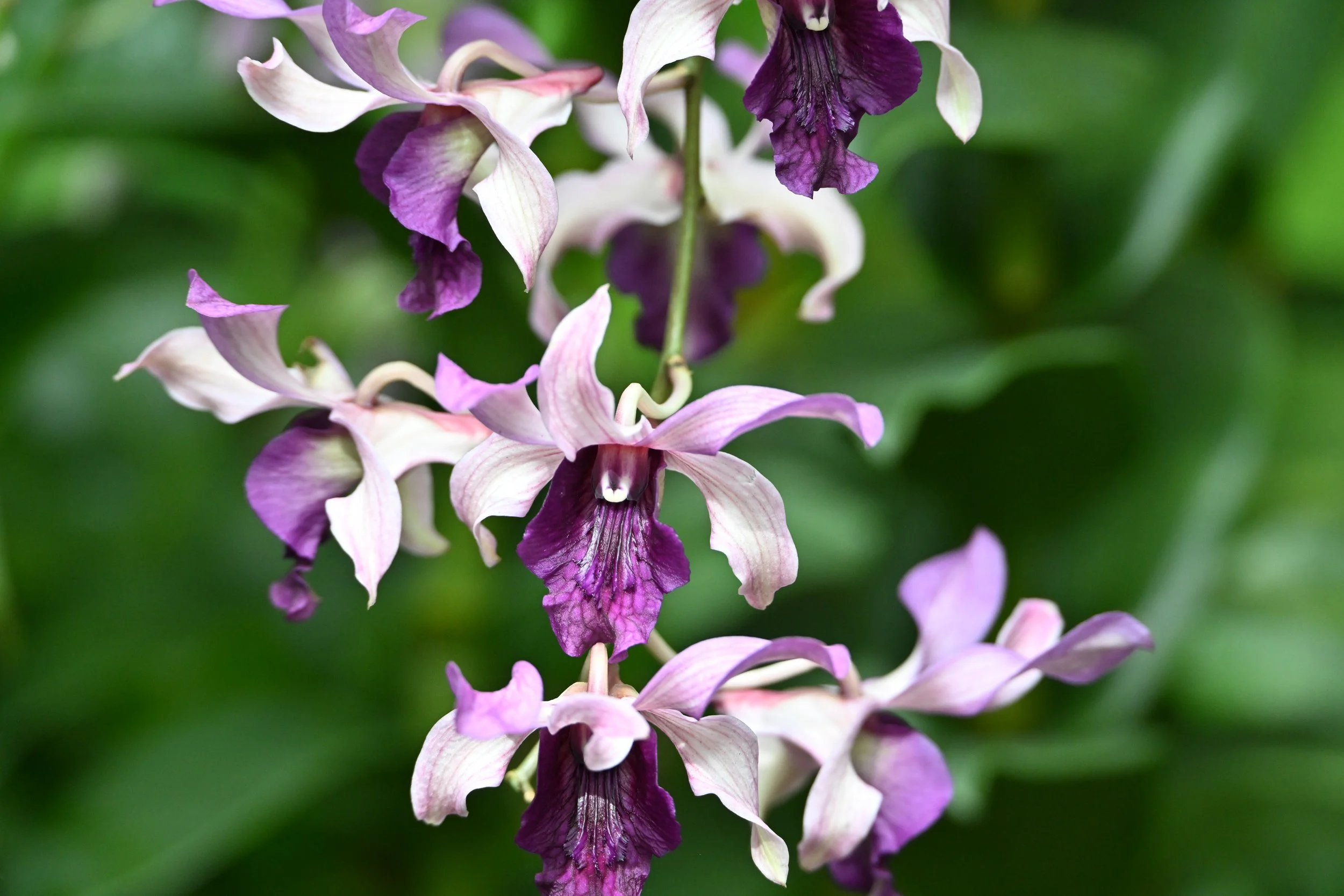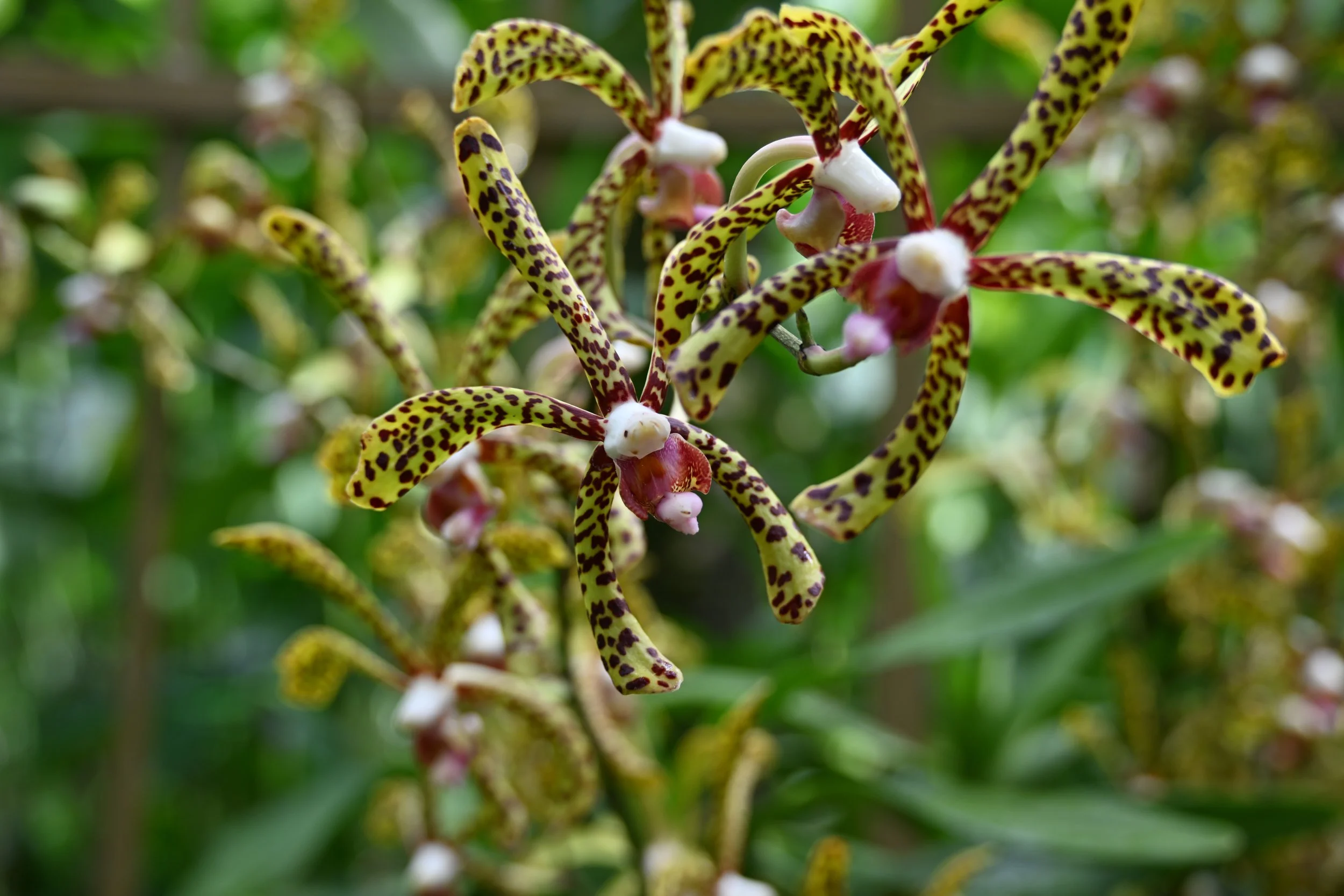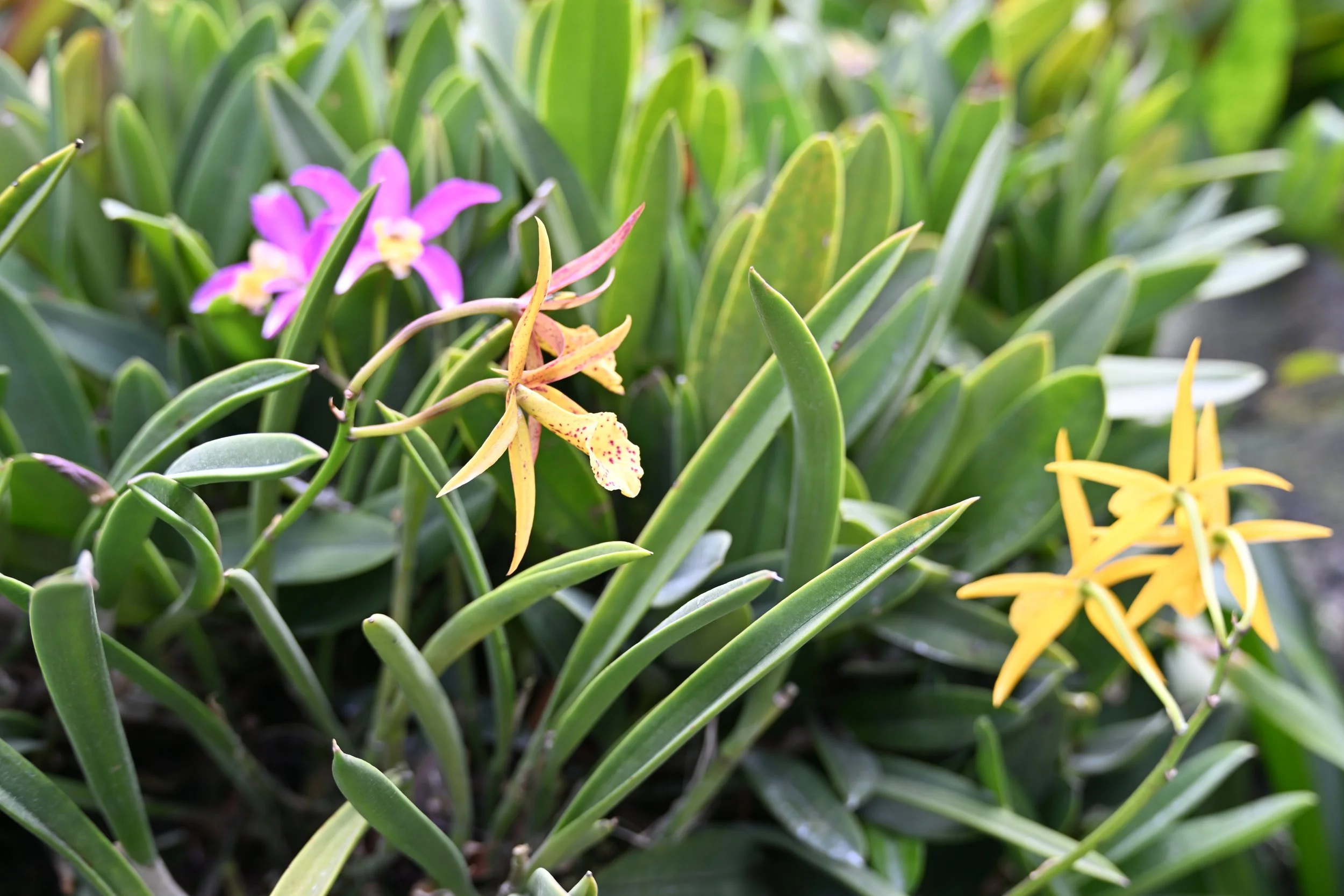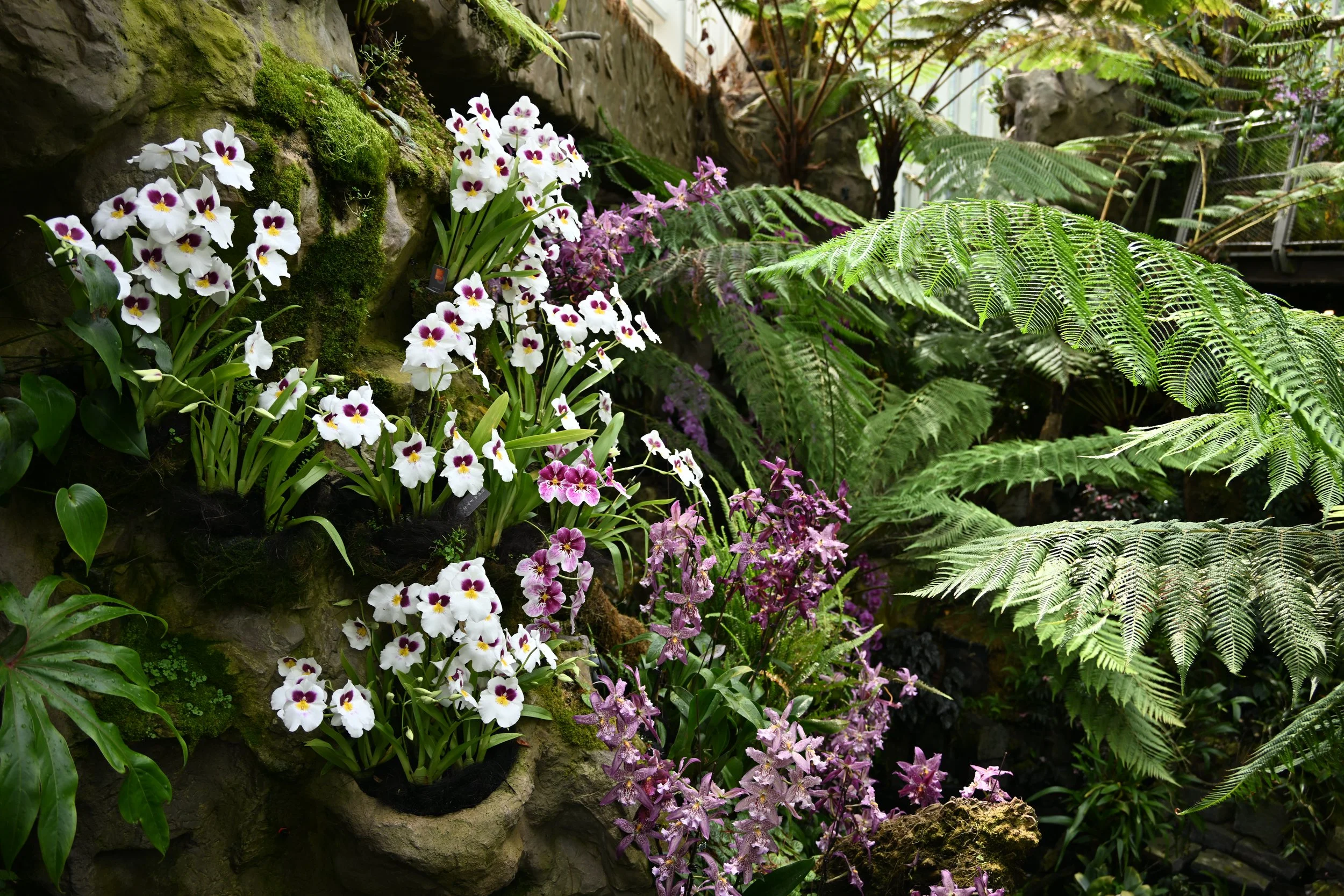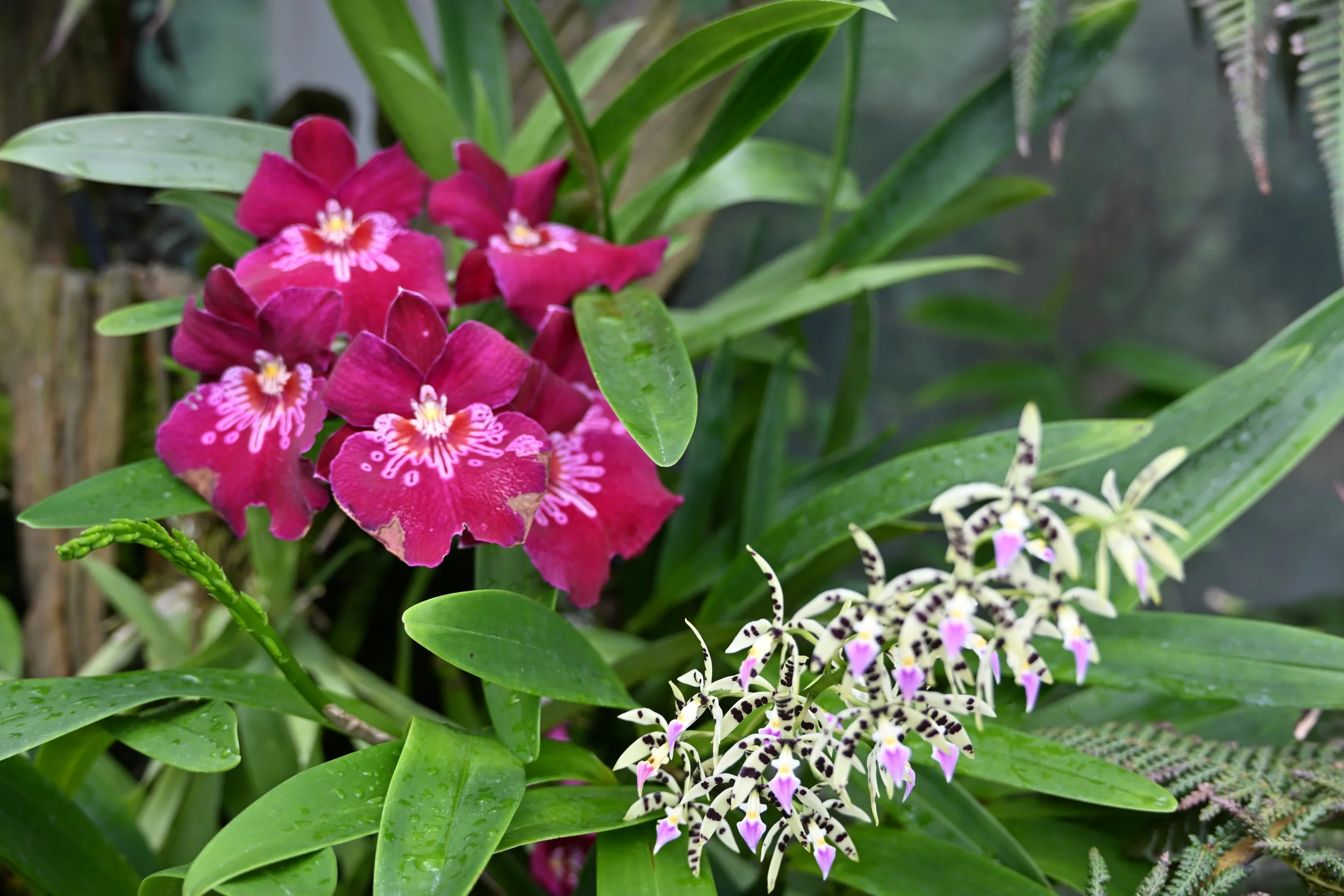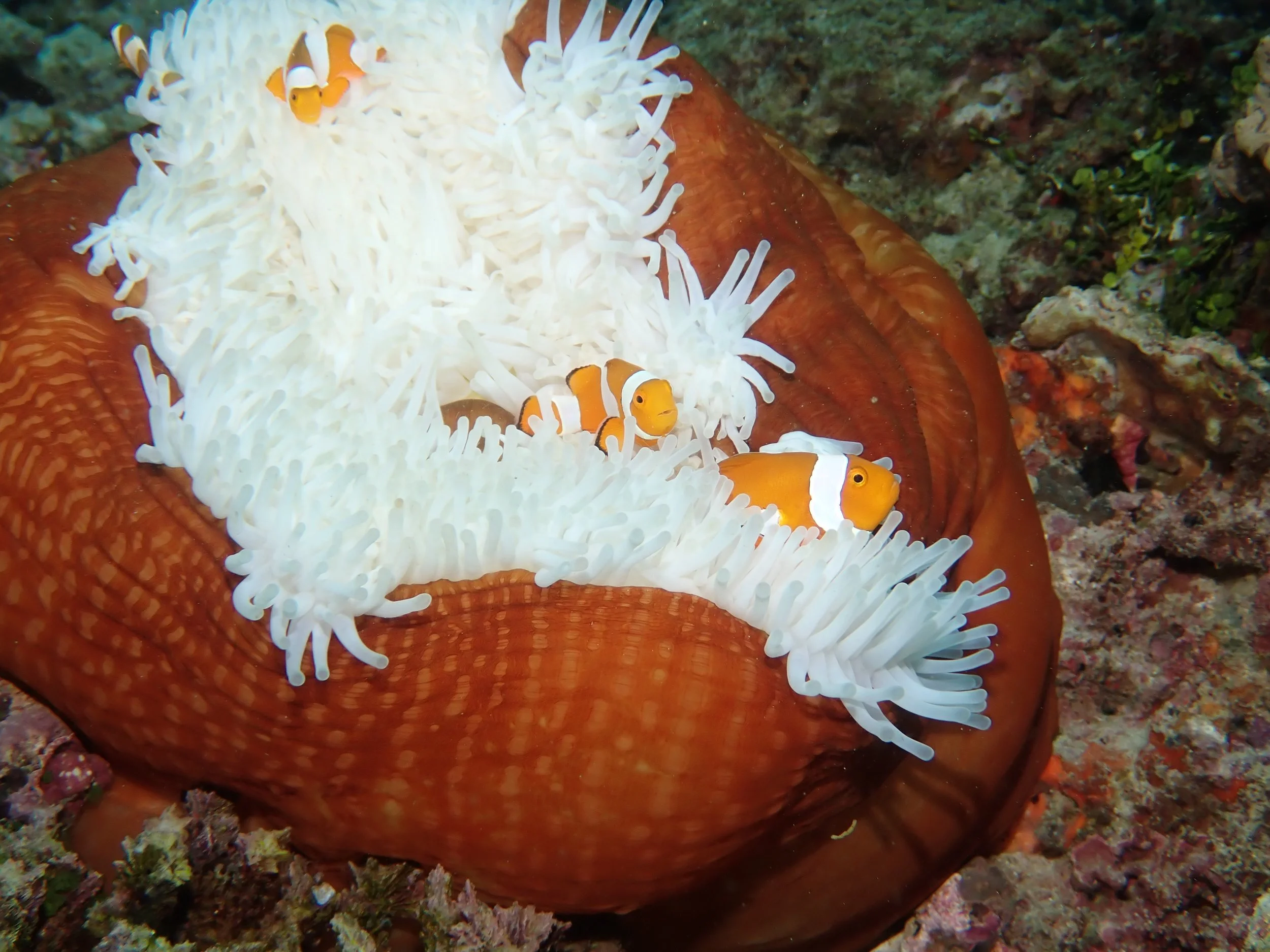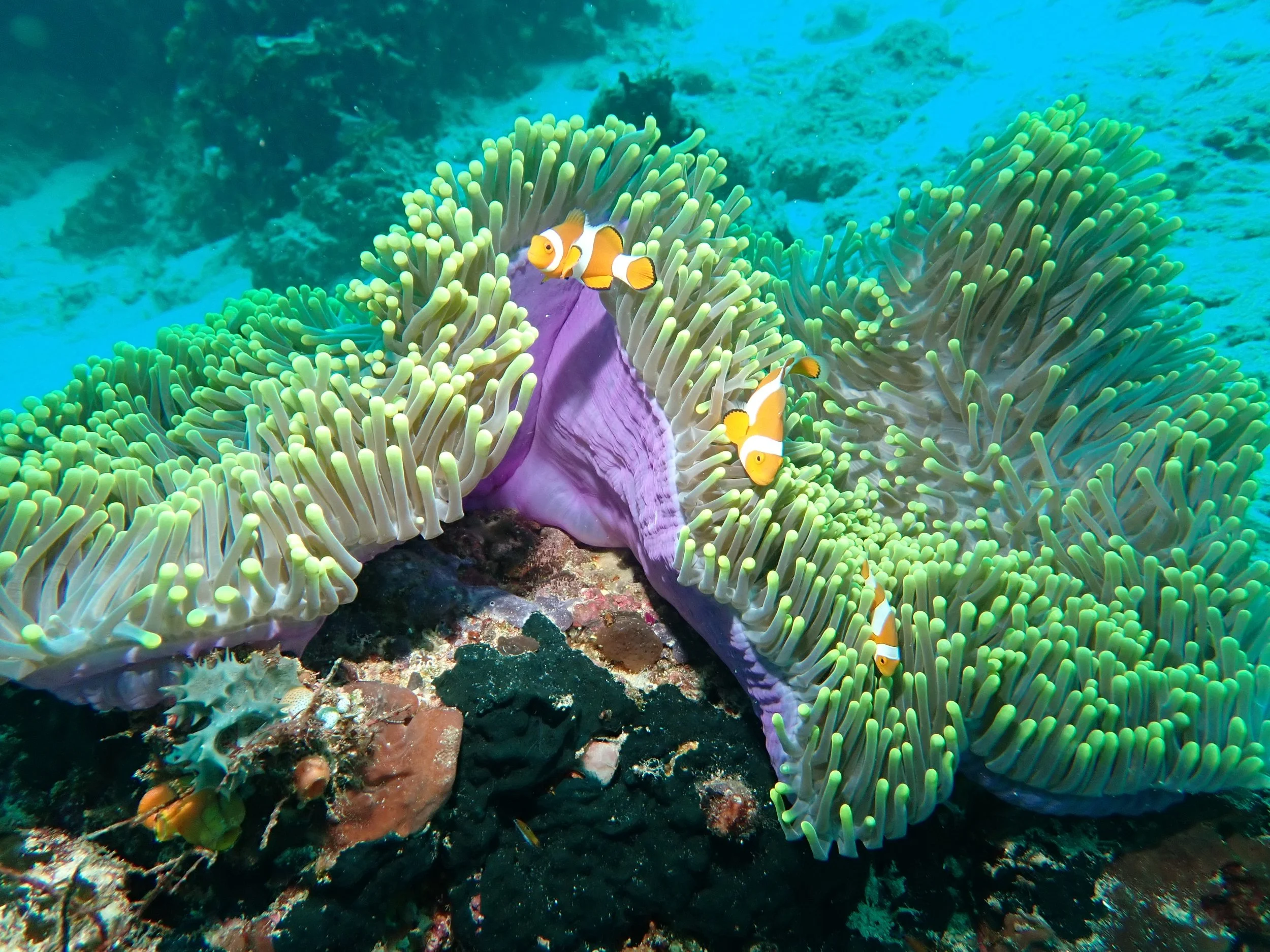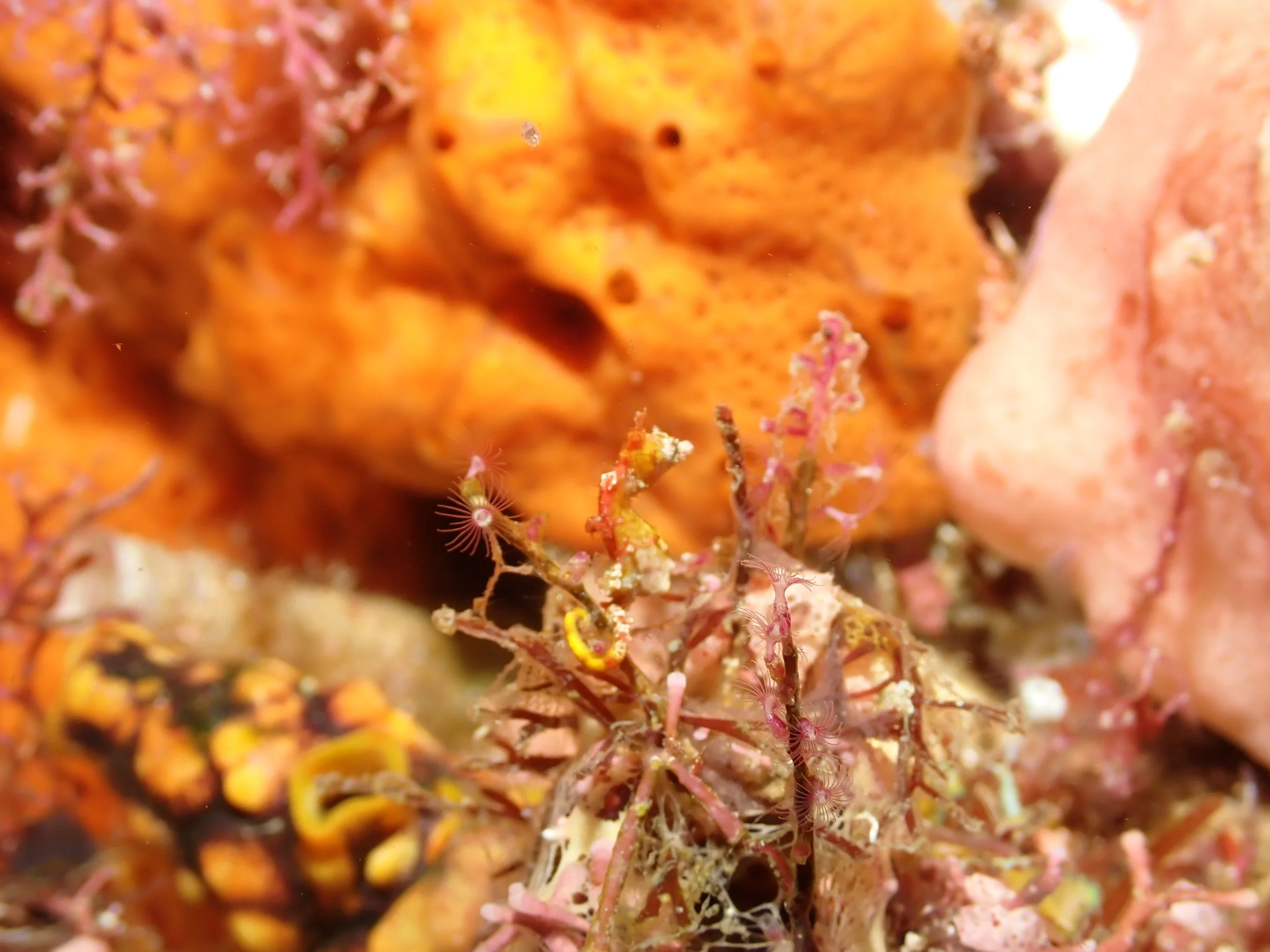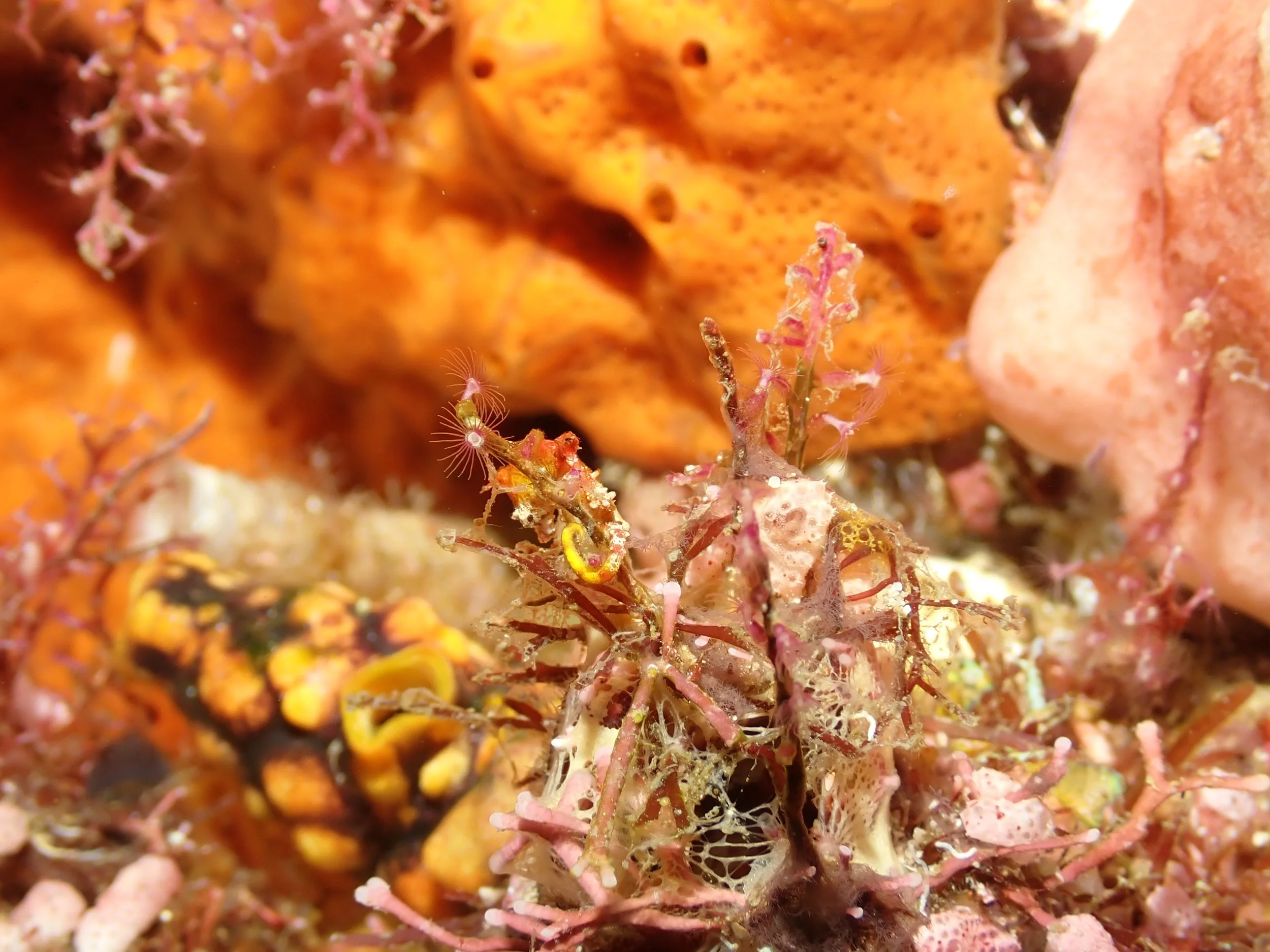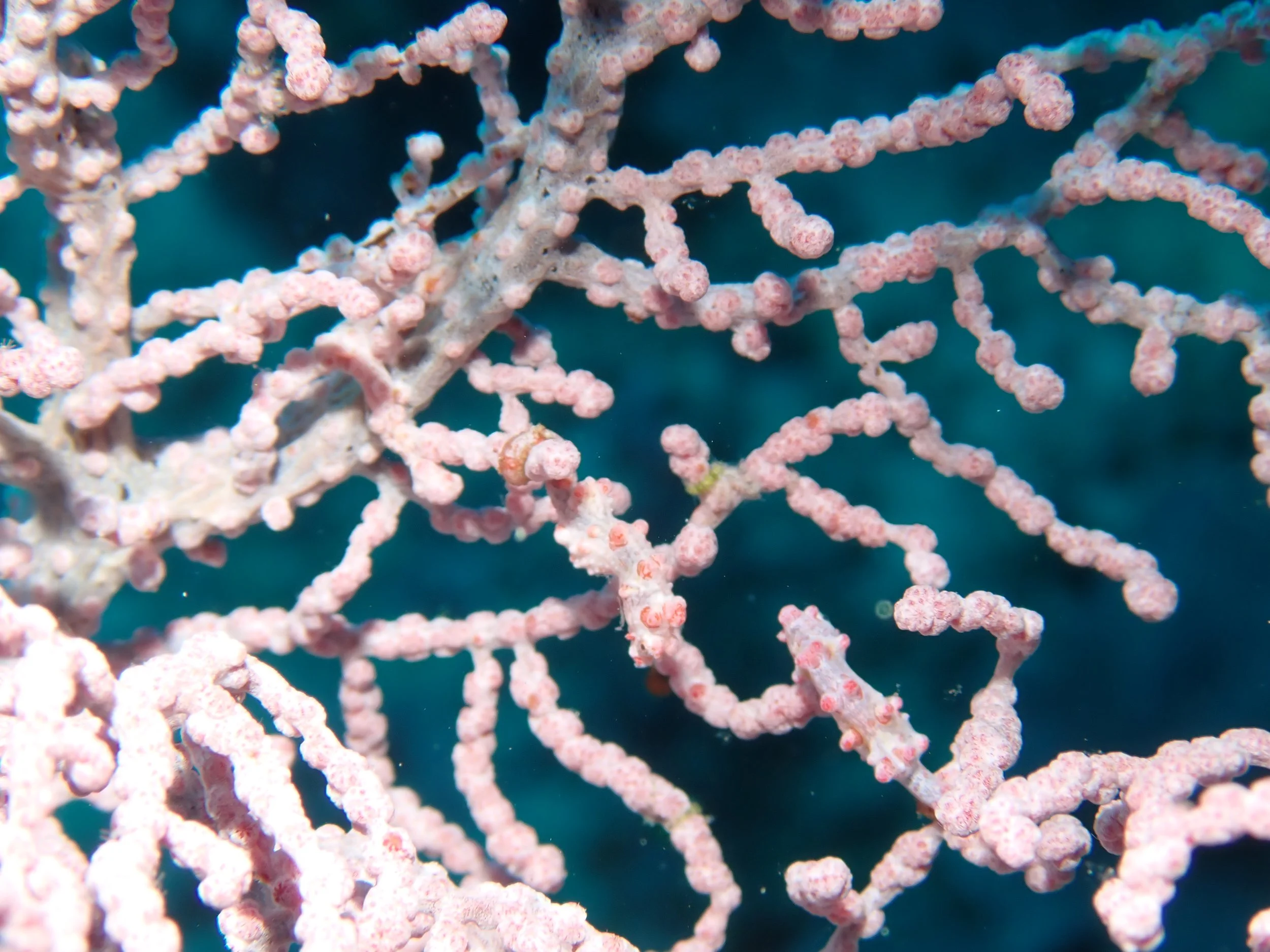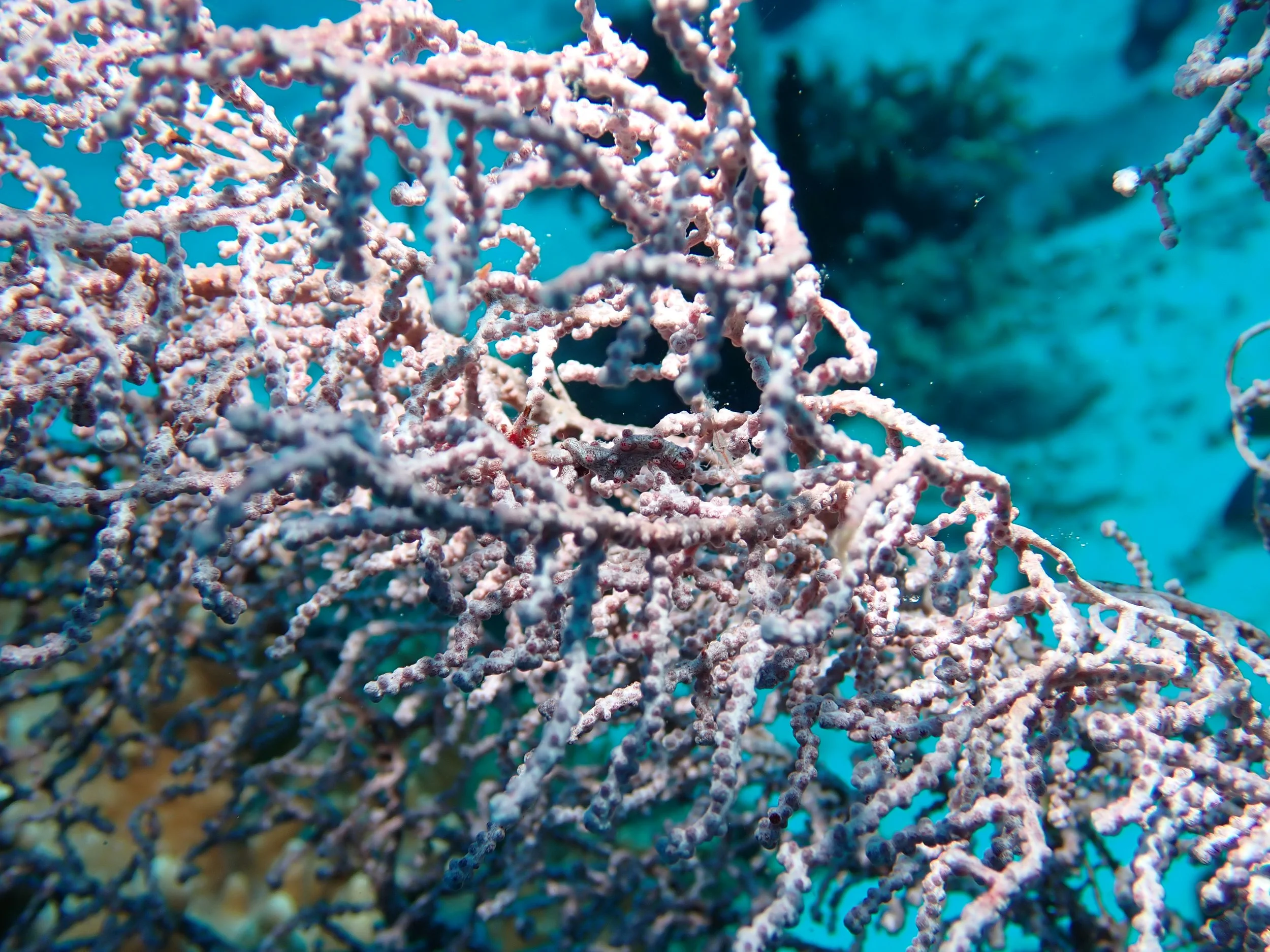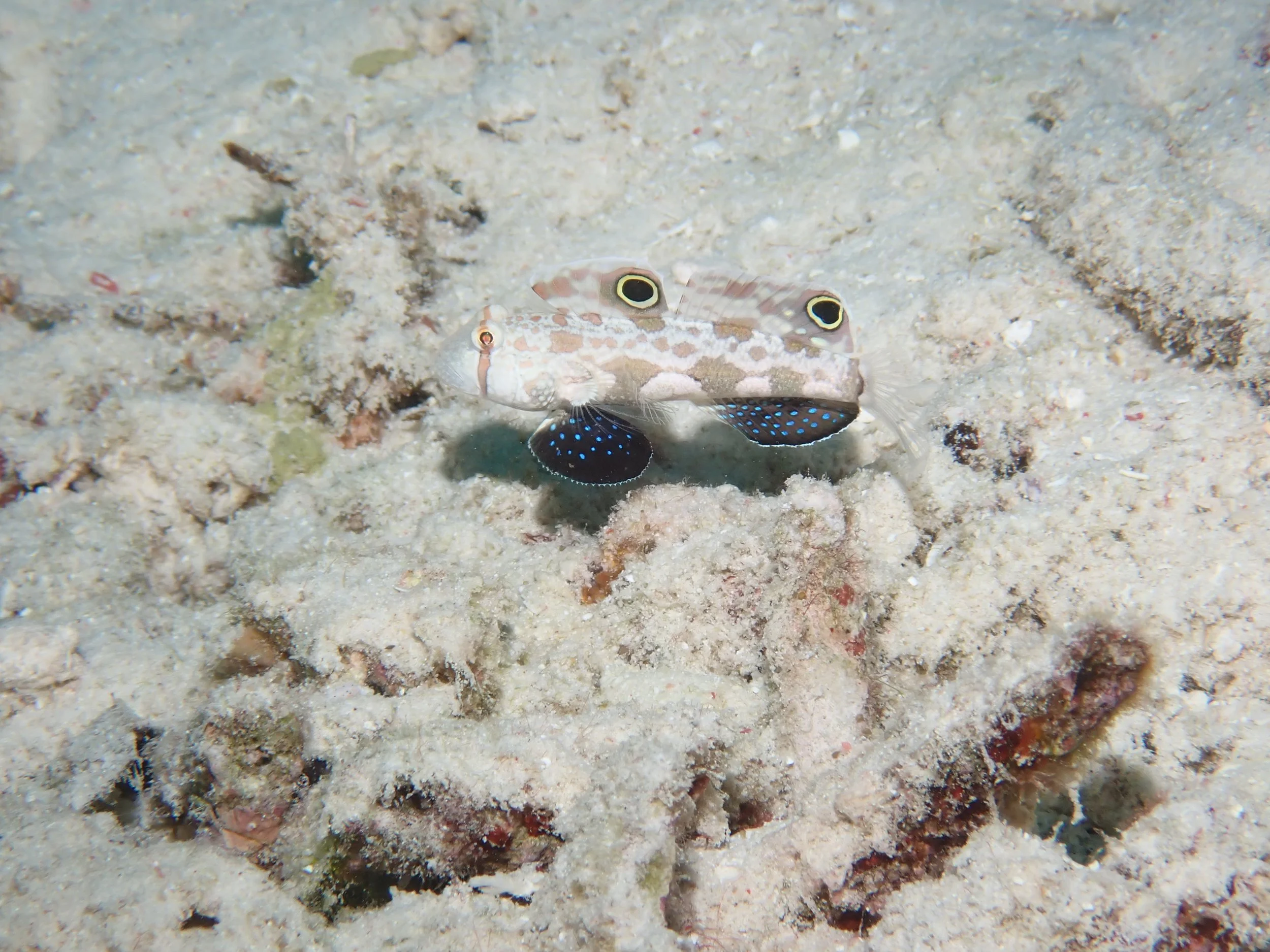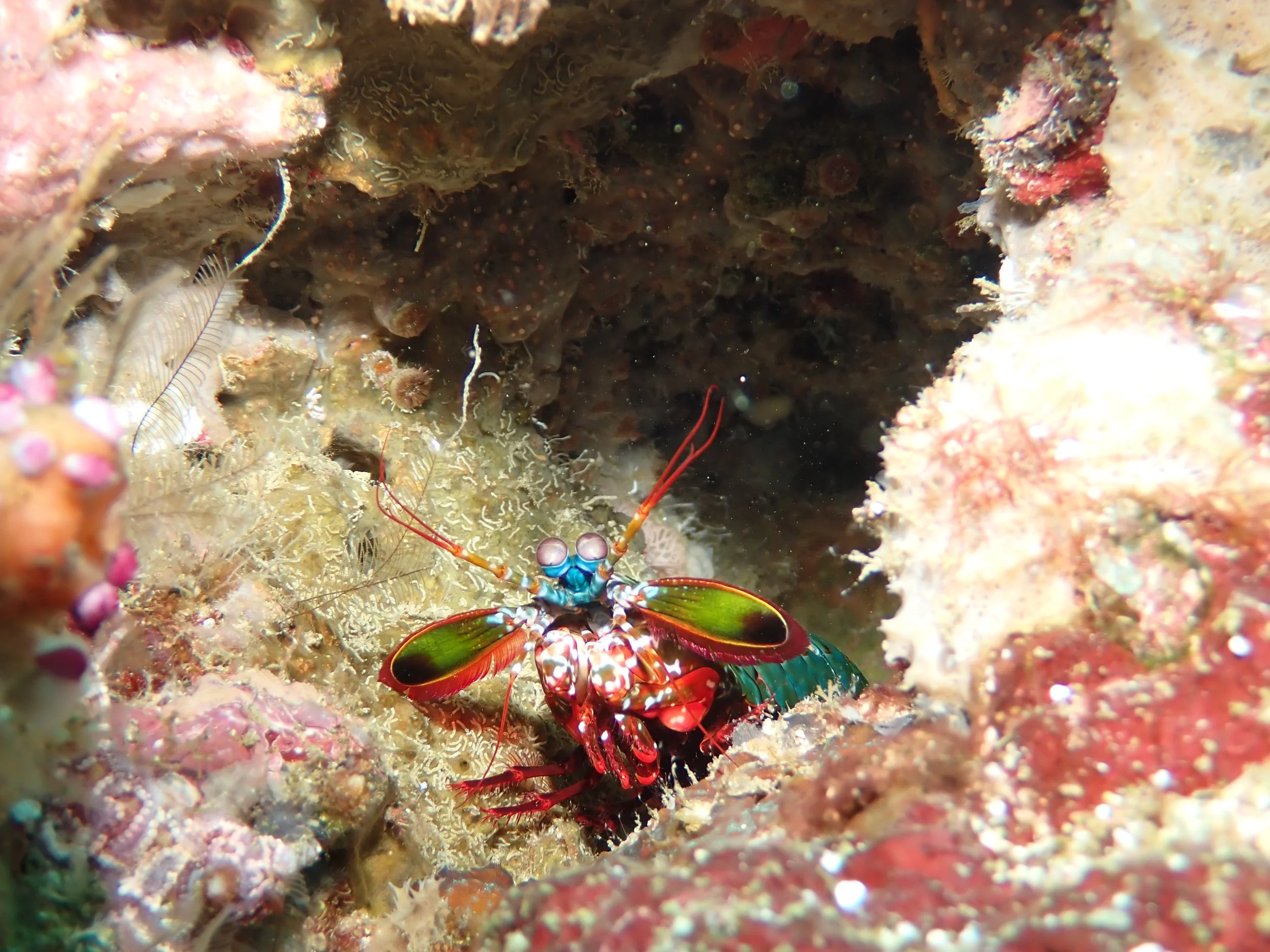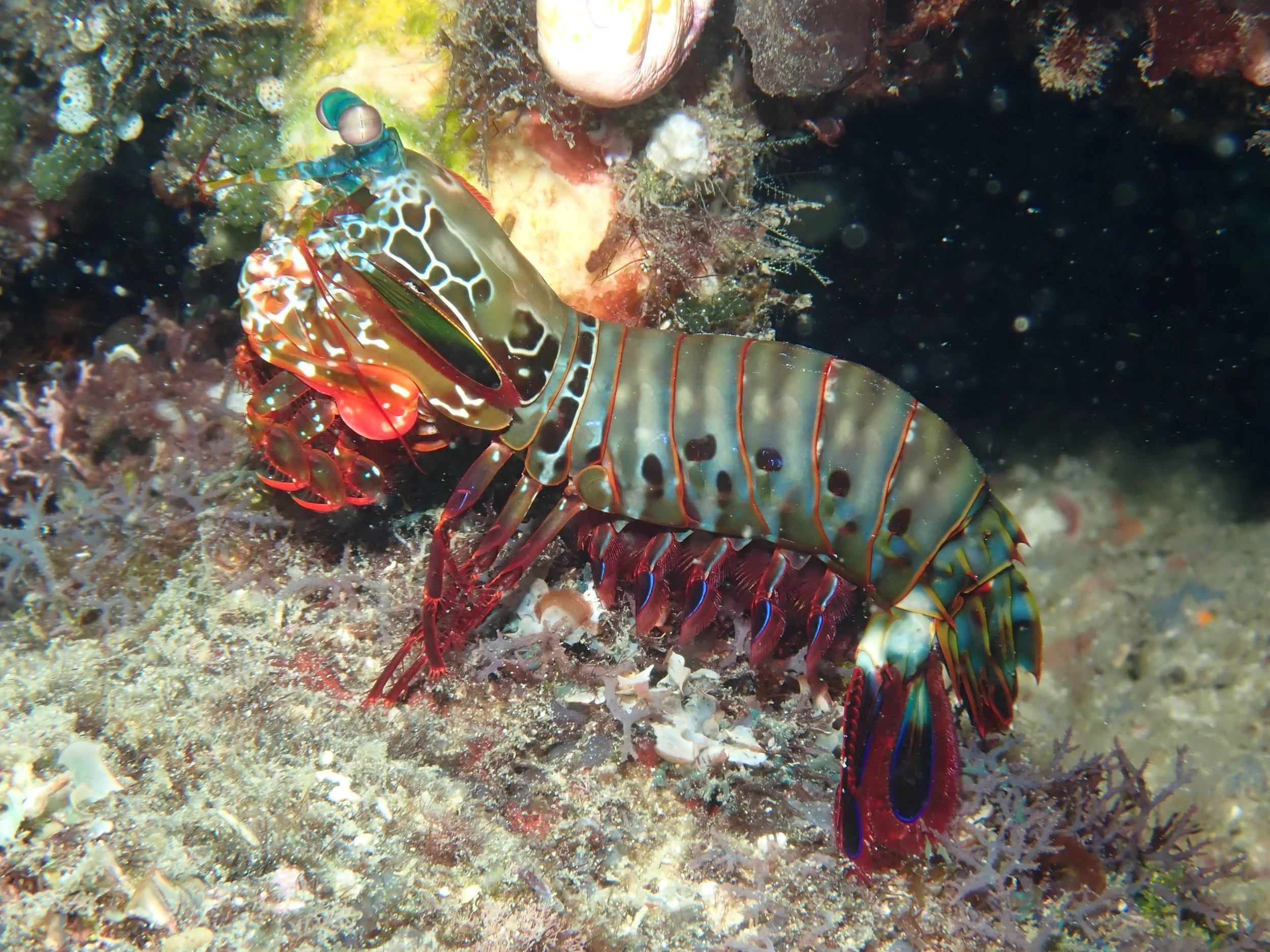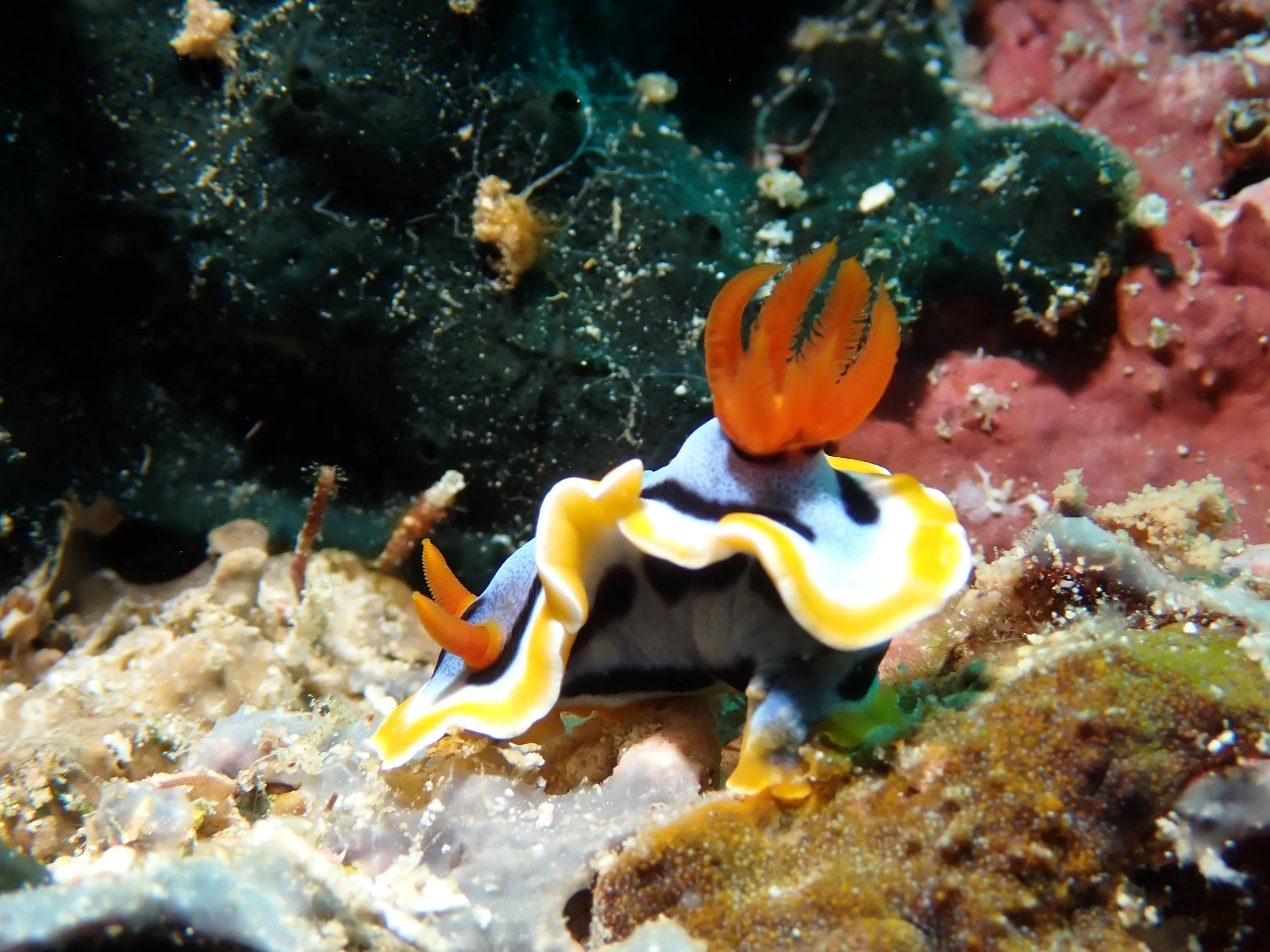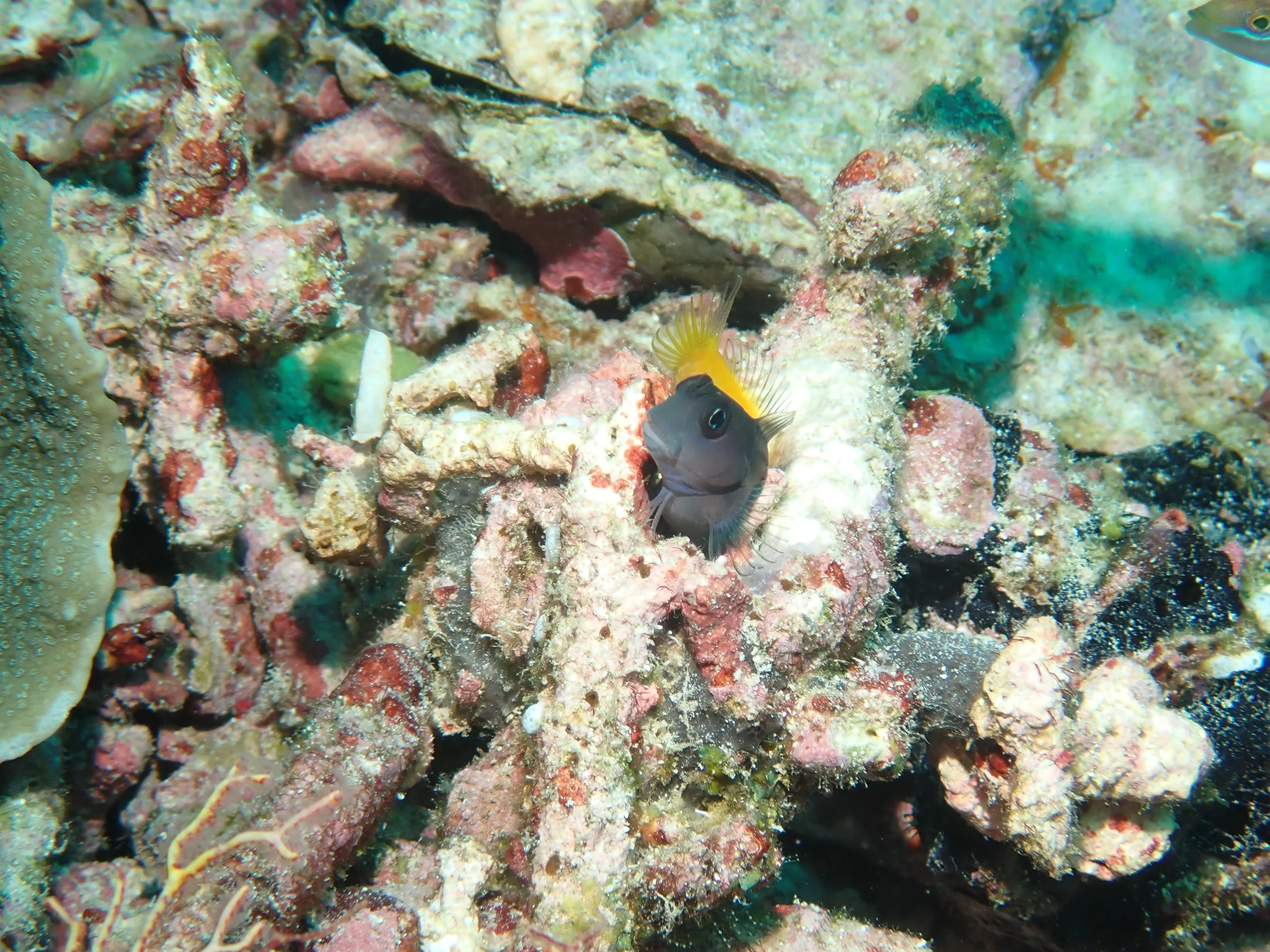Bhutan notes
There are so many little things about this fascinating country that I’d like to share with you, but I’m afraid I can’t weave them into a cohesive story. So if you’ll bear with me as I stop and start, I promise you won’t fall asleep. :)
As so many of our trips do, I tend to focus on the animals of a country. That beast above is the national animal, a Takin. We saw several of them at the Takin Reserve in Thimpu, the country’s capital.
There is a myth that they were created by a guru who put the skull of a goat on the skeleton of a cow, clapped his hands, and the takin was created. Takins are actually most closely related to sheep.
Cows and horses wander freely along and on roads everywhere, and drivers give them the right of way. There is very little honking in this country, and definitely never used to make the animals move. These wandering cows tend to be very skinny, with jutting hip bones.
At higher altitudes like 9,000+ ft, yaks are the animals in the roadway. To watch the next video, be sure to click the link at the end of the post to open it in your browser -
Black-necked cranes are held in high regard in Bhutan, and are referred to as “birds of heaven”. Their return to marshy plains in central Bhutan each October is celebrated as auspicious. I thought that they’d all be gone when we visited, as they tend to return to Tibet by the end of February, for breeding in the summer. I was thrilled to find a lone straggler still hanging out in central Bhutan, in the Tang Valley -
They stand almost 4 feet high and have a nearly 8 ft wingspan.
Besides yaks at higher altitudes, you can also find several species of monkeys. Gray Langurs have a striking appearance…
… and tails longer than their bodies. We found this troop enjoying fresh budding branches, as did the cow that took advantage of the broken ones the langurs tossed down -
Red-faced Macaques are much more common, and are found along roadways at elevations of 4-7,000 ft generally -
Now I’ll move on to buildings. There are numerous fortresses, temples, monasteries and nunneries scattered throughout the country, and seemingly all are perched rather high up, accessible only by horribly rutted and potholed dirt roads. Our guide was fond of saying “here’s another full body massage” as we were bounced and jostled in the car on yet another dirt or rocky road. The highest one we visited was outside of Bumthang and it sat at 11,500 ft. This was Tharpaling Monastery…
… and it is a monastic retreat…
… that gave great views of Chumey Valley and Bumthang, as well as the Himalayas -
The Babzur Nunnery was completed in 2020, and was just beautiful…
… with fresh, colorful paintings under the eaves (that we hadn’t seen anywhere else). The views of the surrounding hills and valleys were awesome -
Moving onto Dzongs (fortresses) - I had shown you the Punakha Dzong where the festival was held. The longest Dzong (interesting category!) in Bhutan is the Trongsa Dzong -
It was first built in 1674, and it was definitely showing its age -
The Wangdue Phodrang (another name for fortress) afforded me one of my favorite pictures from the trip, encompassing reflection, ancient building and misty hills in the background -
Stupas are important buildings to Buddhists, housing remains or relics of holy men or other important people. This is the National Memorial Stupa in Thimpu…
… erected by the third queen of Bhutan in 1974, in memory of her husband. You can see the size of it by noting the people walking around its base. People say prayers as they circumambulate around stupas and temples - always in a clockwise direction - and spin prayer wheels, again always clockwise. Here’s an illustrative video:
This activates auspicious energy, accumulating merit and benefitting all beings.
This stupa was probably my favorite because it is in the Nepalese style, with the eyes of Buddha…
… and it was where we finally saw rhododendrons.
Before we leave buildings, I must share with you the amazing bamboo scaffolding we saw all over, including the largest cities -
would you climb that, or stand up there to paint the eaves??
I started to keep going with this post, and then realized that your eyes may be glazing over. You need a break, so I’ll pause here, and start a new post another day.
This last picture was taken at the Chelela Pass at just over 13,000 ft (the highest motorable pass in the country), and it shows how heavily forested the hills are. Bhutan mandates in its constitution that 60% of its land will remain under forest cover forever. Currently, 72% of the country’s land is forested.
